Circumstances have evolved, but USA-Mexico remains a special rivalry

SAN ANTONIO – A sellout crowd of around 65,000 will fill the Alamodome here on Wednesday for a weeknight exhibition game between two teams missing many of their best players. That’s the power of USA-Mexico.
“It’s like a game in New York City under the bright lights. It brings the media out. Everything’s a bit highlighted. It’s just a special game. It really is,” U.S. midfielder Kyle Beckerman said. “It brings out the best in both countries and it just seems to make it an exciting game, no matter what.”
Beckerman’s U.S. and Real Salt Lake teammate, goalkeeper Nick Rimando, said prior to practice on Monday that he already could feel the difference. USA-Mexico is no ordinary game, even when the schedule, stakes and rosters suggest it should be.
Amid new faces, unexpected long-term USMNT players keep returning
“It’s the biggest game, for sure—for us, for sure. Coming into the game, the lead up to this game, has always been about how big this game is and these two countries in the past—the games, the rivalry, the history between these two,” he said. “It gets the juices flowing really quick. I think the last meeting, it was in Arizona [in April 2014], you could just feel it before you even get to the stadium. When you get to the stadium, you feel it even more.”
If the USA-Mexico rivalry still generates that sort of buzz for the players, it does so under evolved circumstances. Rimando represents part of that evolution. The Inland Empire-born son of a Mexican father, Rimando is one of seven players on the current 22-man U.S. roster who theoretically could have played for Mexico. Defenders Omar Gonzalez, Greg Garza and Ventura Alvarado, plus midfielders Joe Corona and Miguel Ibarra, each have Mexican parents. Goalkeeper William Yarbrough is the Mexican-born son of Americans.
The increased blending of families and cultures on either side of the border, not to mention the sport’s rising popularity in the U.S., has resulted in greater parity between the countries and more integration between American and Mexican soccer. U.S. players once were a rarity in the Mexican professional ranks. Now, there are more of them in Liga MX than in any other top-tier circuit outside MLS. Americans have won championships and a goal scoring title (Herculez Gomez, 2010) there. U.S. youth players are scouted by Mexican academies, and MLS clubs are gradually becoming more competitive against Liga MX rivals.
USMNT roster for Mexico friendly offers opportunity for younger players
In other words, in both countries, the soccer played on the other side of the border doesn’t feel nearly as foreign as it used to.
“We are very proud of them, that they stand in their position in the Liga MX … having them now as part of our program means a lot to us,” U.S. coach Jurgen Klinsmann said here regarding his Mexican-based players. “They’re fully integrated. They’re part of the group, absolutely no problem at all.”
The ability of American players to survive and thrive in Liga MX is testament to the improvement and increased professionalism of the sport in the U.S., which marks the biggest change in the rivalry. As recently as a quarter century ago, USA-Mexico was no contest and American soccer was an afterthought. At the start of the 1990s, the U.S. national team had a 2-23-3 record vs. Mexico. But the Americans’ historic qualification for the 1990 World Cup, from which Mexico was banned, altered the landscape.
1991 | USA stuns Mexico in Gold Cup semifinal en route to first regional title. |
|---|---|
1995 | USA beats Mexico in penalty shootout in Copa America quarterfinals in Uruguay. |
1997 | 10-man USA earns 0-0 World Cup qualifying draw at Estadio Azteca. |
2001 | USA beats Mexico 2-0 in World Cup qualifier in Columbus, the first of four straight Dos-A-Cero WCQ results at Crew Stadium. |
2002 | USA beats Mexico 2-0 in World Cup round of 16 in South Korea. Brian McBride, Landon Donovan score the goals. |
2007 | Benny Feilhaber's stunning volley lifts USA to 2-1 win over Mexico in Gold Cup final. |
2009 | In one of a series of violent encounters throughout the years, Rafa Marquez goes studs up on Tim Howard, gets sent off. |
2011 | Mexico routs USA in Gold Cup final, which ends up being Bob Bradley's last game as USA manager. |
2012 | Michael Orozco's goal delivers USA its first win at Estadio Azteca. |
2013 | With its rival's fate in its control, USA rallies to beat Panama, keeping Mexico alive in 2014 World Cup qualifying. |
The following year, a more confident U.S. stunned El Tri by the soon-to-be-familiar score of 2-0 in the CONCACAF Gold Cup semifinals (goals by John Doyle and Peter Vermes). Mexico coach Manuel Lapuente was fired, the U.S. went on to win its first continental title and a rivalry was born.
The stakes at that point were clear. For the U.S., Mexico represented the clear CONCACAF standard. El Tri was the benchmark. To compete in the world’s game, Americans first had to figure out how to compete in their own backyard.
For Mexico, the pitch represented one meaningful place where domination over its powerful neighbor was assured. It was a matter of identity and self esteem. Mexico would fight fiercely to hold on to its dominant position.
Twenty-five years later, the Yanks and El Tri are relative equals. There is a natural ebb and flow to the rivalry. If one side has the upper hand, roles soon will reverse. Since 2000, the U.S. is an impressive 12-5-5 against El Tri, and the Americans are unbeaten at 2-0-3 under Klinsmann.
Mexico has won six Gold Cup titles since the CONCACAF championship was expanded and rebranded in 1991 to the Americans’ five. Bragging rights are split. Mexico has won four of the five Gold Cup finals between the nations. But the U.S. won the biggest game of all, the 2002 World Cup round-of-16 showdown in South Korea.
That history and those meaningful, and occasionally violent, matches add to the lore and inject gravitas into subsequent matchups. You never know when the next iconic moment or controversy will occur.
“What’s unique about U.S.-Mexico at this point, especially for this generation of players, is that we’ve grown up with this game,” said U.S. veteran Michael Bradley, who has scored four goals against Mexico. “We can remember, at least on the American side, we remember [qualifiers] in Columbus. We can remember the game in the World Cup in 2002. I’ve been lucky enough to be part of a bunch, and so it means a lot. These are special games … There’s a buzz and an excitement that surrounds these games that’s different than any other. As players, we look forward to those.”
Different, yes. But does it retain the same meaning as American ambitions and benchmarks evolve? Two decades ago, it was about matching Mexico. Now, Klinsmann has set a different challenge. From the start, the ambitious U.S. manager has asked his players to demand more of themselves and their team. Staying static and worrying about backyard bragging rights won’t move the program forward. Chasing, emulating and then overhauling the countries that contend for World Cups will.
So the question is, with five Gold Cups in the U.S. trophy case and three second-round berths in the past four World Cups tantalizing those who want to push the sport further, does Mexico still represent the benchmark? Does it still mean as much to beat a team you now defeat more often than not?
To Klinsmann and his players, it does—but for different reasons. USA-Mexico has evolved. In the early days of the rivalry, it was about closing the gap and gaining respect. Now, the massive reduction in that gap, both on the field and culturally, creates a sense of familiarity that continues to fuel the rivalry.
The Year in Photos: U.S. Soccer in 2015
U.S. U-20 vs. El Salvador, January 24
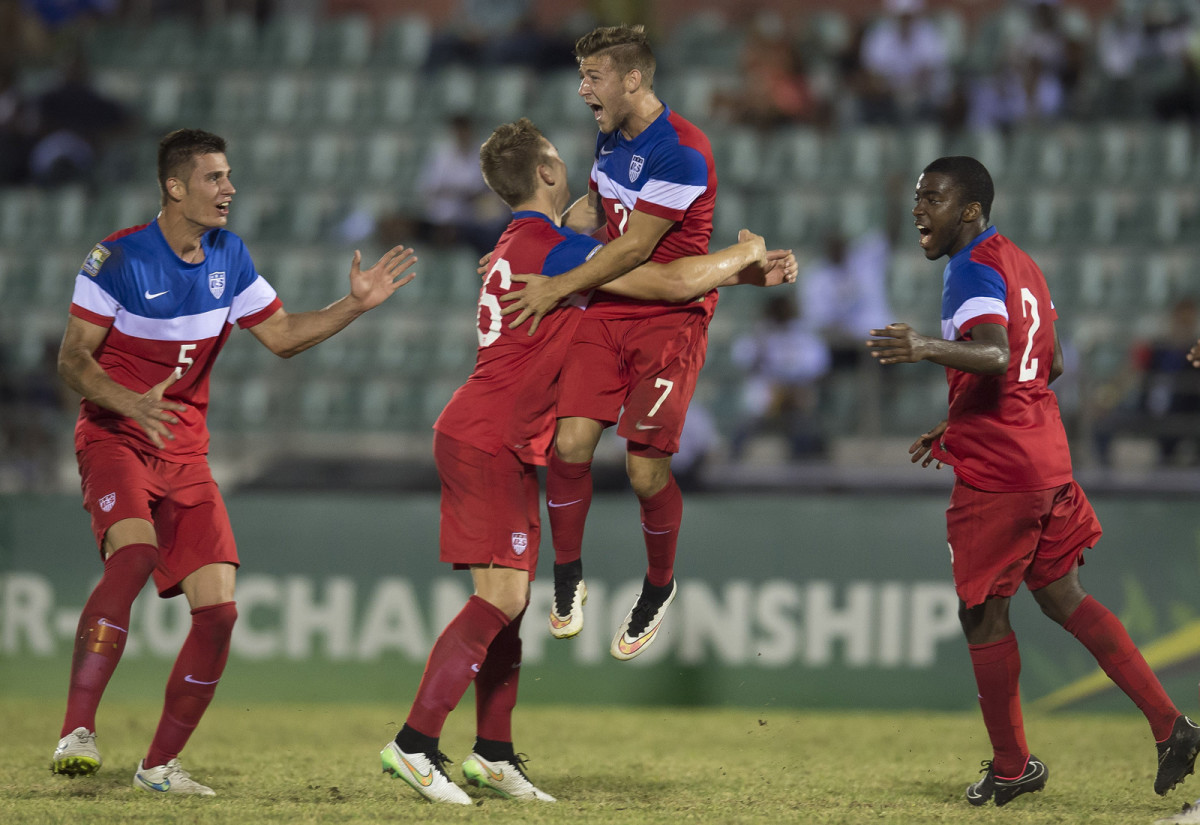
Paul Arriola (7) celebrates his goal in a World Cup qualifying playoff match vs. El Salvador. The U.S. U-20s cemented their place in the World Cup with a 2-0 win. They drew host New Zealand, Ukraine and Myanmar in their summer group.
USMNT vs. Chile, January 28
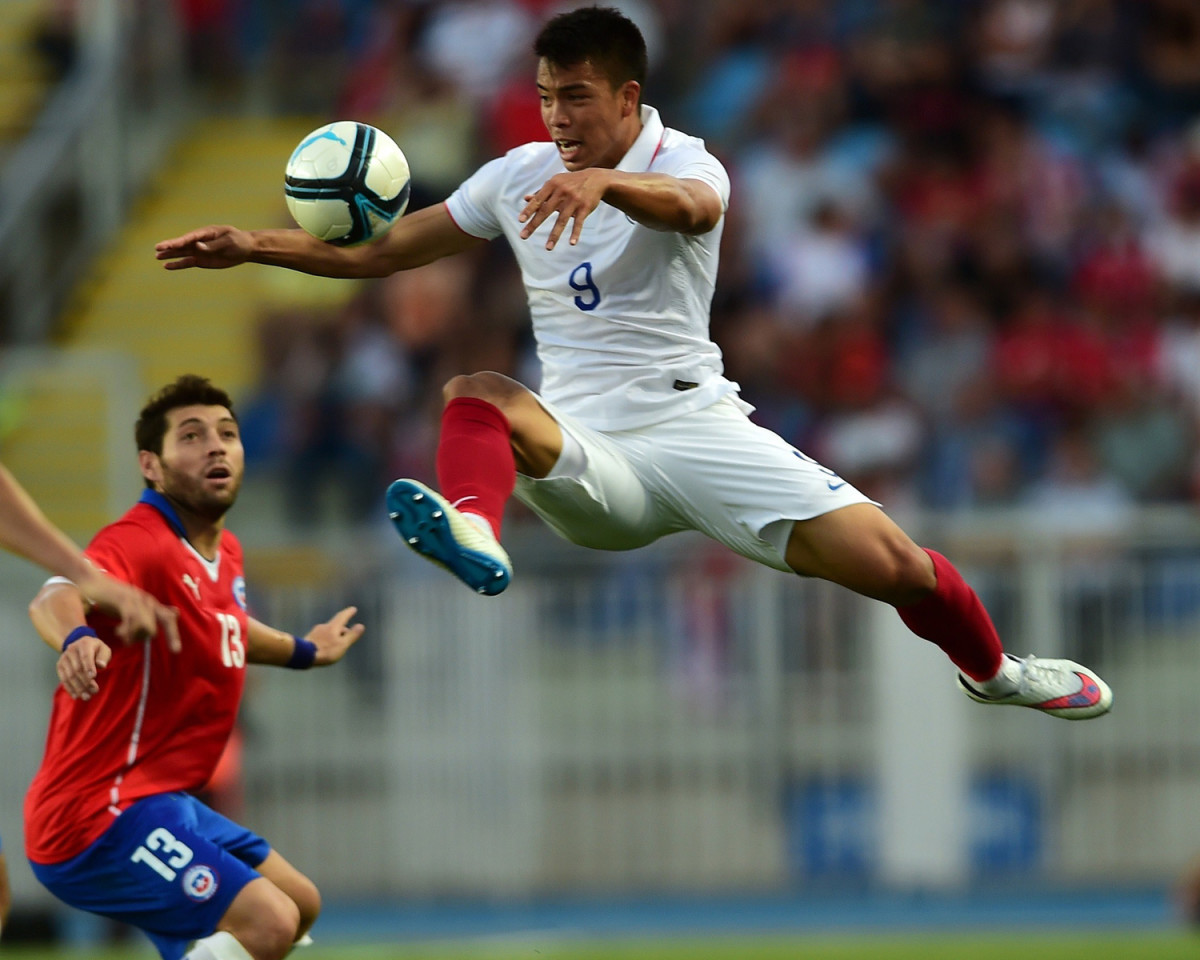
Bobby Wood flies high in the USA's 3-2 loss to Chile, which opened the calendar year for the national team. Brek Shea and Jozy Altidore scored in the loss.
USMNT vs. Panama, February 8
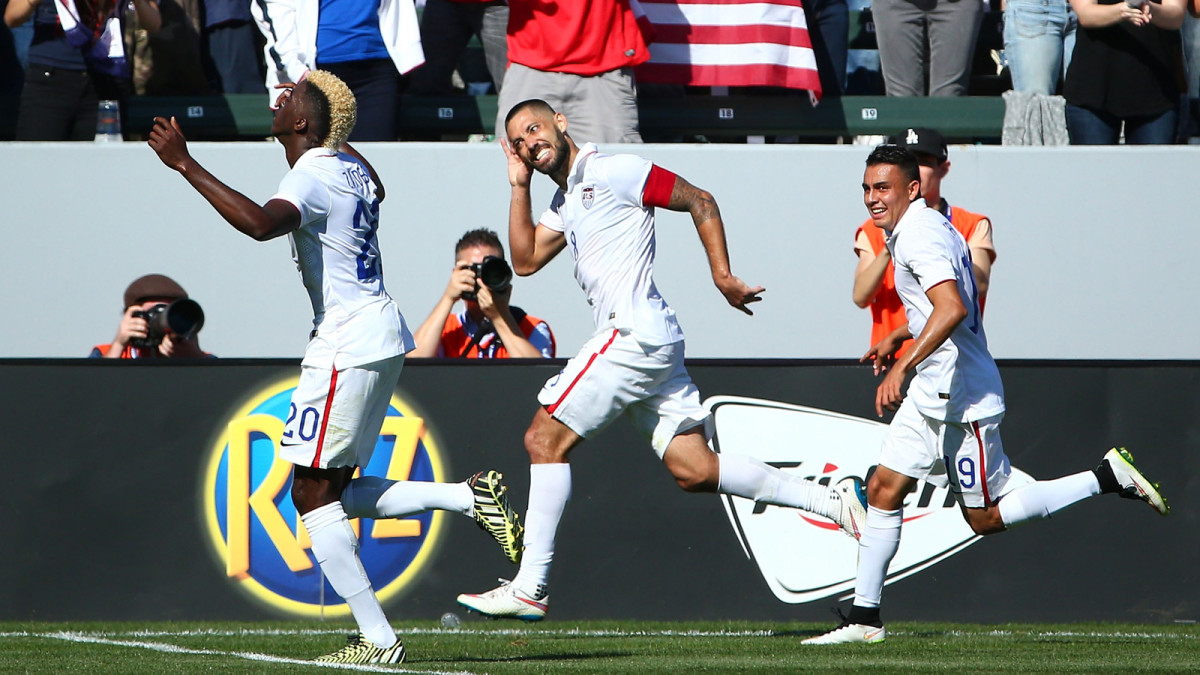
Gyasi Zardes and Clint Dempsey celebrate after combining for a goal against Panama at StubHub Center to cap off winter training camp with a 2-0 victory.
USWNT vs. France, February 8

Lori Chalupny (left) and the USWNT had a tough time keeping pace with Jessica Houara (center) and France in a 2-0 loss in a friendly in Lorient. The match was the first of two played without suspended goalkeeper Hope Solo.
USWNT vs. England, February 13
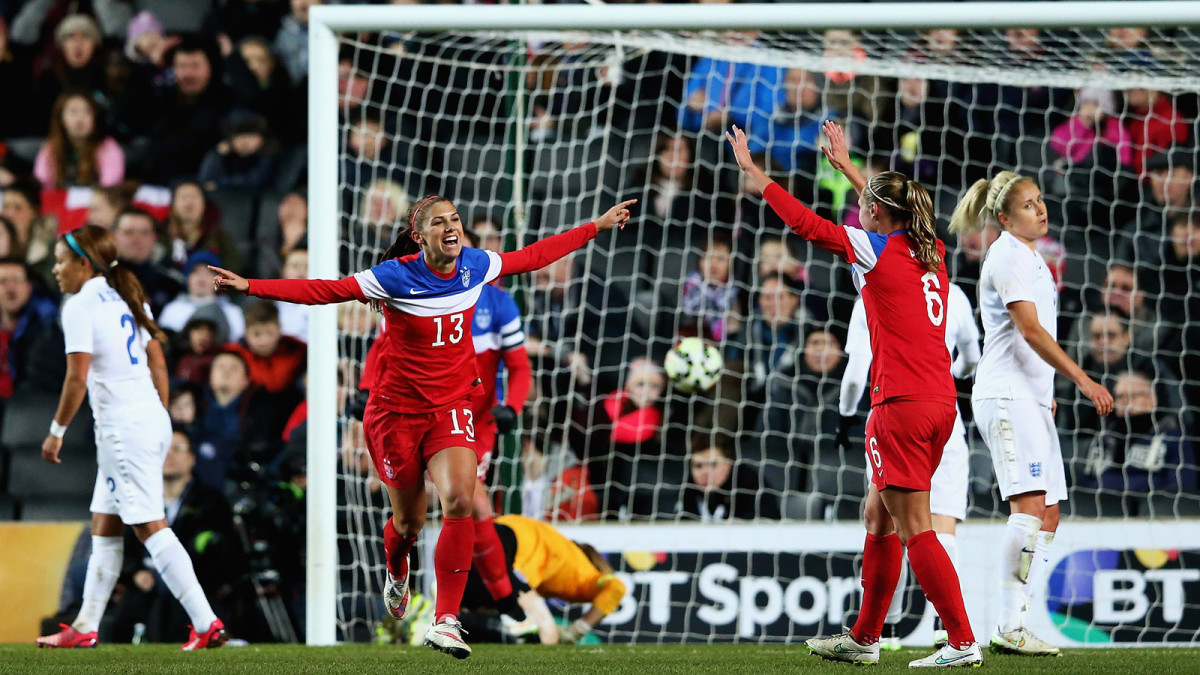
Alex Morgan celebrates scoring the lone goal in the USWNT's 1-0 win over England in a friendly at Stadium mk in Milton Keynes.
USWNT vs. Norway, March 4
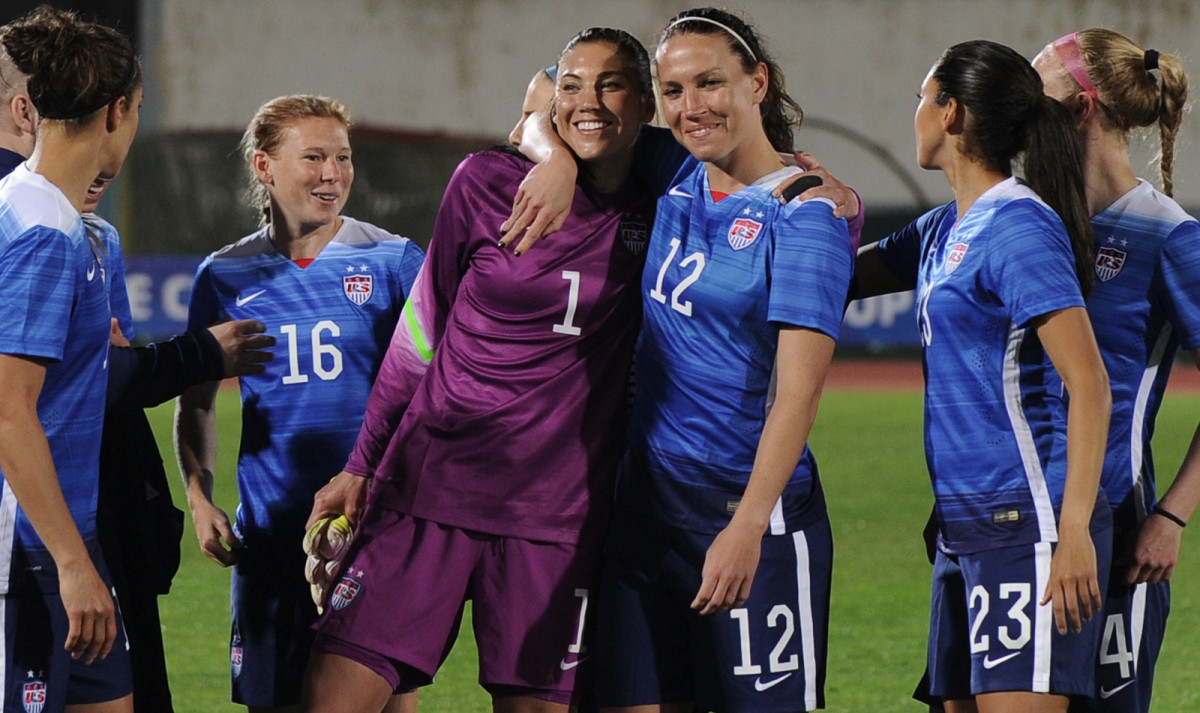
The USWNT opens the Algarve Cup with a 2-1 win over Norway, marking Hope Solo's return from a 30-day suspension with a come-from-behind victory. Carli Lloyd scored both goals for the Americans.
USWNT vs. Switzerland, March 6
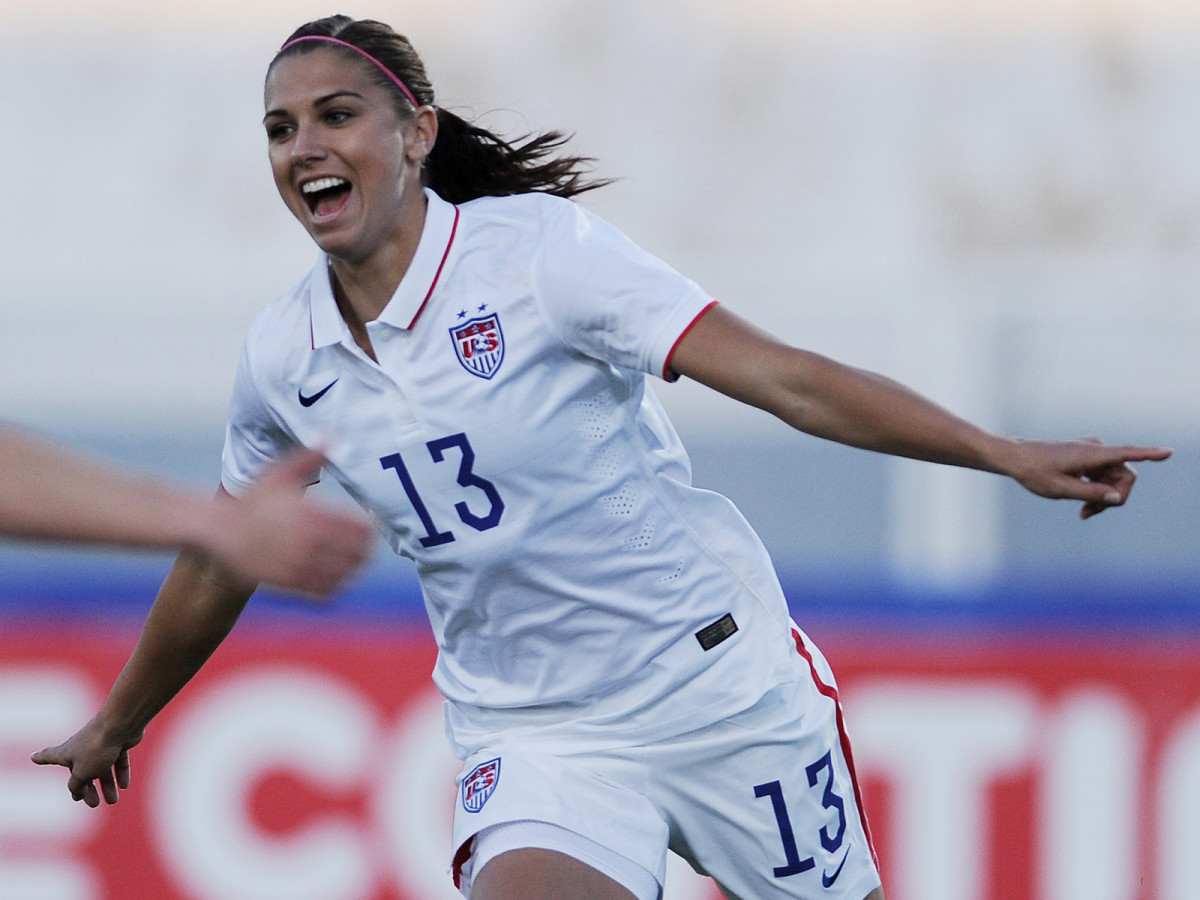
Alex Morgan celebrates her goal in the USWNT's 3-0 win over Switzerland in the Algarve Cup group stage.
USWNT vs. Iceland, March 9
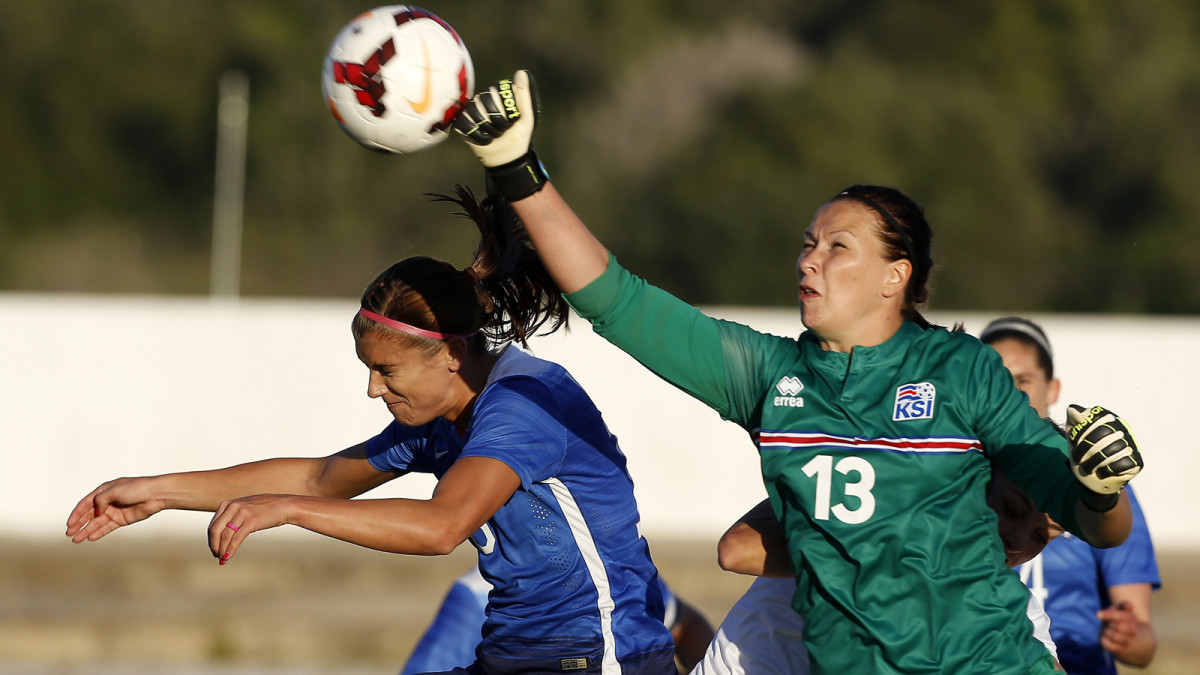
Alex Morgan and the USWNT were frustrated by Iceland, held to a 0-0 draw to wrap up group play at the Algarve Cup. The result was still enough to put the Americans in the final against France.
USWNT vs. France, March 11
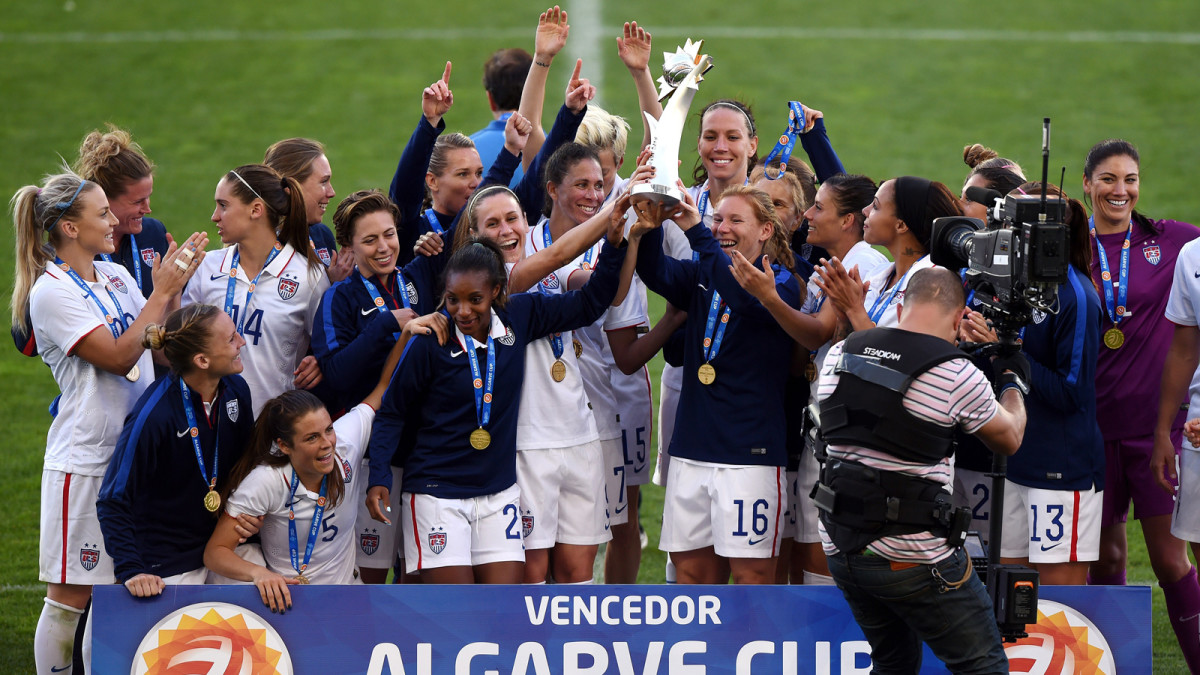
The U.S. women's national team celebrates winning the Algarve Cup after a 2-0 triumph over France. Julie Johnston and Christen Press scored, and Hope Solo saved a penalty kick.
U.S. U-17 vs. Jamaica, March 15
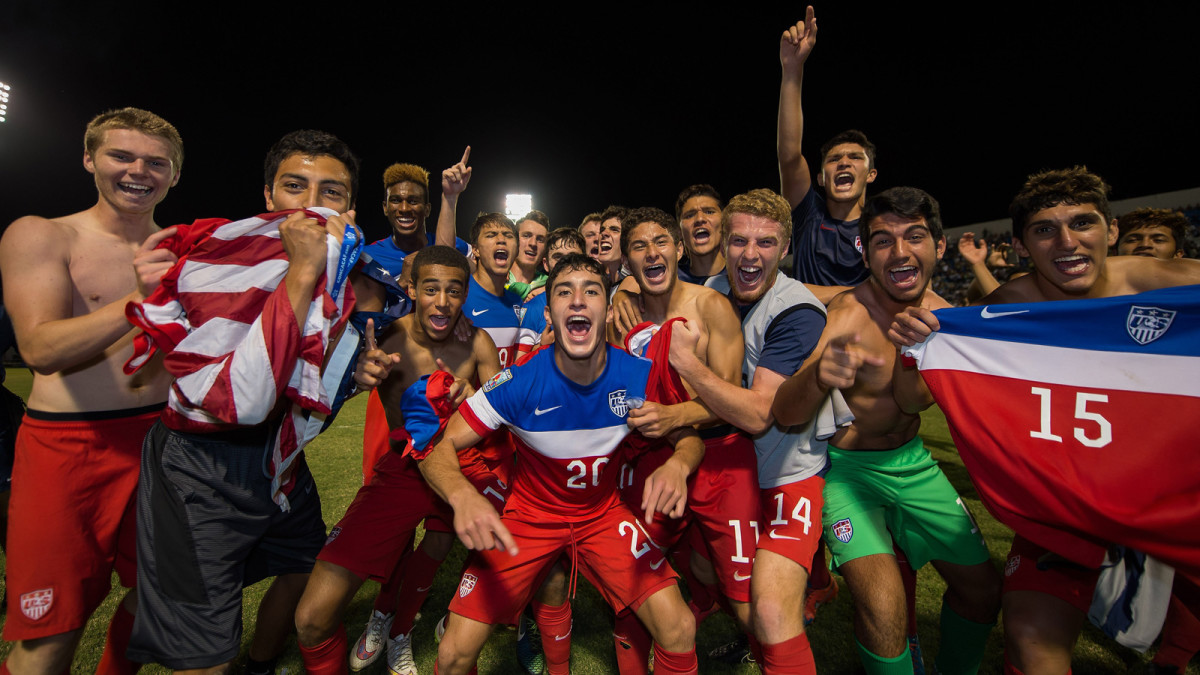
The U.S. U-17 national team celebrates qualifying for the FIFA U-17 World Cup after defeating Jamaica on penalty kicks following a 0-0 draw in a playoff match.
USMNT vs. Denmark, March 25
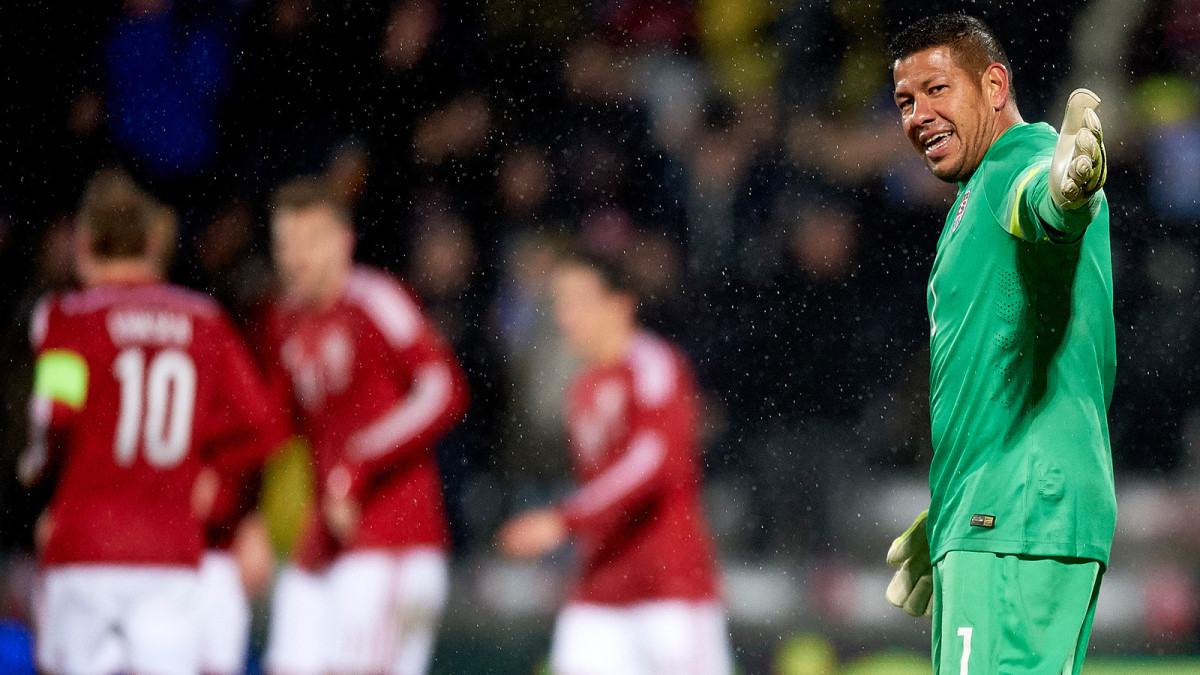
U.S. goalkeeper Nick Rimando expresses his frustration after one of Nicklas Bendtner's three goals in Denmark's 3-2 win over the Americans. Jozy Altidore and Aron Johannsson scored for the USA.
USMNT vs. Switzerland, March 31
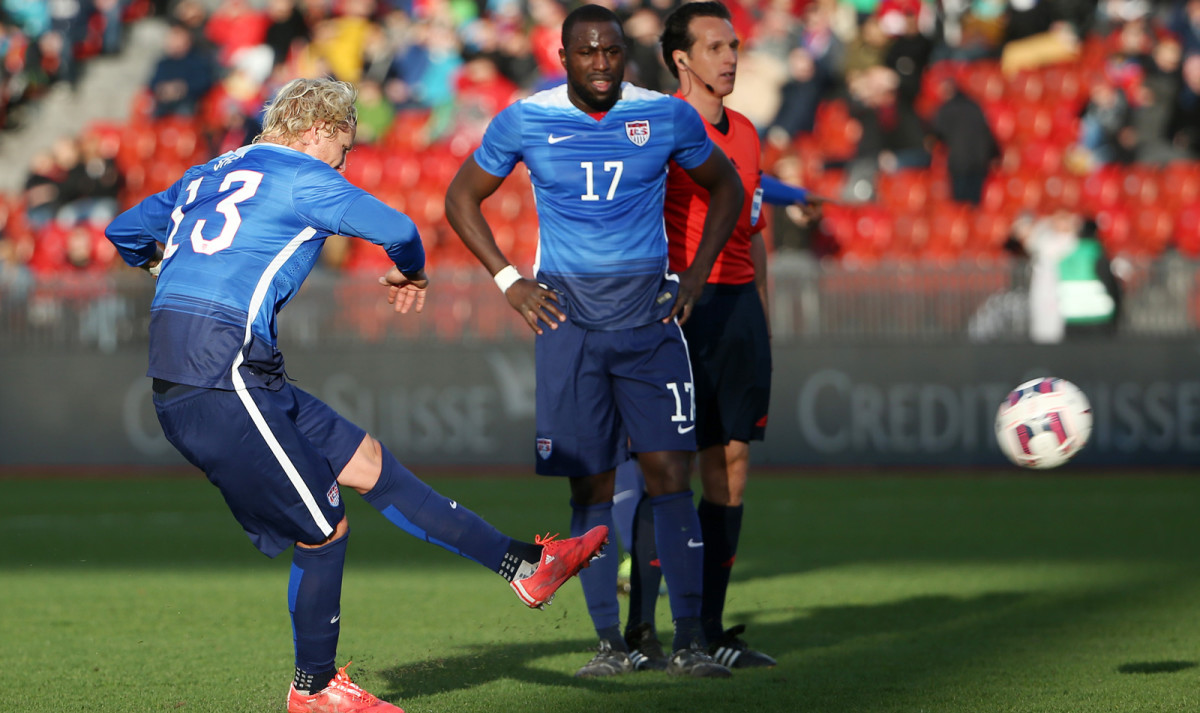
Jozy Altidore watches as Brek Shea hits a perfect free kick to put the USA on the board against Switzerland. The Americans settled for a 1-1 draw.
USWNT vs. New Zealand, April 4
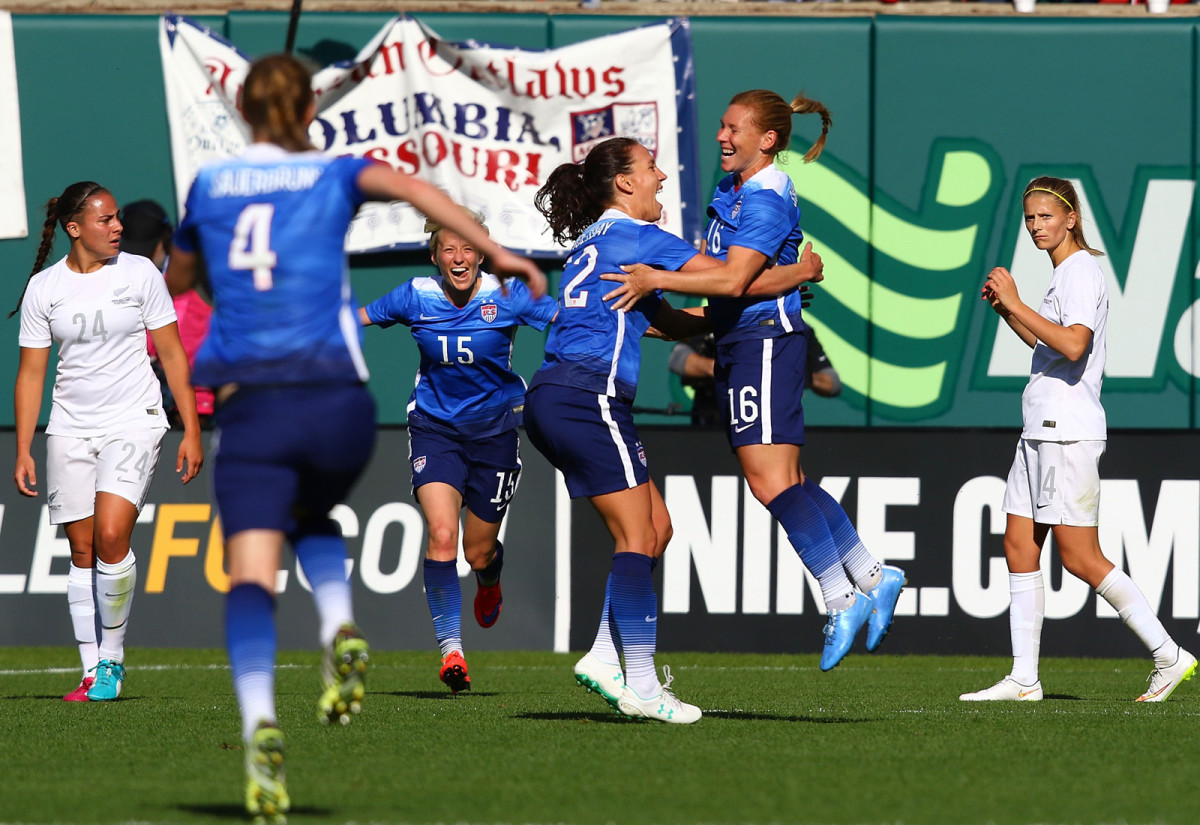
Lori Chalupny (16) celebrates her goal vs. New Zealand with Lauren Holiday at St. Louis's Busch Stadium. The goal opened the floodgates for a late outburst en route to a 4-0 U.S. victory in front of more than 35,000 fans.
USMNT vs. Mexico, April 15
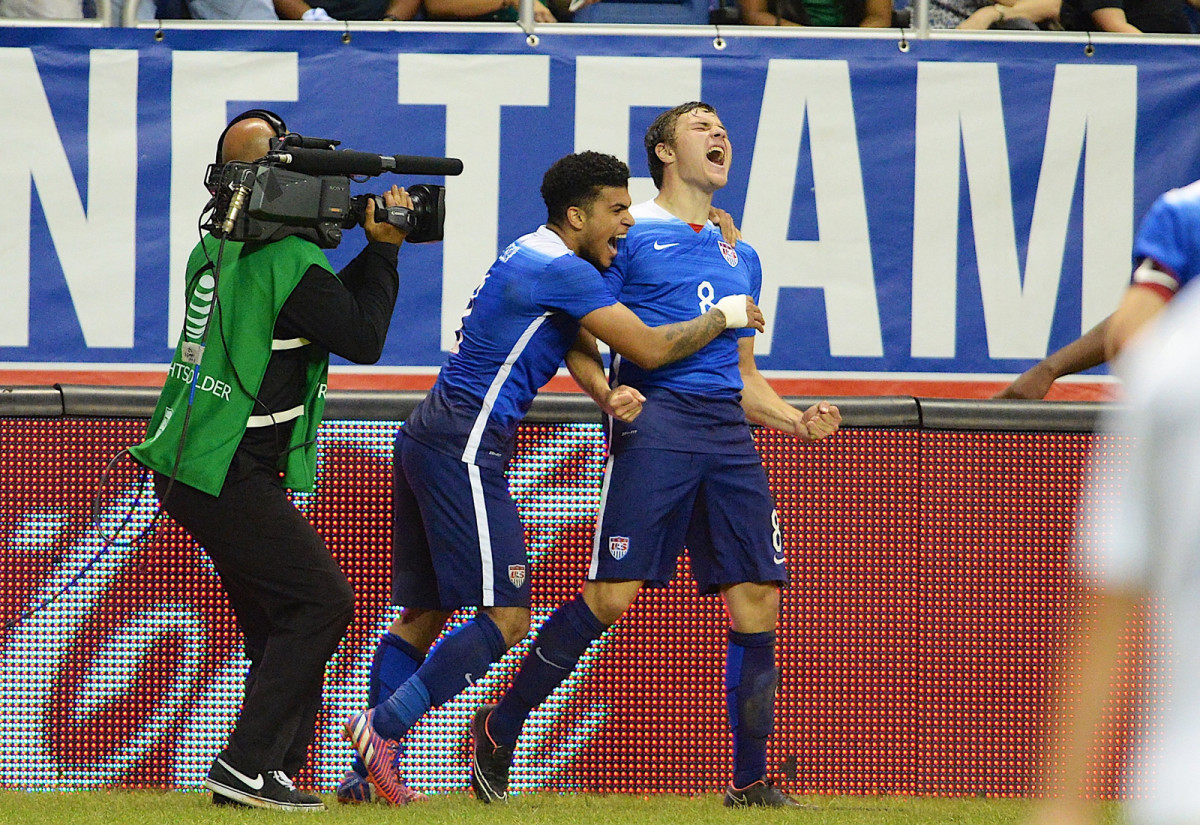
Jordan Morris etched his name in U.S.-Mexico lore, as the Stanford University forward scored in his first senior national team start to break a scoreless draw against El Tri at the Alamodome.
USMNT vs. Mexico, April 15
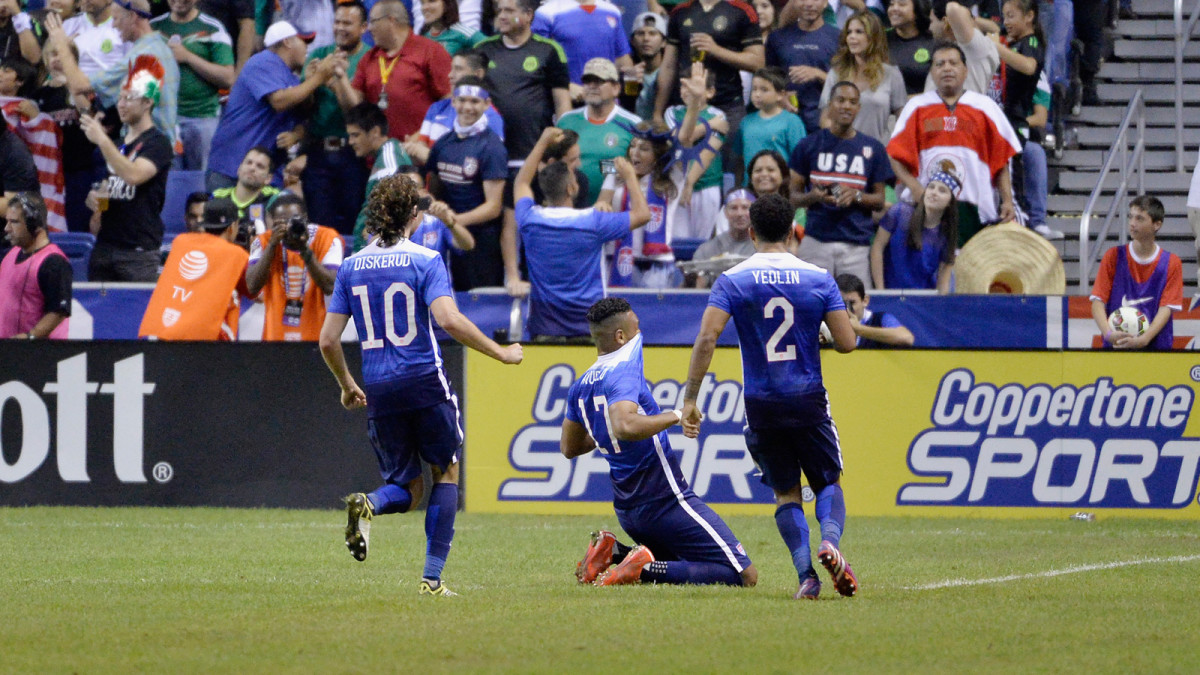
Juan Agudelo collapses to the ground in celebration after his goal at the Alamodome gave the USA a familiar lead over Mexico: Dos-a-Cero.
U.S. U-23 vs. Mexico, April 22
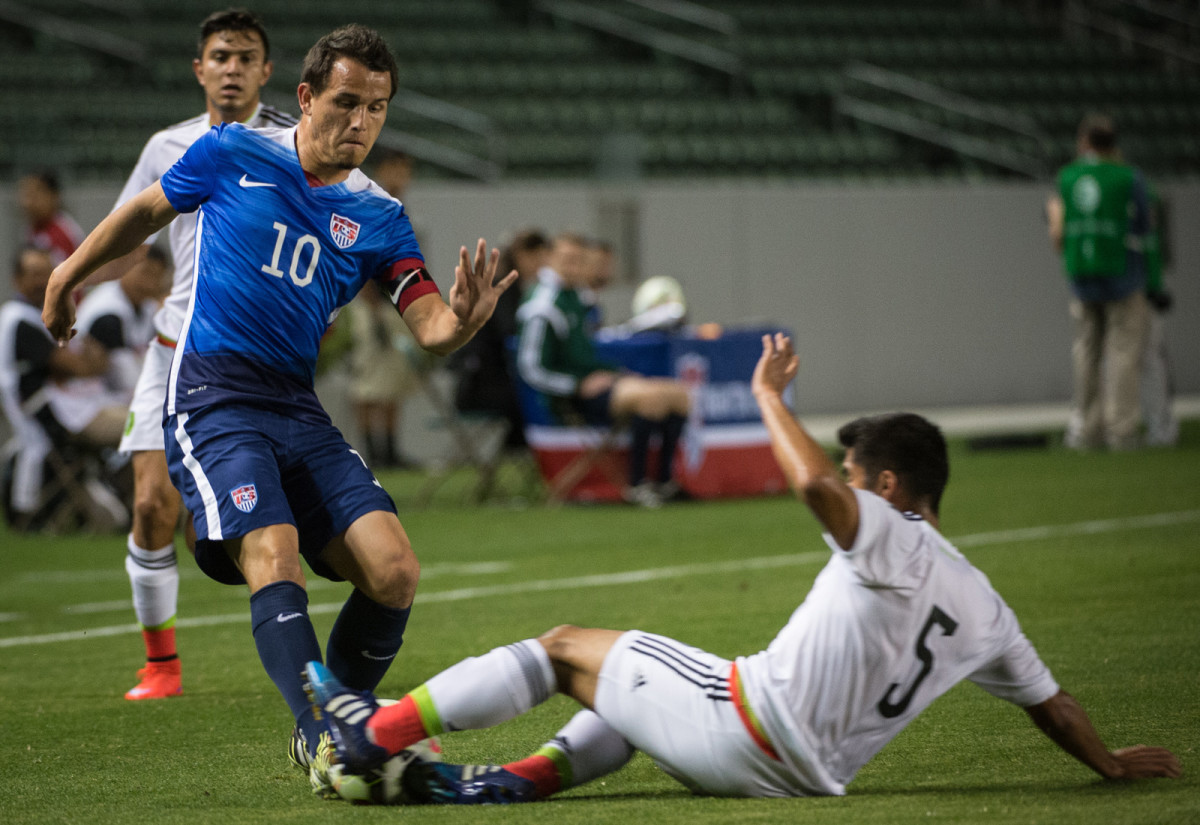
Real Salt Lake's Luis Gil captains the USA to a 3-0 win over Mexico at StubHub Center in Olympic qualifying preparation for both CONCACAF favorites.
USWNT vs. Ireland, May 10
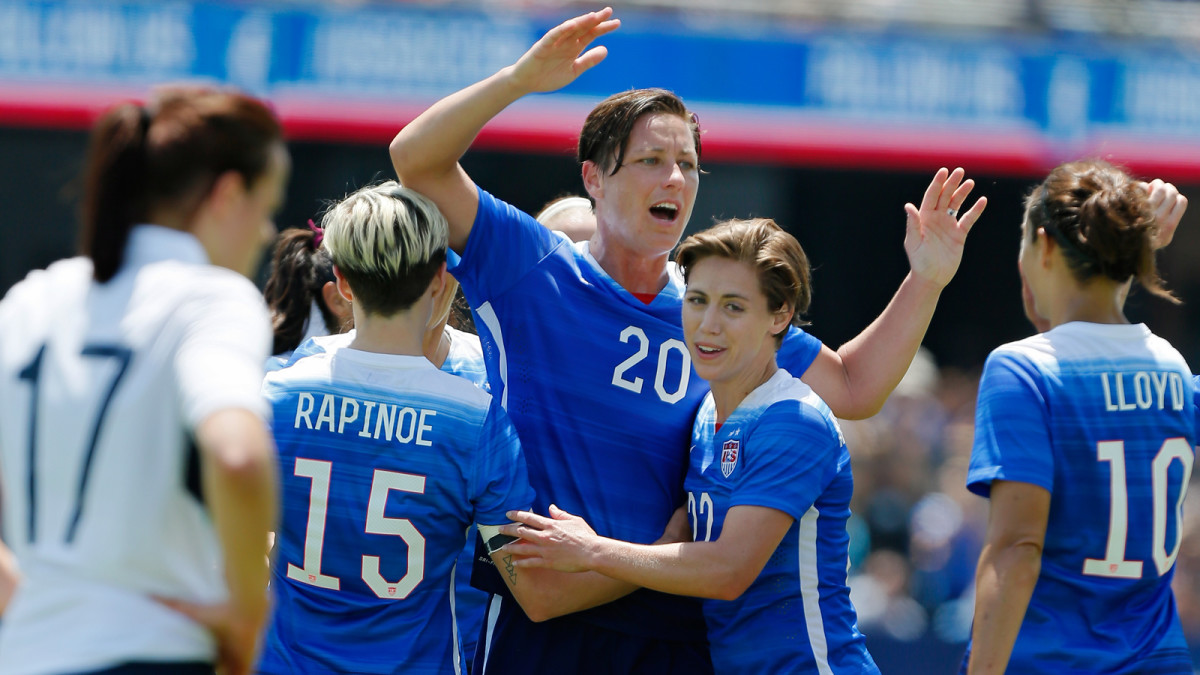
Abby Wambach celebrates one of her two goals vs. Ireland as the USWNT took a 3-0 win on Mother's Day at Avaya Stadium.
USWNT vs. Mexico, May 17
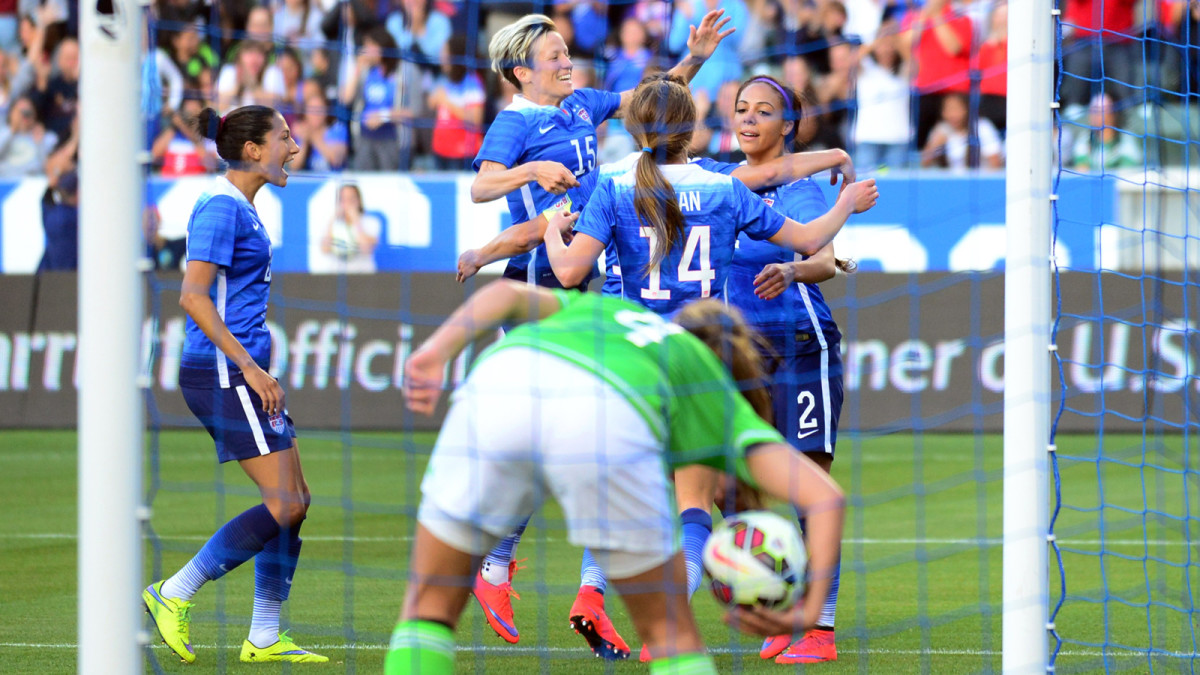
Sydney Leroux is congratulated by her teammates after one of her two goals in a 5-1 pre-World Cup rout of Mexico at StubHub Center.
U.S. U-20 vs. Myanmar, May 30
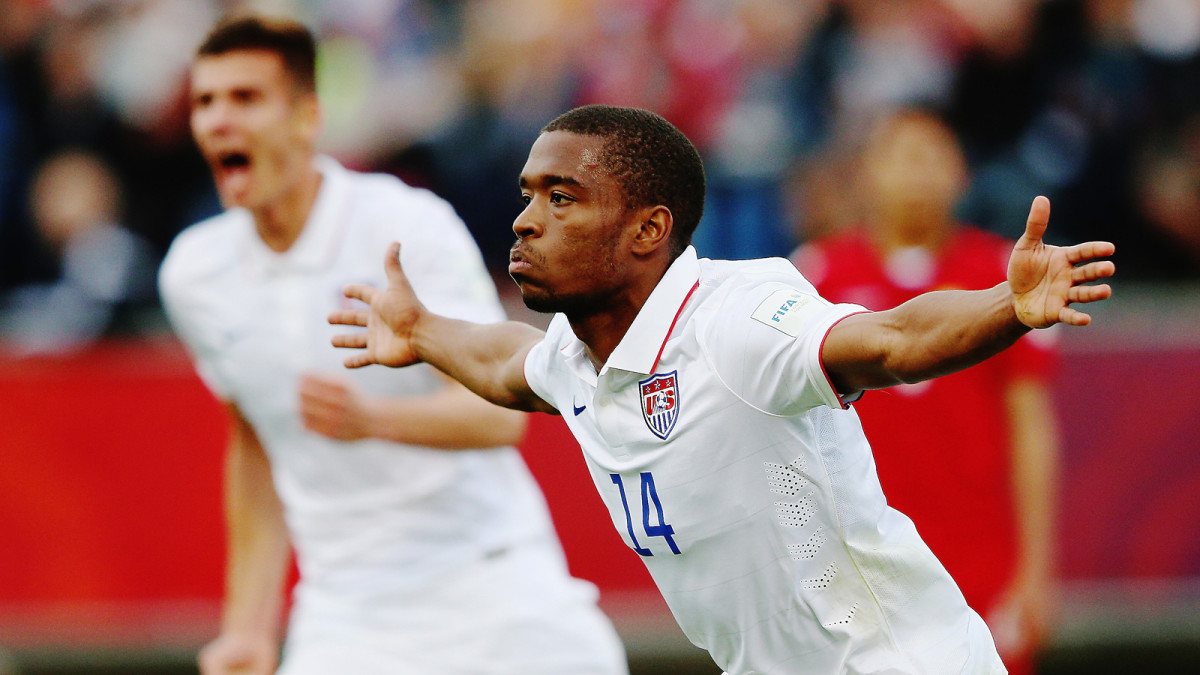
Maki Tall celebrates his equalizer for the USA as part of a come-from-behind 2-1 win over Myanmar to open the U-20 World Cup group stage in New Zealand.
USWNT vs. South Korea, May 30
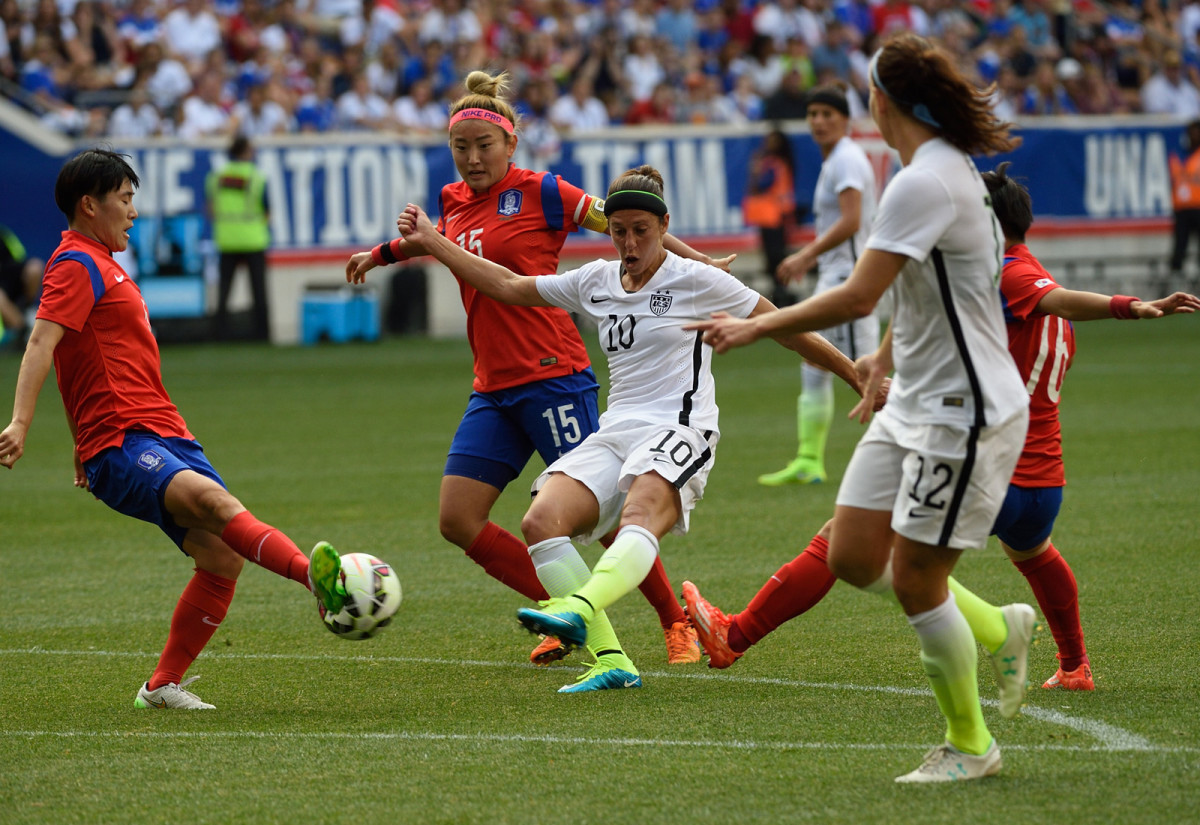
Carli Lloyd gets off a shot through traffic in the USA's final World Cup send-off friendly, a 0-0 draw against South Korea at Red Bull Arena.
U.S. U-23 in Toulon Tournament, May-June
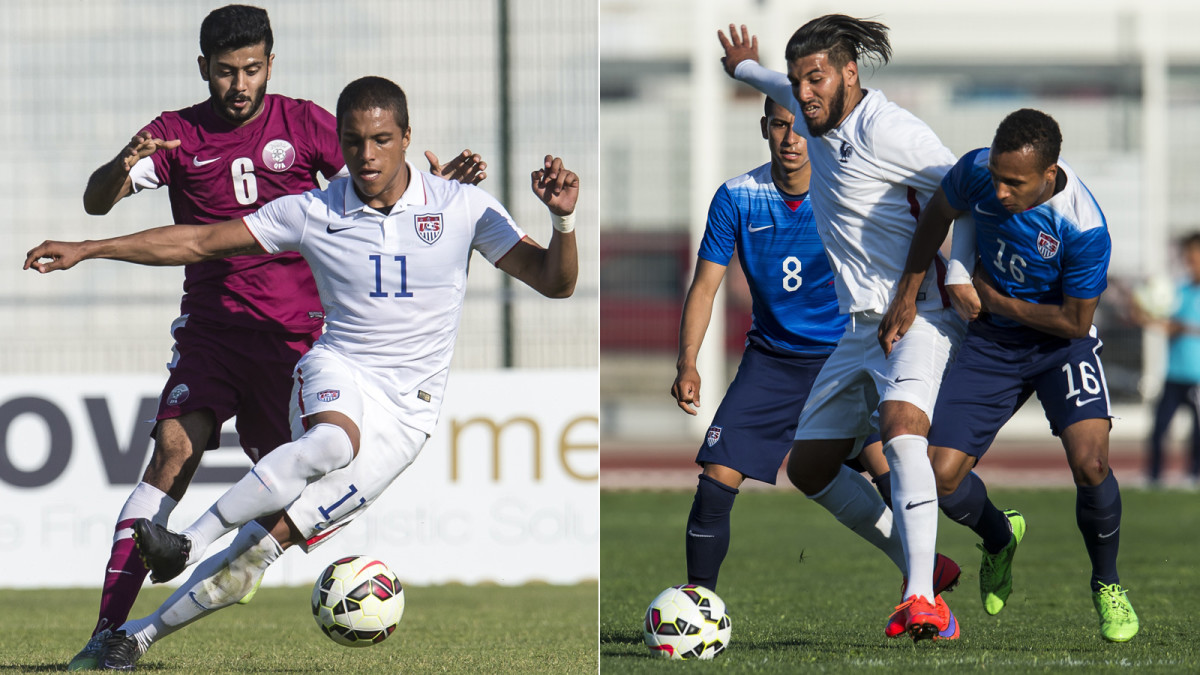
Alonso Hernandez, left, takes on Qatar, while Julian Green, right, vies for the ball against France in the Toulon Tournament as part of Olympic qualifying preparations.
U.S. U-20 vs. New Zealand, June 2
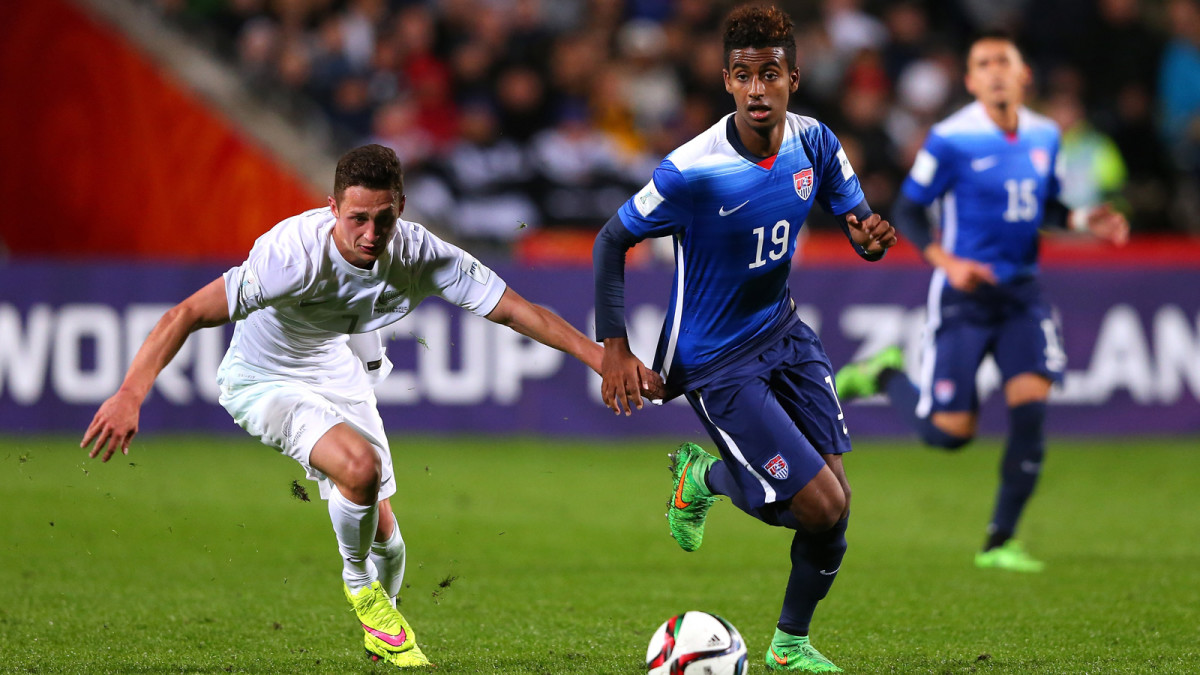
Gedion Zelalem controls the ball against New Zealand in the USA's 4-0 win that cemented a place in the U-20 World Cup knockout stage.
U.S. U-20 vs. Ukraine, June 5
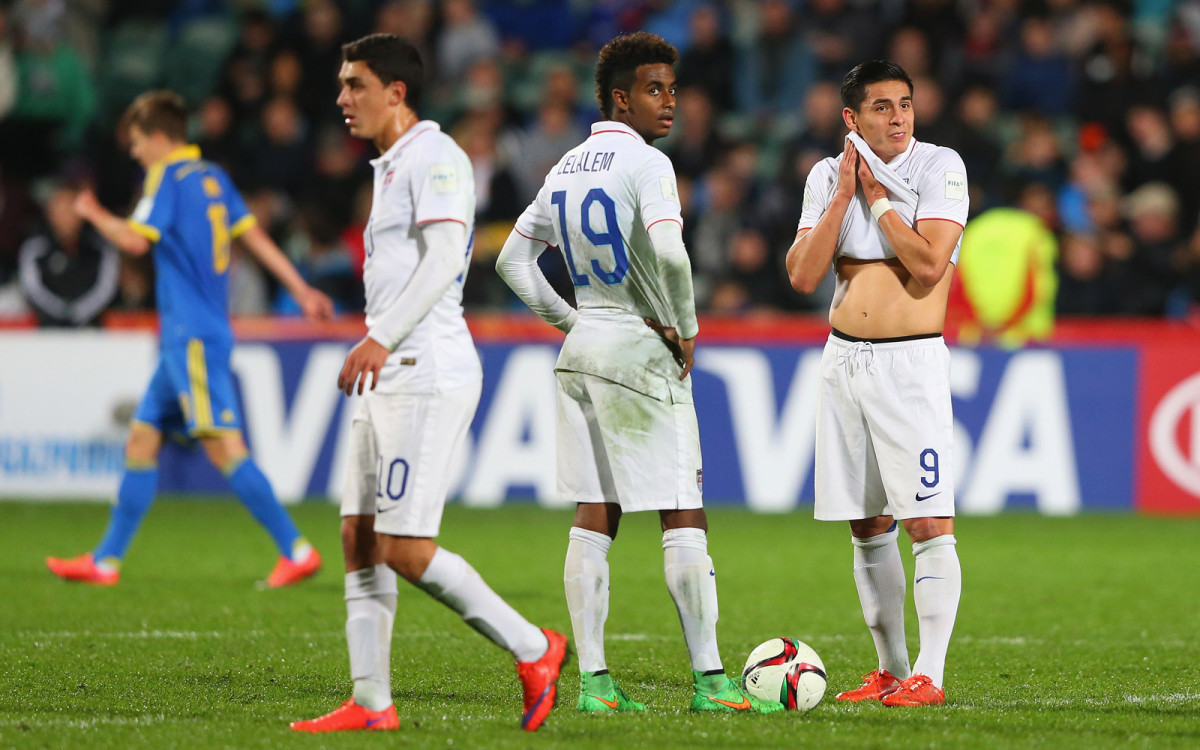
From left, Joel Soñora, Gedion Zelalem and Rubio Rubin show frustration during a 3-0 loss to Ukraine that wrapped up group play in the U-20 World Cup.
USMNT vs. Netherlands, June 5
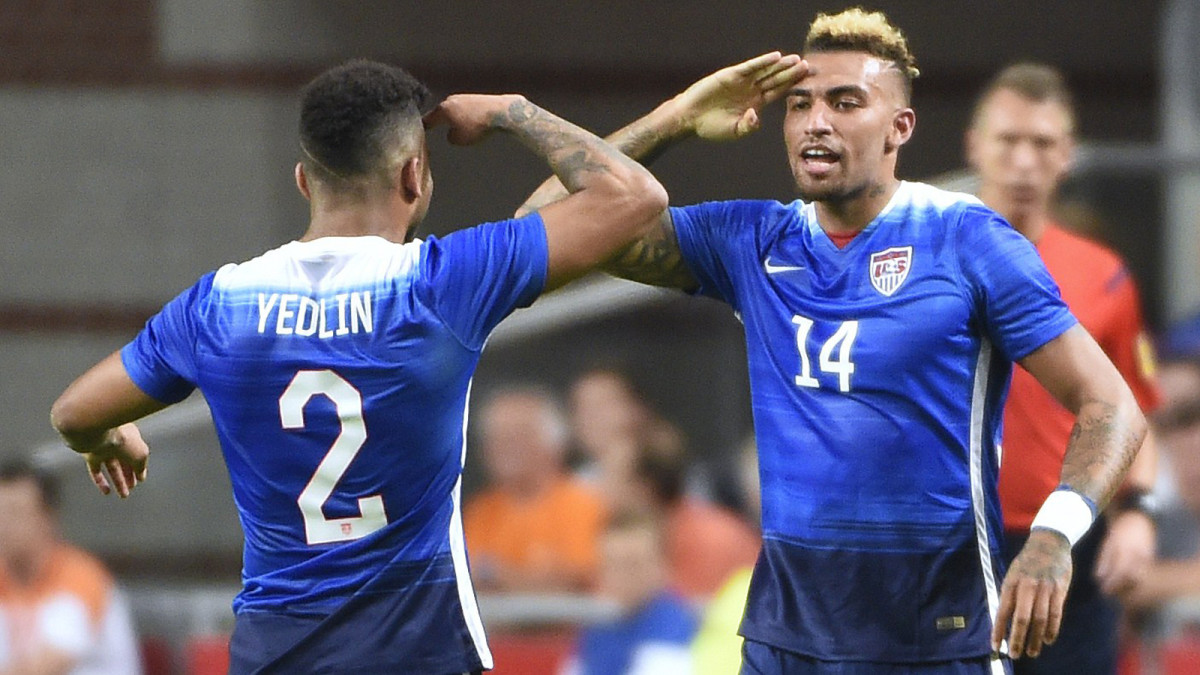
DeAndre Yedlin and Danny Williams salute each other after the latter's goal–his first international strike–brought the U.S. level with the Netherlands at 3-3 in the 89th minute.
USMNT vs. Netherlands, June 5
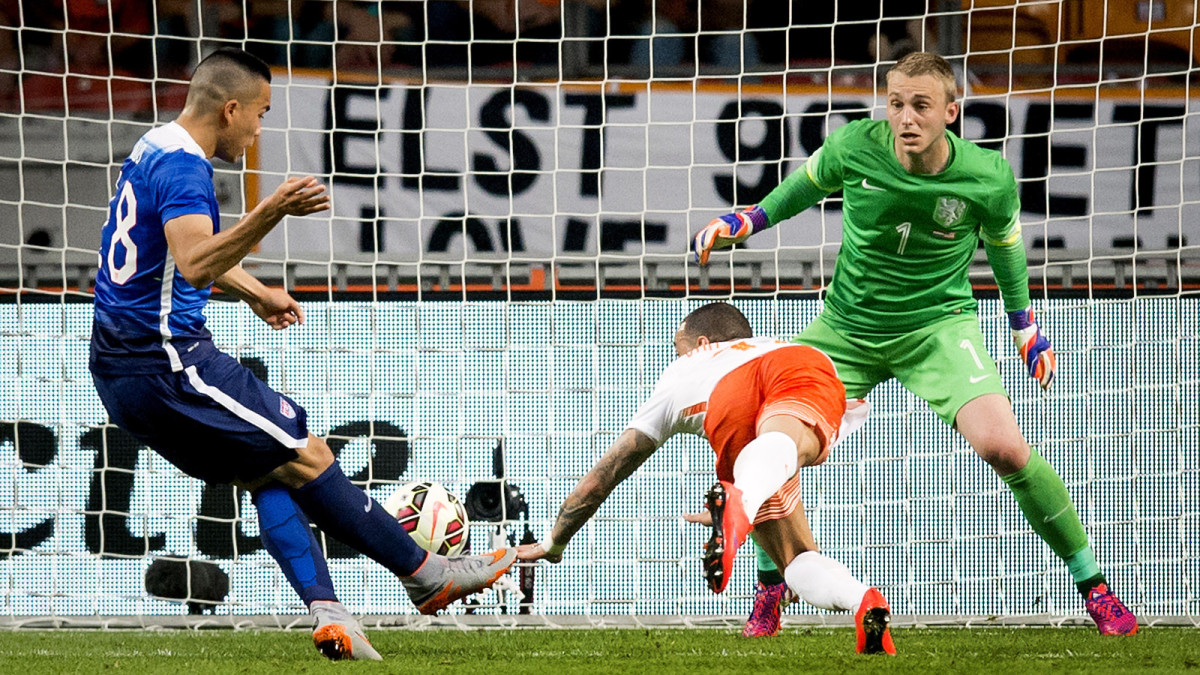
Bobby Wood puts the finishing touch on an epic comeback, with his 90th-minute strike capping a wild 4-3 win for the USA over the Netherlands. The USA trailed 3-1 in the 71st minute.
U.S. U-23 vs. England, June 7
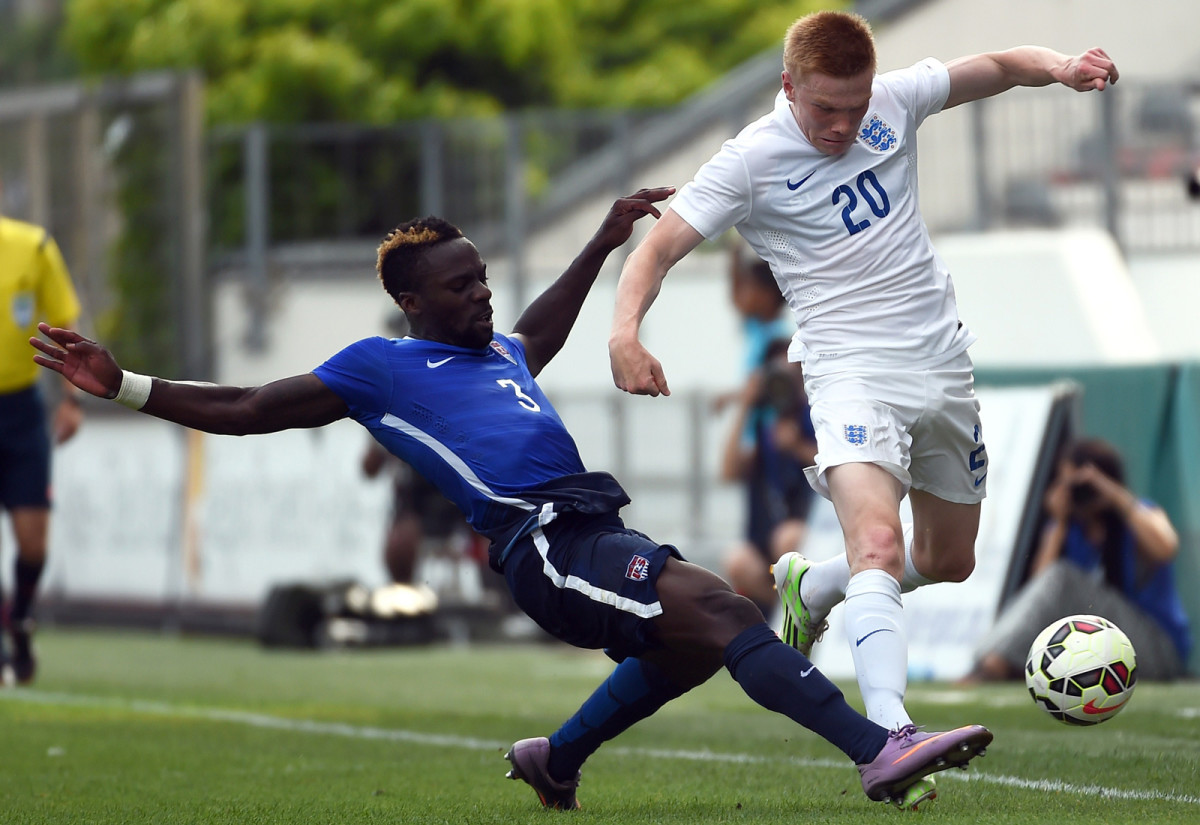
USA defender Boyd Okwuonu makes a tackle on England's Duncan Watmore in the Toulon Tournament third-place game. The U.S. U-23s won 2-1, sealing their best finish in the tournament.
USWNT vs. Australia, June 8, WWC
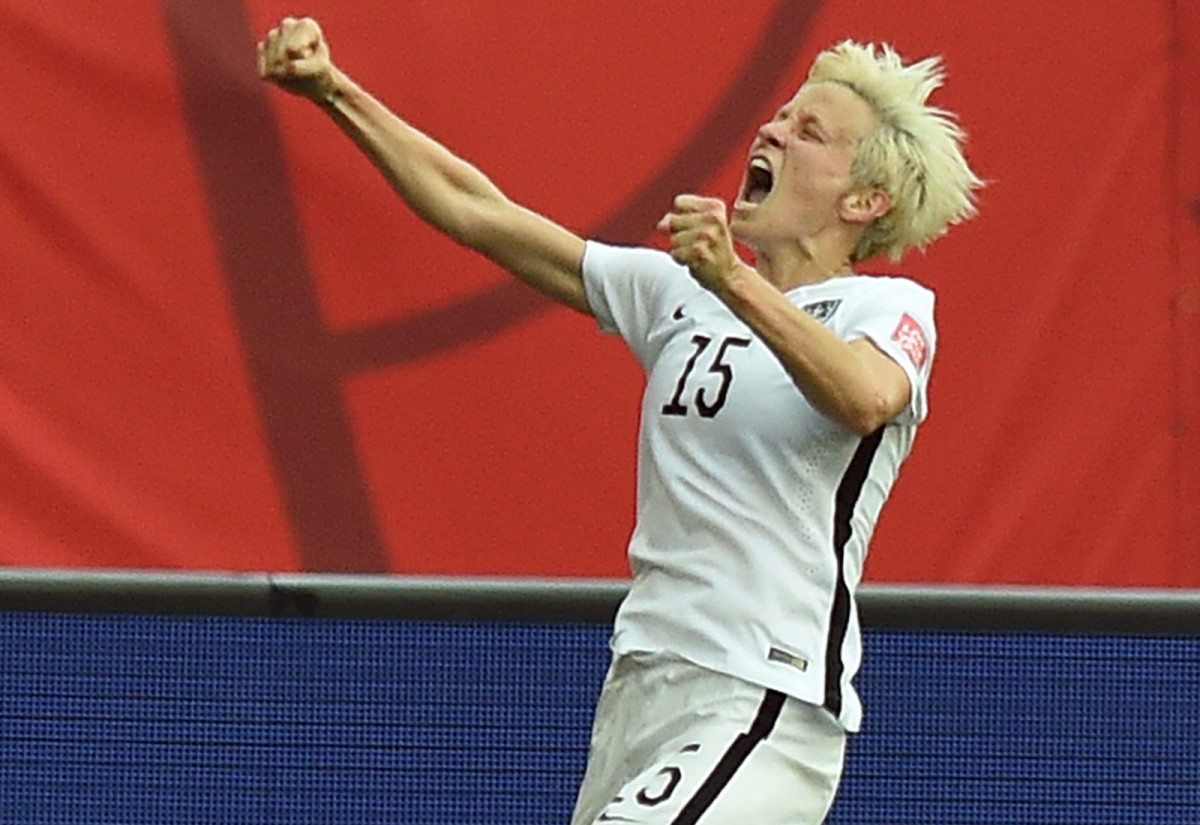
Megan Rapinoe lets out a yell after her second goal, which sealed the USA's 3-1 win over Australia to open Group D play in the Women's World Cup.
U.S. U-20 vs. Colombia, June 10
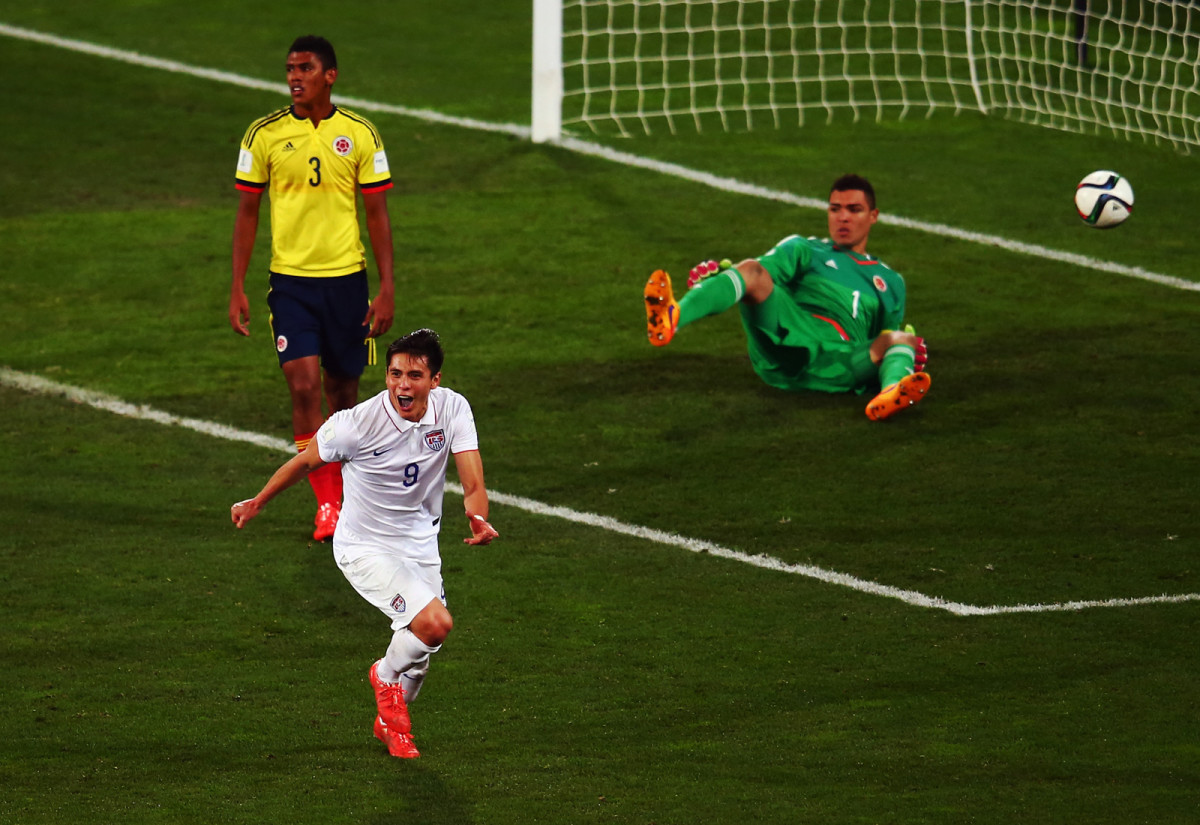
Rubio Rubin celebrates the goal that gives the USA a 1-0 win over Colombia in the FIFA U-20 World Cup round of 16. Zack Steffen's late penalty save preserved the win, as the Americans reached the quarterfinals for the first time since 2007.
USMNT vs. Germany, June 10
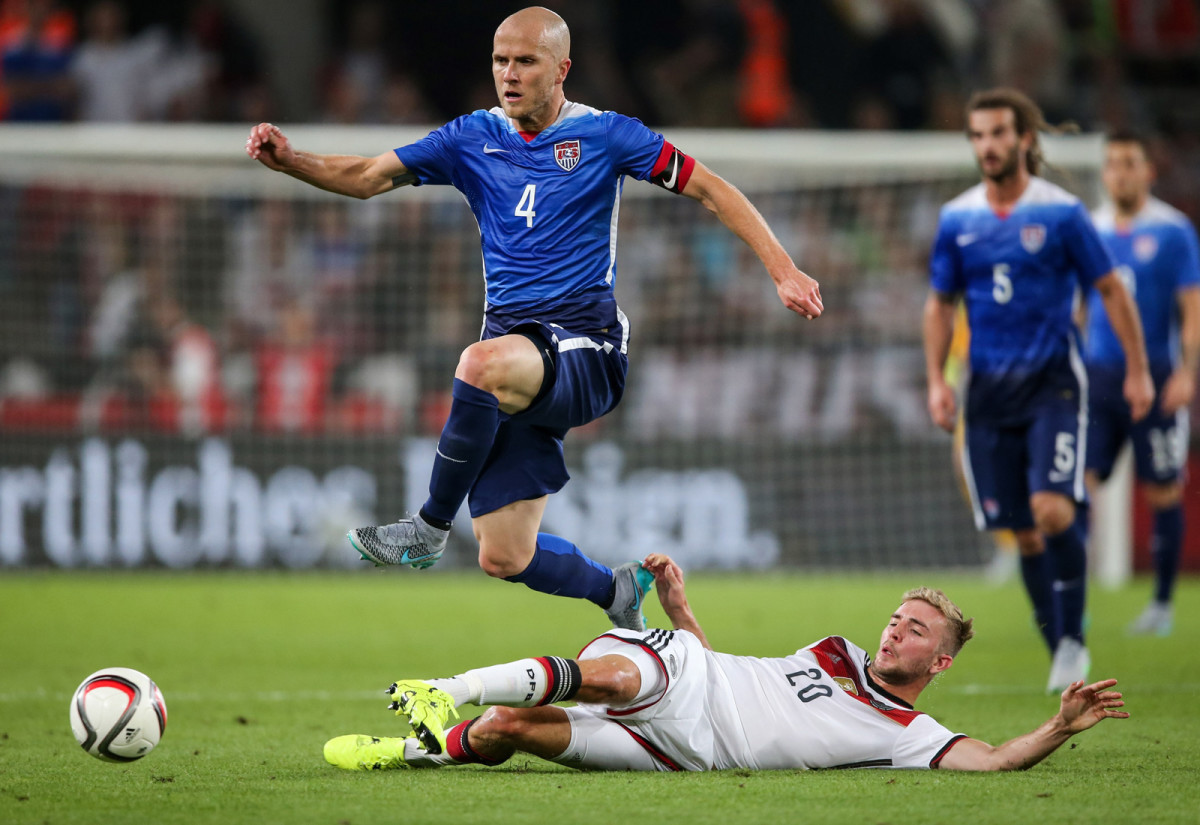
Michael Bradley was everywhere against World Cup champion Germany, assisting on Mix Diskerud's equalizer and commanding the midfield in a 2-1 win in Cologne.
USMNT vs. Germany, June 10
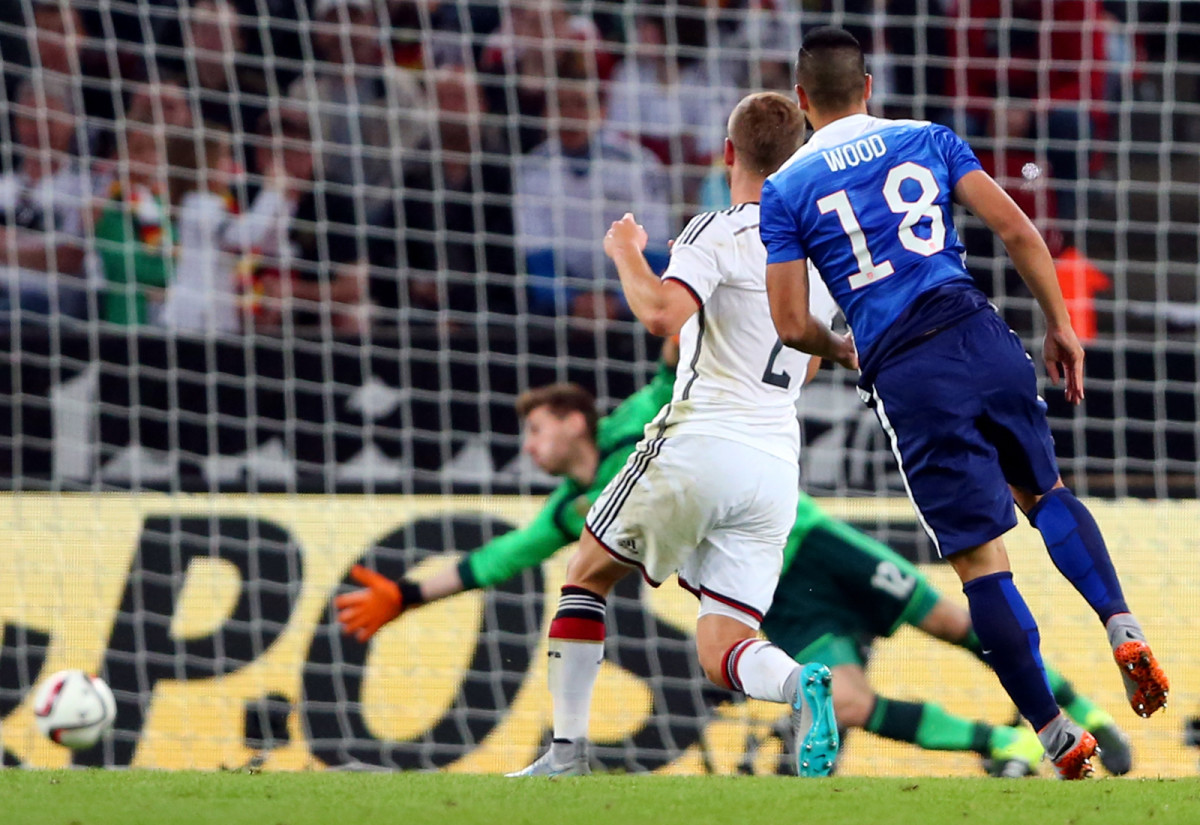
For the second straight game, Bobby Wood came off the bench and scored a stunning winner. He watches his long-range blast beat Ron-Robert Zieler in a 2-1 win over world No. 1 Germany.
USWNT vs. Sweden, June 12
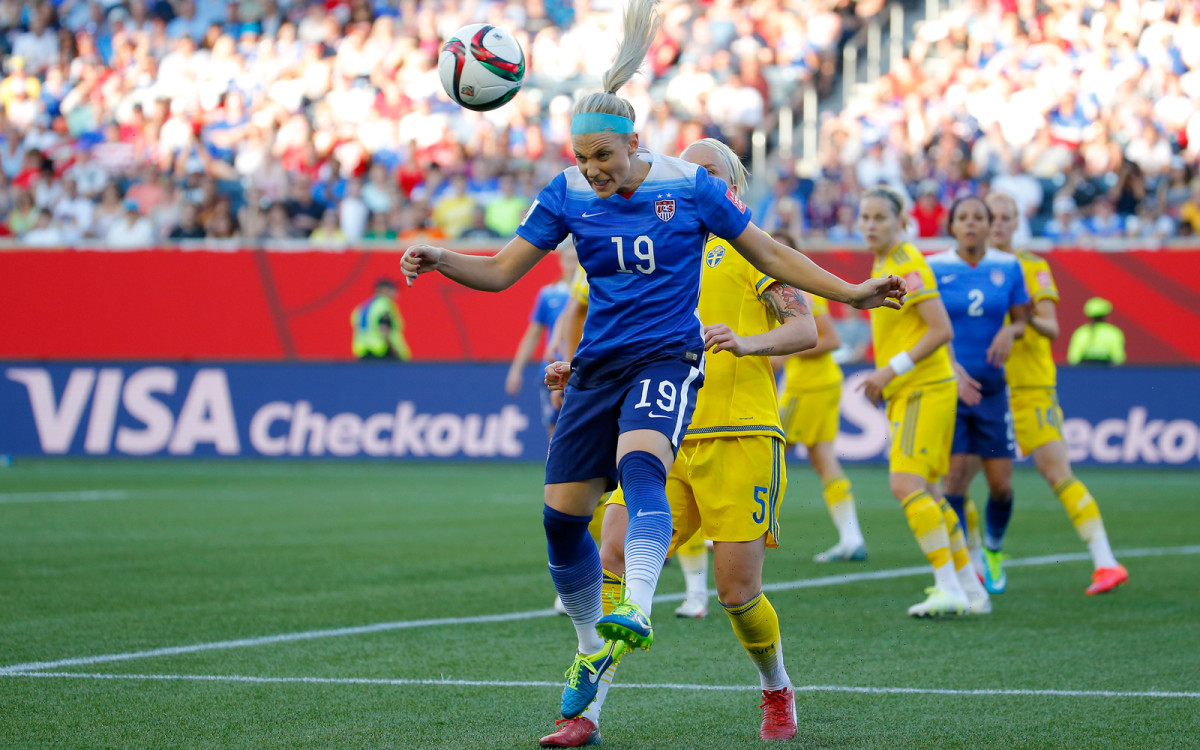
Julie Johnston wins the header in a dominant showing on the U.S. back line, helping the Americans preserve a 0-0 draw against Sweden in the second game of the Women's World Cup group stage.
U.S. U-20 vs. Serbia, June 13
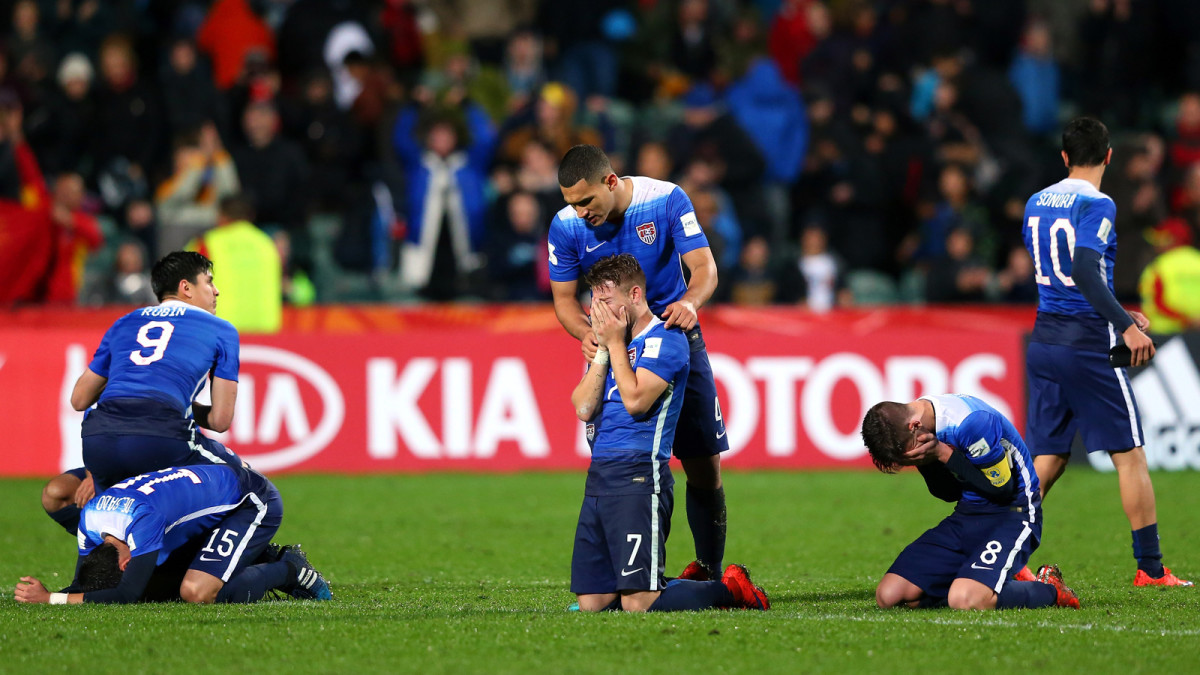
U.S. players' emotions say it all after a gut-wrenching loss to Serbia in penalty kicks at the U-20 World Cup. After a 0-0 draw, the Americans fell 6-5 in PKs, despite Zack Steffen's two saves in sudden death.
USWNT vs. Nigeria, June 16

Abby Wambach leaps for joy after scoring in the 45th minute off Megan Rapinoe's corner kick, which delivered a 1-0 win to the USA and first place in Group D of the Women's World Cup.
USWNT vs. Colombia, June 22
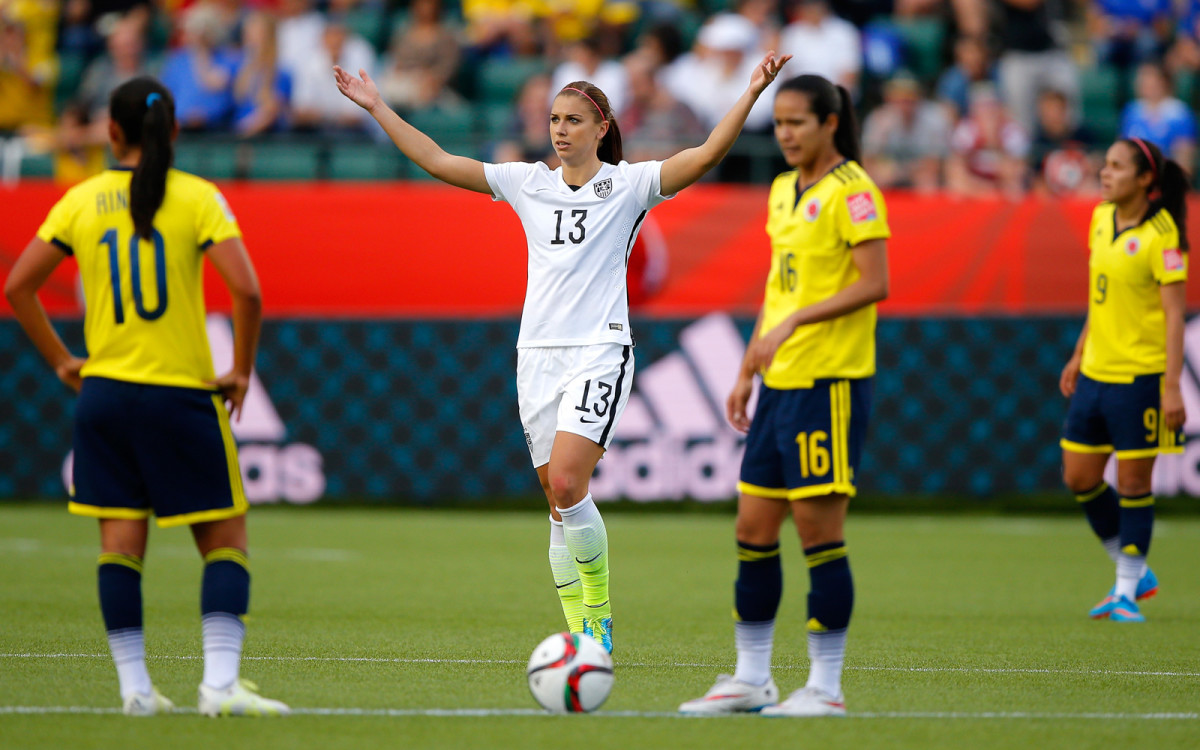
Alex Morgan's goal broke a 0-0 draw, provided relief after Abby Wambach's PK miss and helped the U.S. women to the World Cup quarterfinals after a 2-0 win over Colombia in the round of 16.
USWNT vs. China, June 26
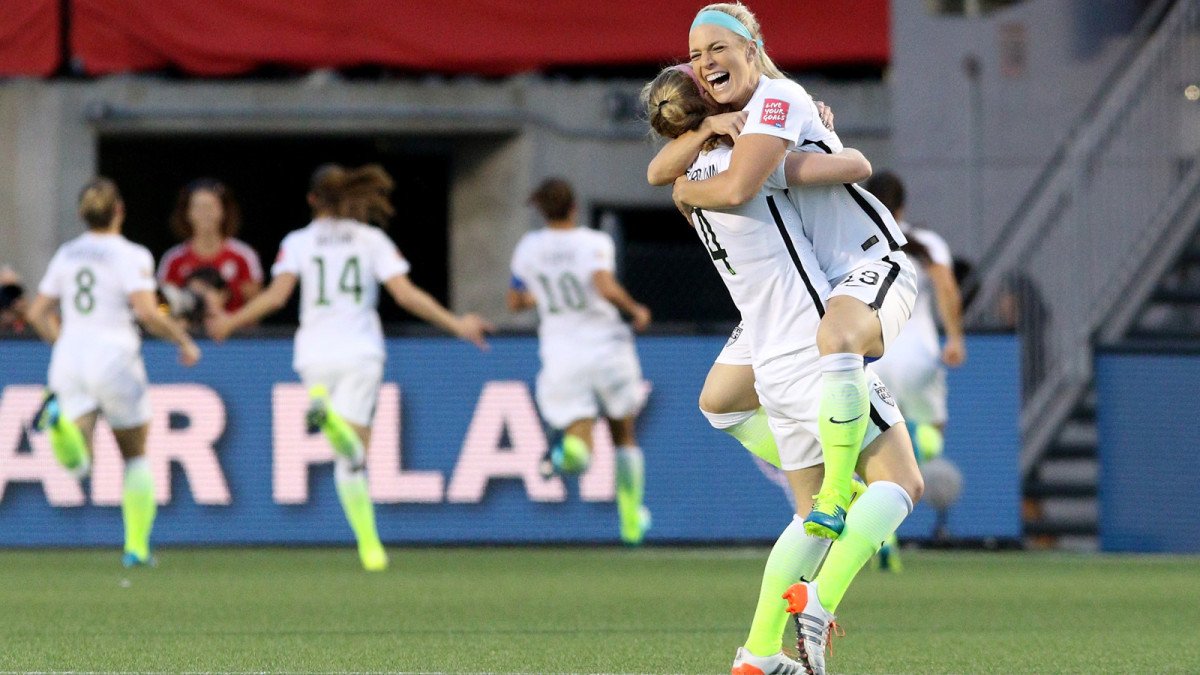
While Carli Lloyd (10) celebrates her goal in the distance, stalwart center backs Julie Johnston and Becky Sauerbrunn rejoice in the goal that put the USA into the semifinals of the Women's World Cup.
USWNT vs. Germany, June 30
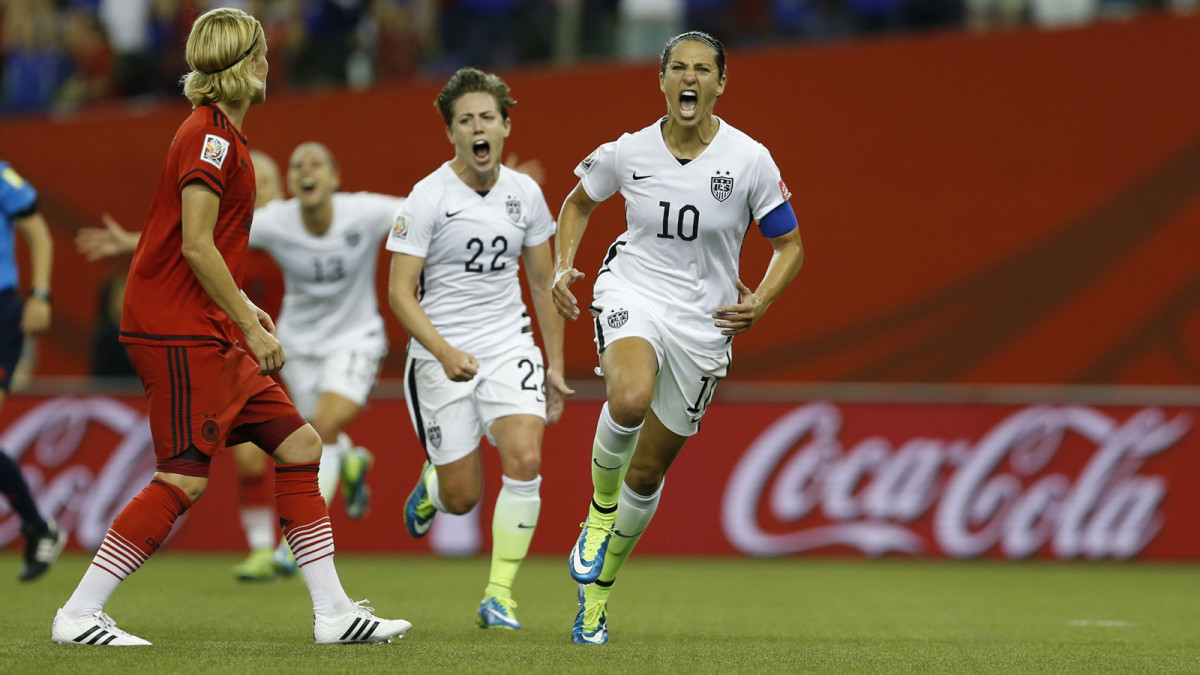
Carli Lloyd yells in celebration after scoring the penalty that put the USA up over Germany en route to a 2-0 victory in the Women's World Cup semifinals.
USMNT vs. Guatemala, July 3
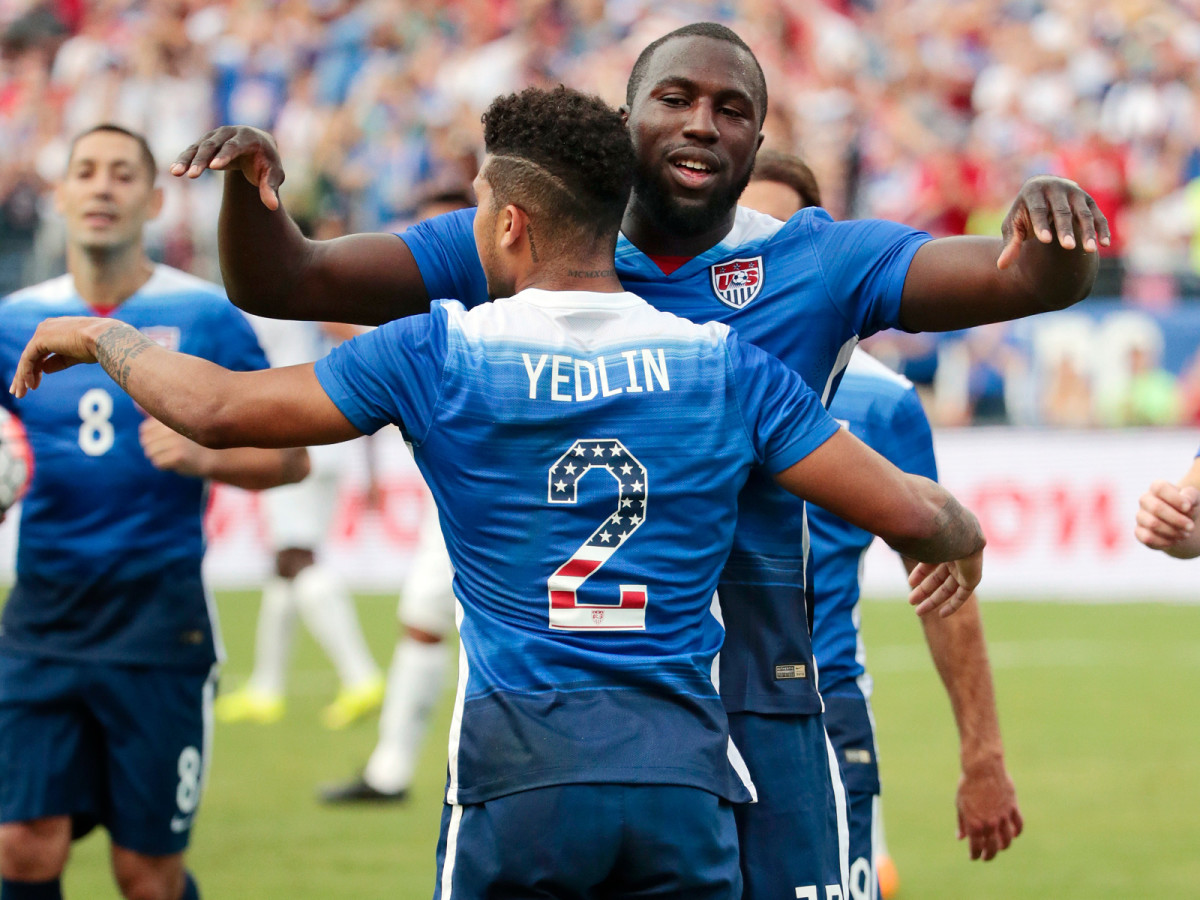
DeAndre Yedlin and Jozy Altidore, wearing special jerseys with stars-and-stripes numbers for July 4, celebrate after a Guatemala own goal gifts the USA a 1-0 lead during a 4-0 win in Nashville, Tennessee, prior to the CONCACAF Gold Cup.
USWNT vs. Japan, July 5
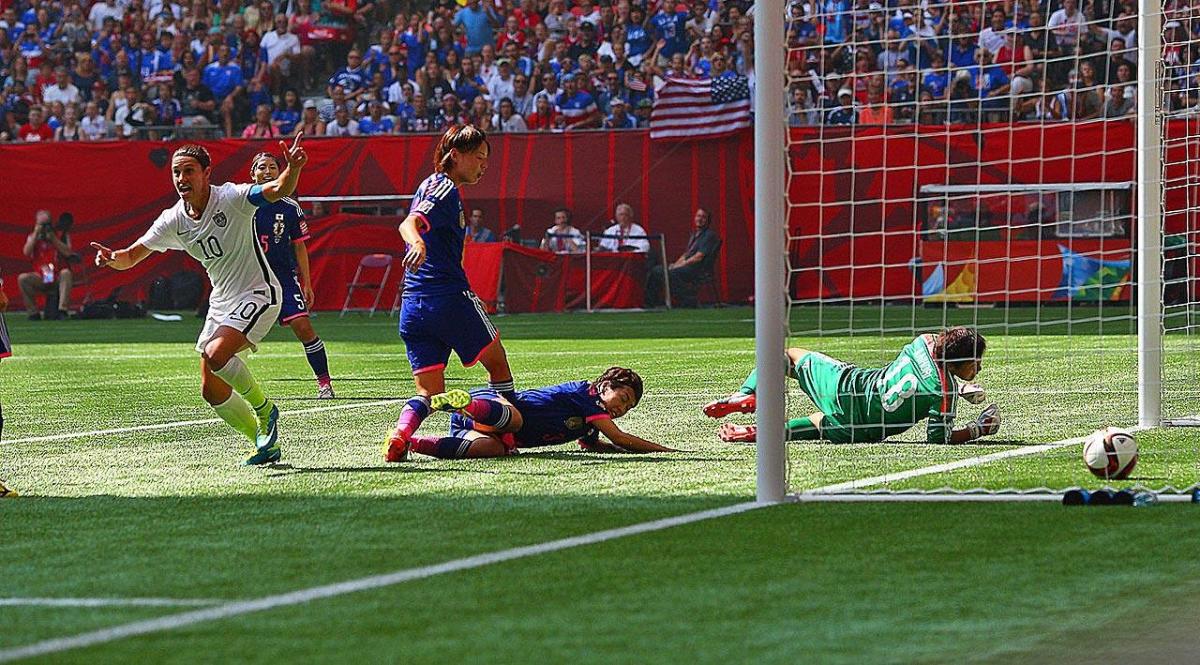
Carli Lloyd sets the tone with a third-minute goal in the Women's World Cup final against Japan, the first of her three strikes within 16 minutes that lifted the USA to a 5-2 win and its first title in 16 years.
USWNT vs. Japan, July 5
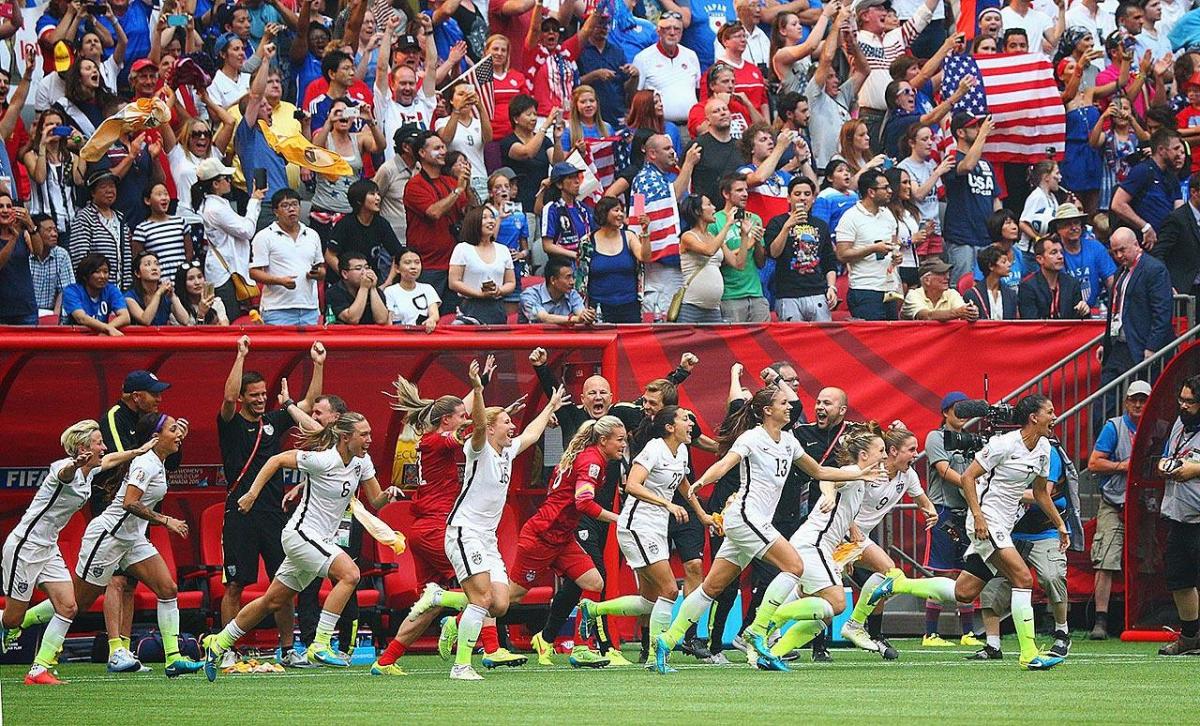
U.S. players rush the field after the final whistle, which sealed their 5-2 triumph over Japan and a record third World Cup title.
USWNT vs. Japan, July 5
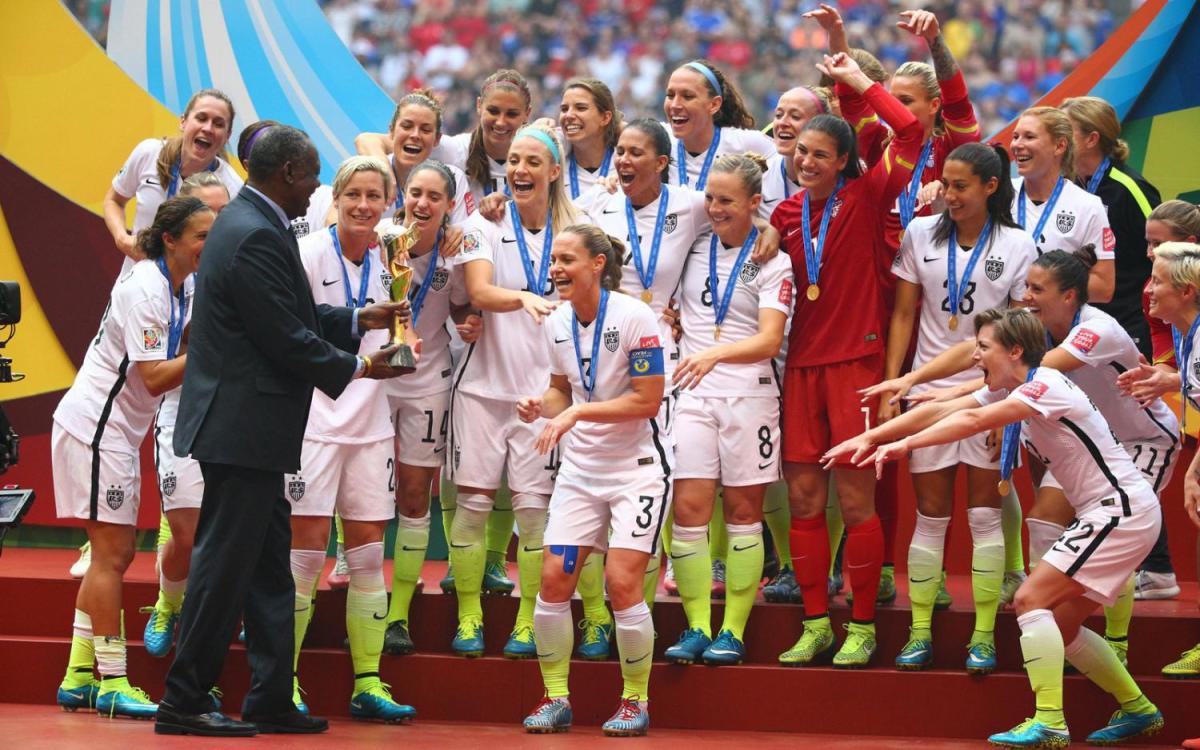
USWNT vs. Japan, July 5
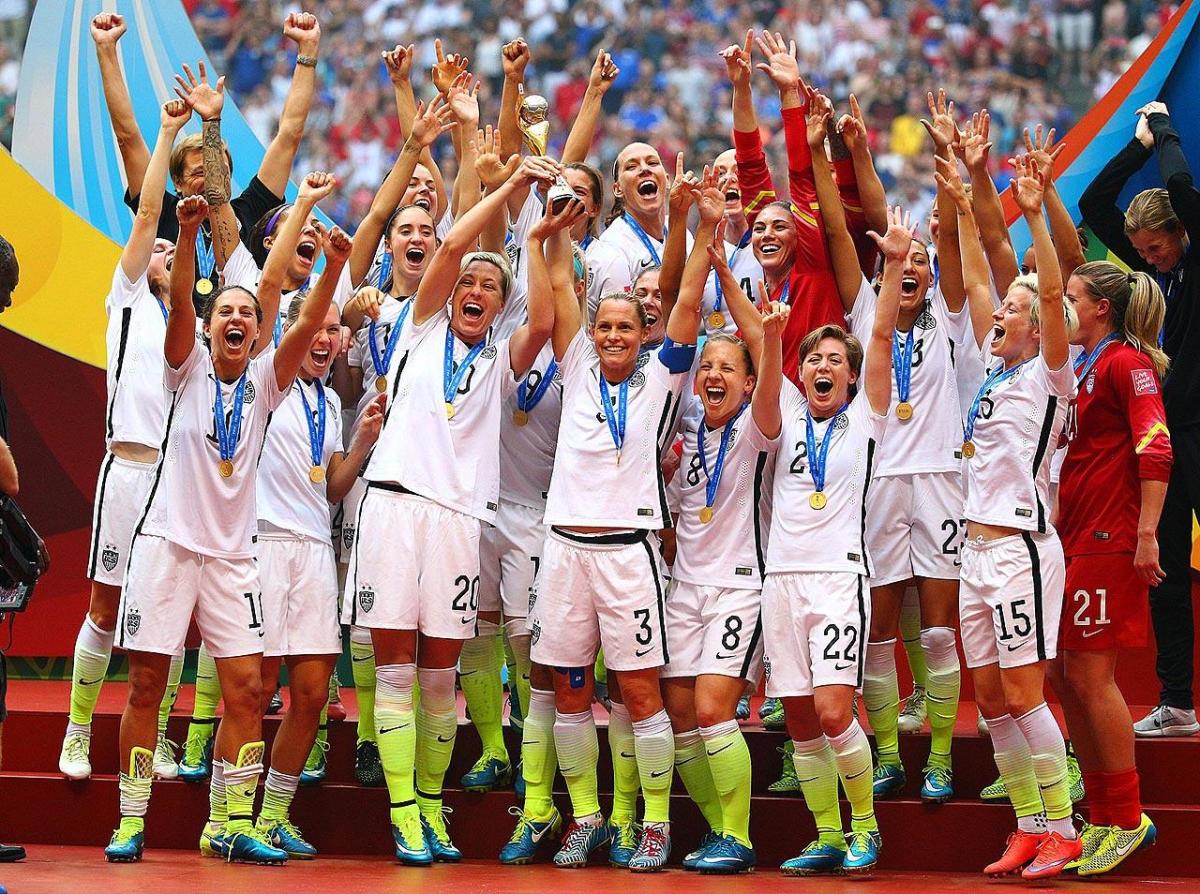
Victorious, the U.S. women's national team raises the World Cup trophy for the third time, but the first in 16 years, after completing a 5-2 win over Japan in the final at Vancouver's BC Place.
USMNT vs. Honduras, July 7
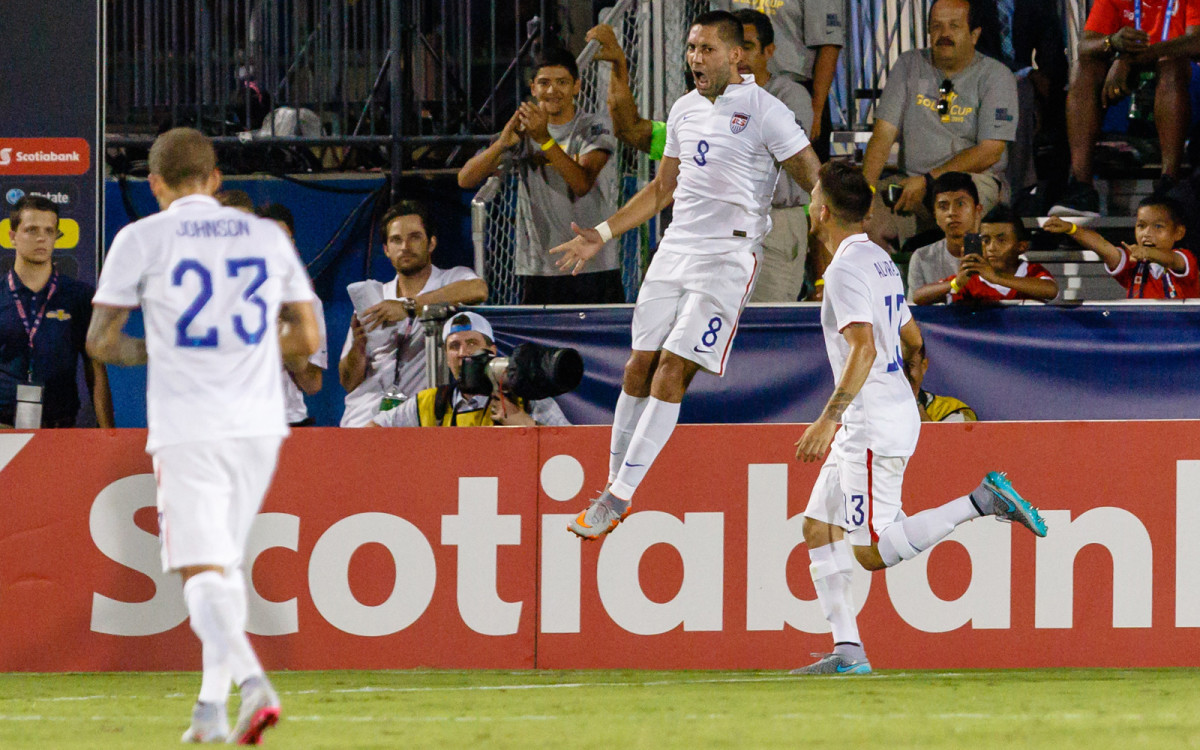
Clint Dempsey leaps in celebration of his second goal in the USA's Gold Cup opener against Honduras. The Americans won 2-1, fending off a late Honduras surge to collect all three points in the start of their title defense.
USA vs. Haiti, July 10
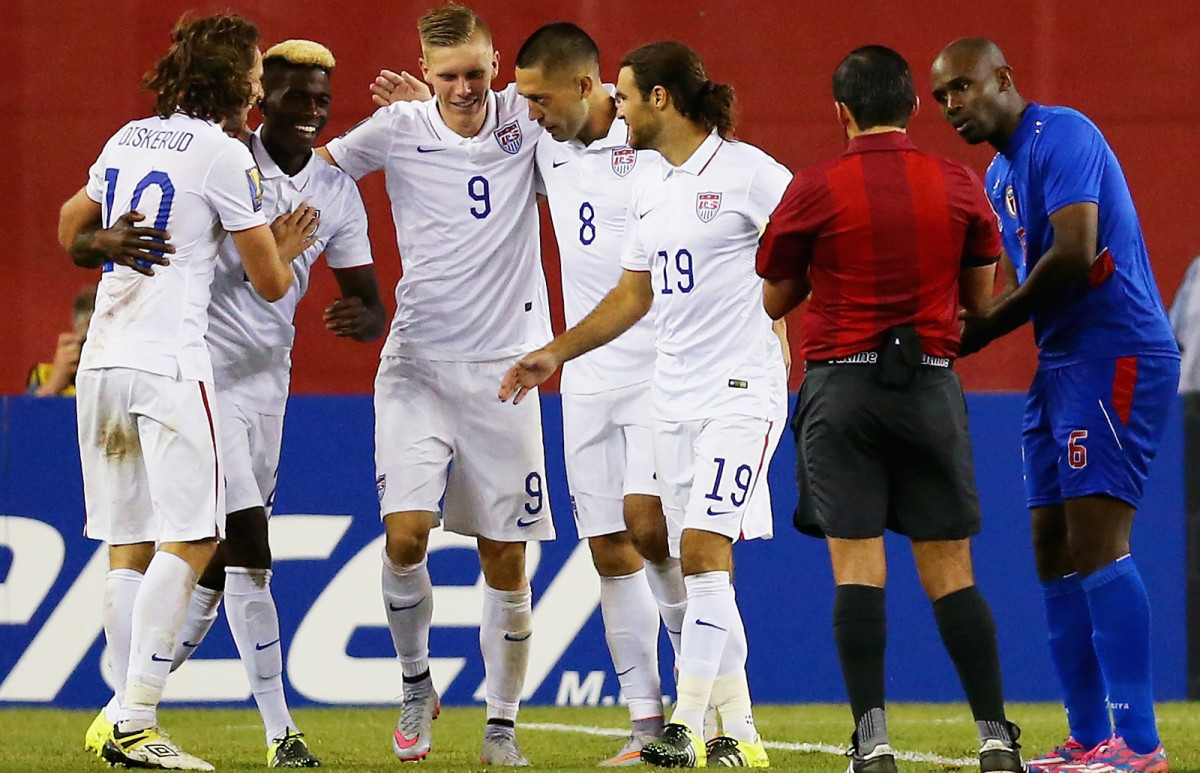
Clint Dempsey (8) is congratulated by his teammates after a 47th-minute goal gave the USA a 1-0 win over Haiti in the Gold Cup. Gyasi Zardes, second from left, came on at halftime and assisted, and the win clinched first place in Group A.
USMNT vs Panama, July 13
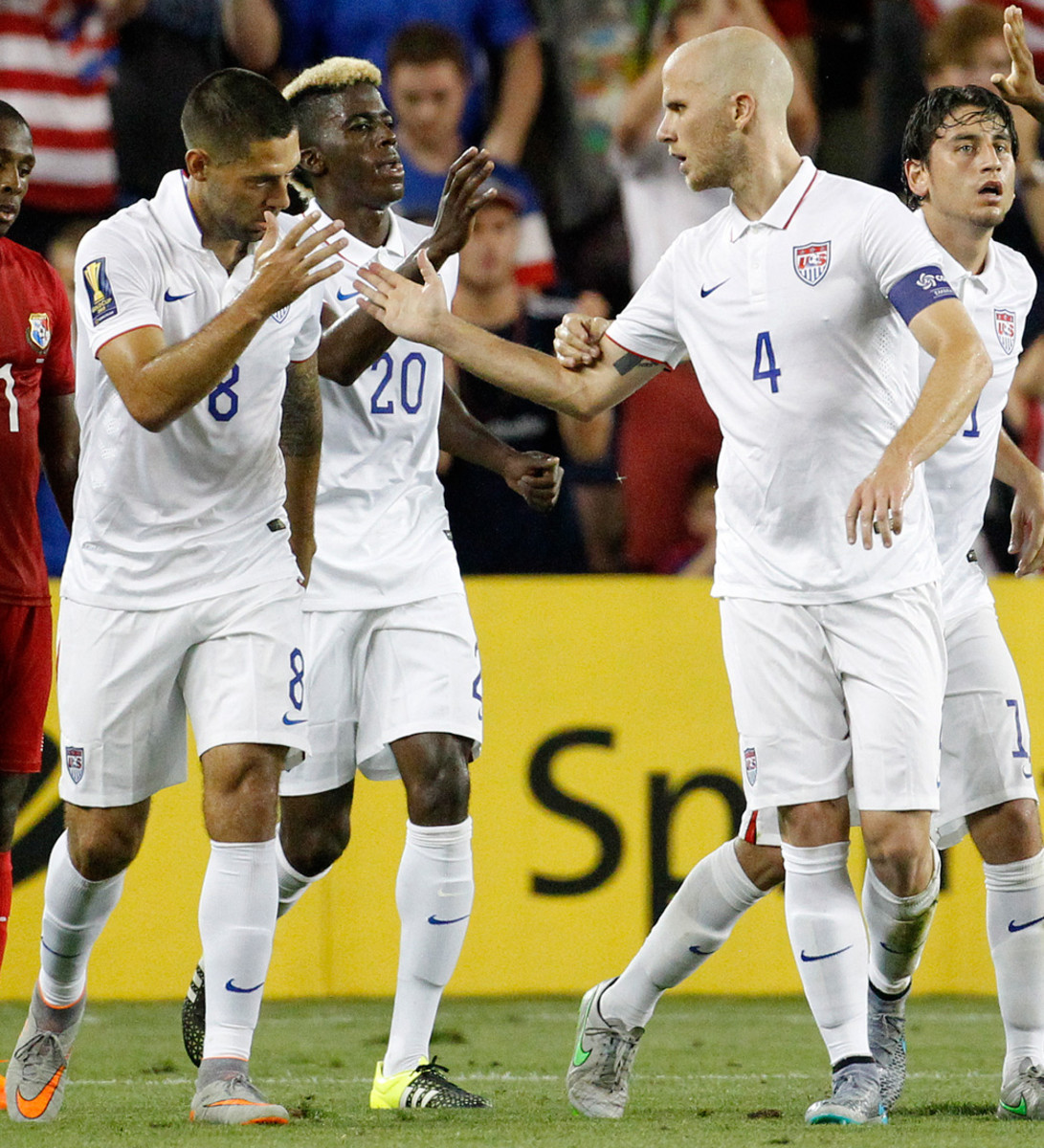
Clint Dempsey, left, and Michael Bradley, right, celebrate after the latter's goal in the USA's 1-1 draw vs. Panama, which wrapped up group play in the CONCACAF Gold Cup.
USMNT vs. Cuba, July 18
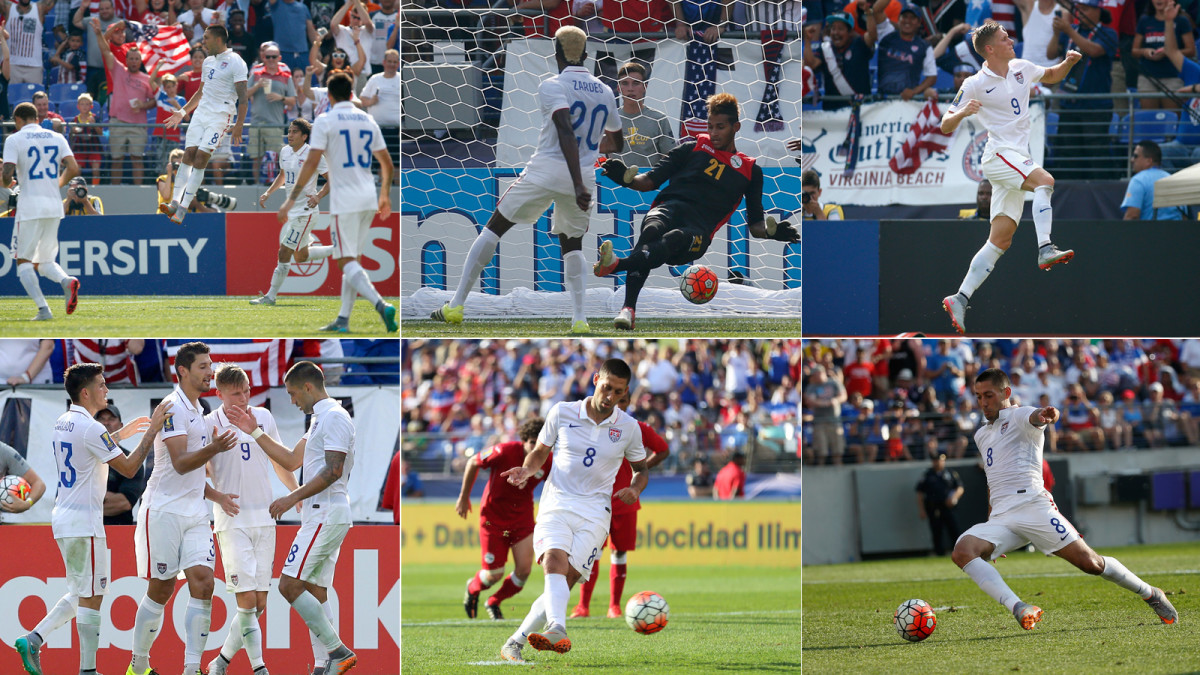
The U.S. men put on a clinic against an overmatched Cuba in the Gold Cup quarterfinals, with Clint Dempsey's hat trick leading the way in a 6-0 rout. Gyasi Zardes, Aron Johannsson and Omar Gonzalez also scored.
USMNT vs. Jamaica, July 22
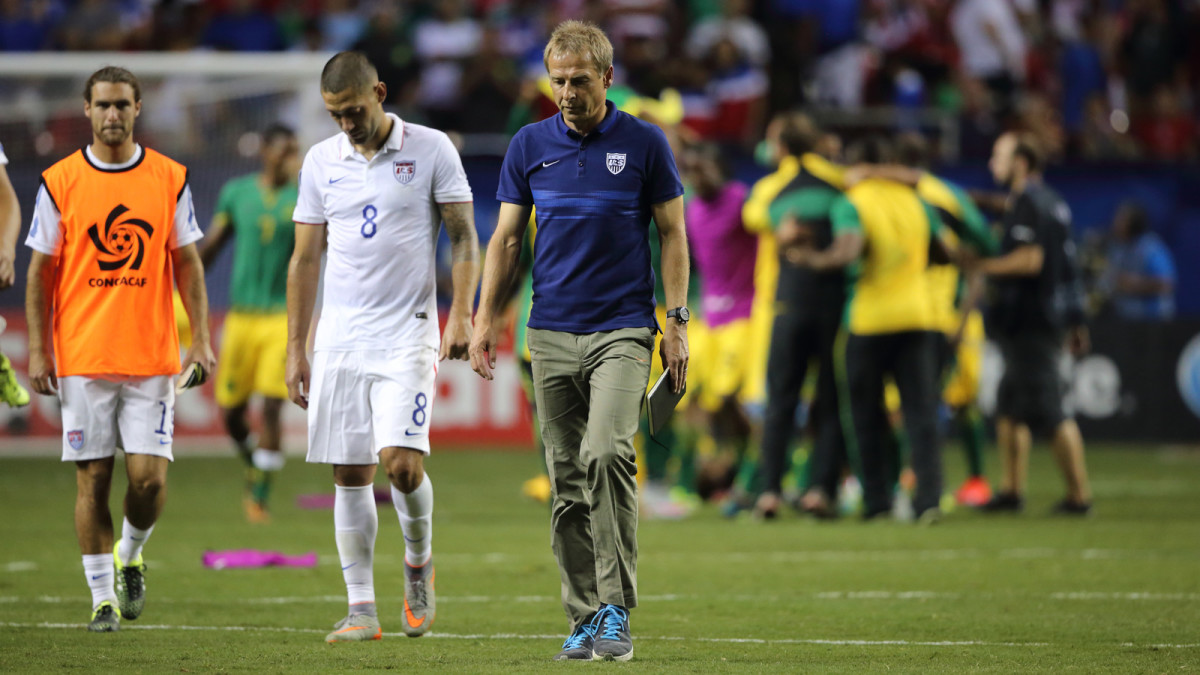
A downtrodden Clint Dempsey and Jurgen Klinsmann walk off the field as Jamaica celebrates a stunning 2-1 win over the USA in the CONCACAF Gold Cup semifinals.
USMNT vs. Panama, July 25
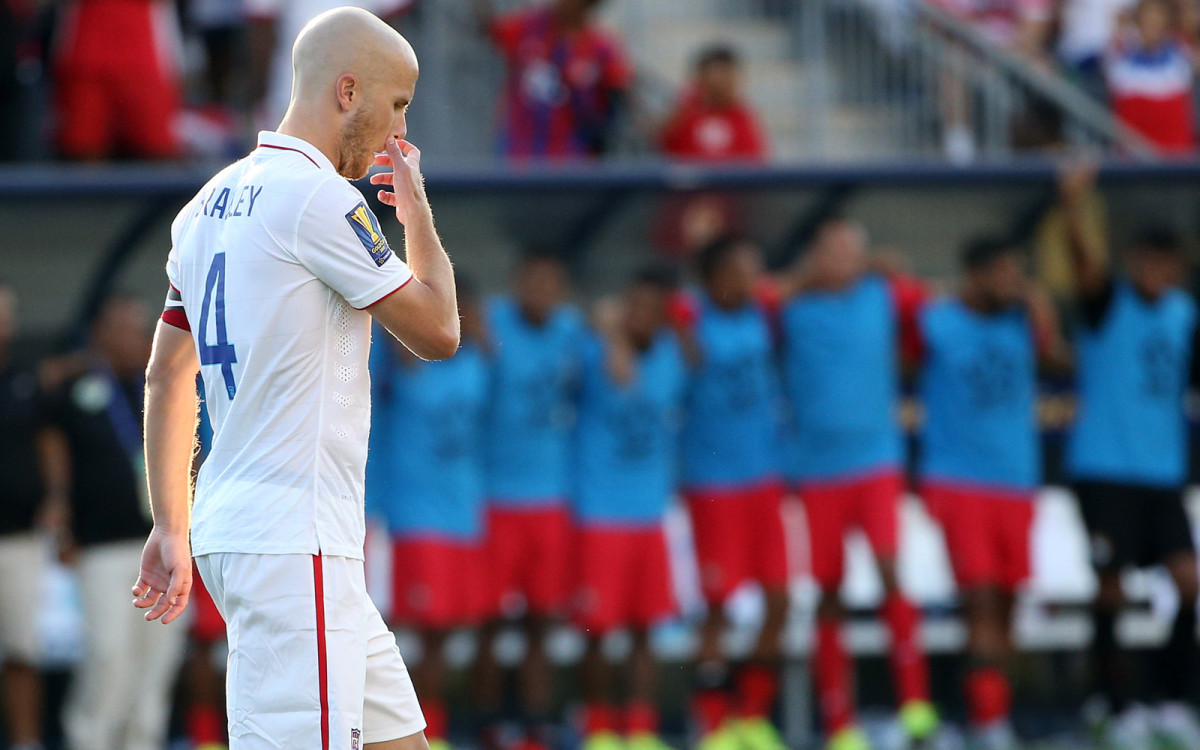
Michael Bradley walks away in dismay after having a penalty saved in a PK shootout in the USA's loss to Panama in the Gold Cup third-place game. After a 1-1 draw, Panama prevailed 3-2 in PKs, the USA's first shootout in 10 years.
USWNT vs. Costa Rica, August 16
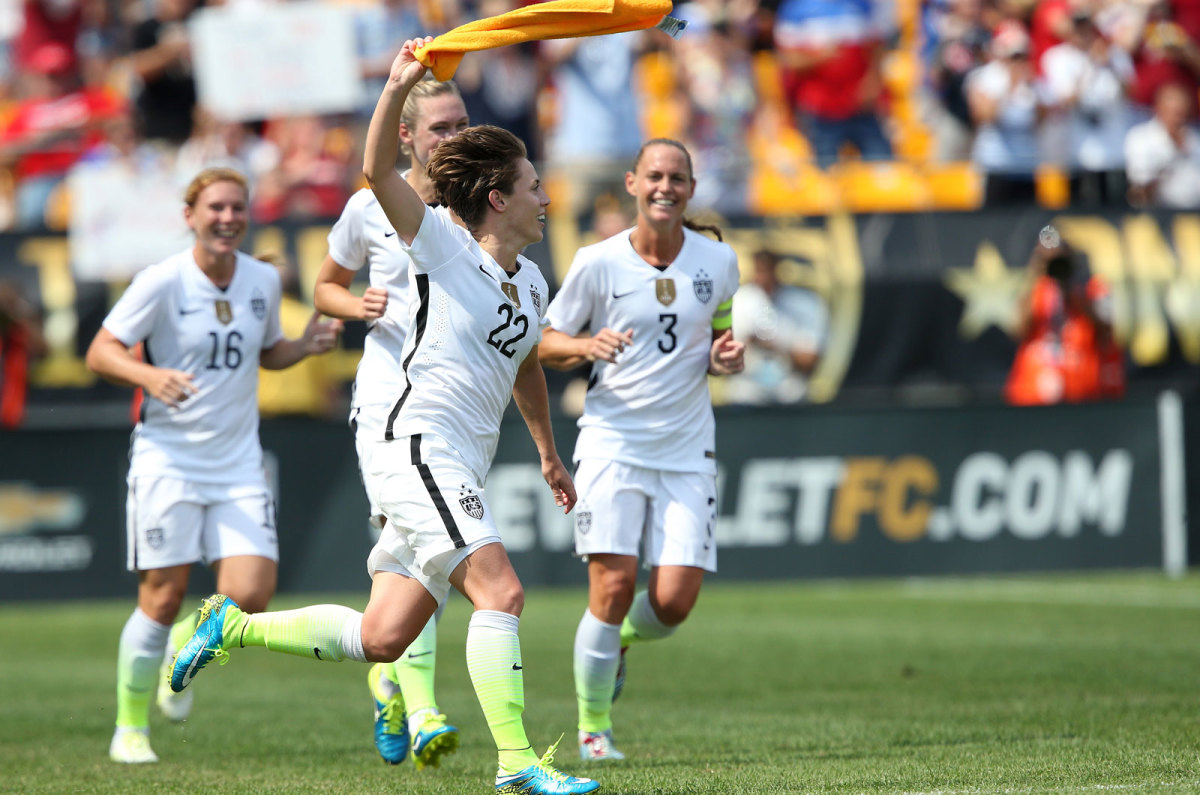
Meghan Klingenberg waves a Terrible Towel in her hometown of Pittsburgh after scoring one of the USA's many goals in an 8-0 rout of Costa Rica in its first game since winning the 2015 Women's World Cup.
USWNT vs. Costa Rica, August 19
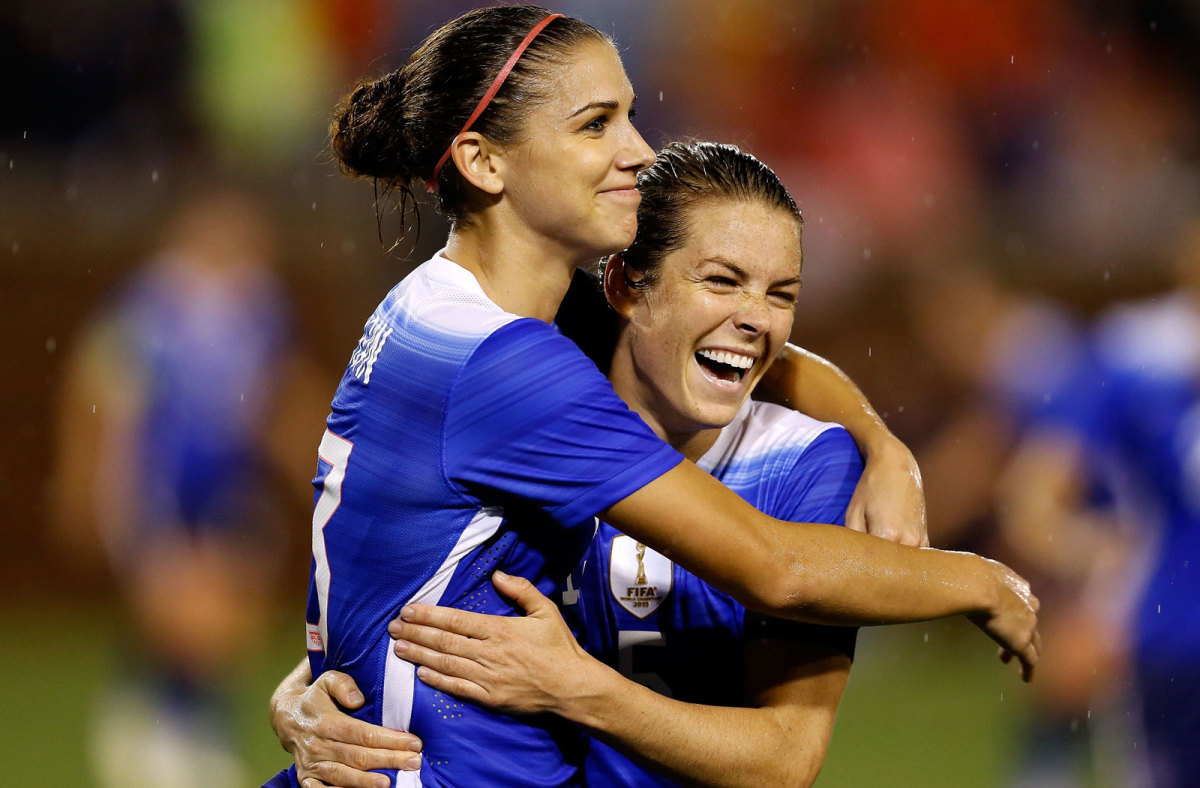
Alex Morgan and Kelley O'Hara celebrate during a second rout of Costa Rica in three days, this one a 7-2 win in Chattanooga, Tennessee.
USA U-23 vs. England U-21, Sept. 3
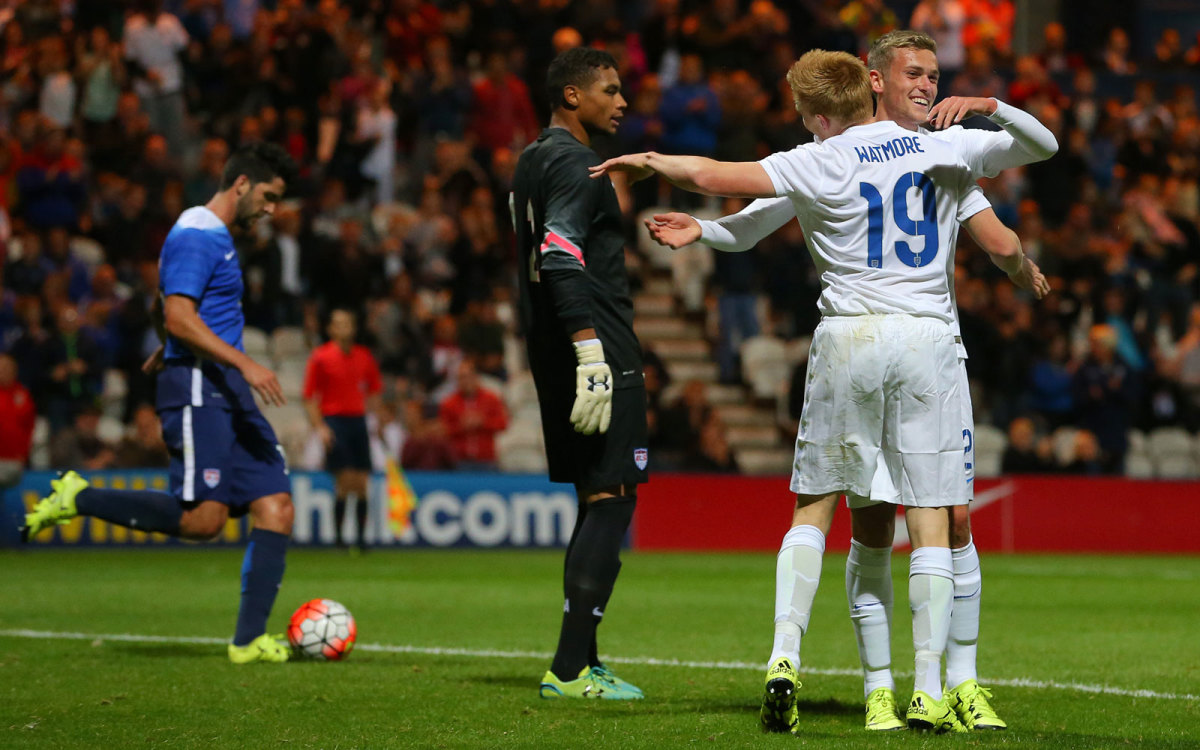
U.S. U-23 goalkeeper Zack Steffen looks on in disappointment as England U-21 forward James Wilson celebrates with Duncan Watmore after scoring the lone goal in a 1-0 friendly win in England.
USMNT vs. Peru, Sept. 4
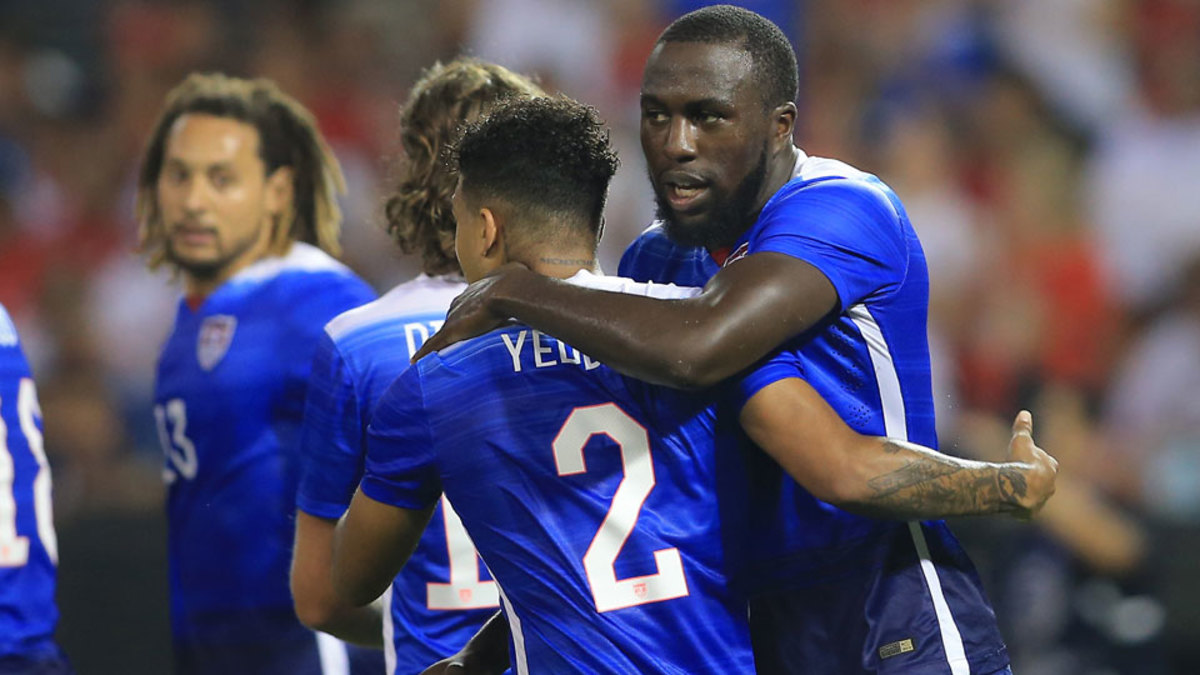
Jozy Altidore, right, is congratulated after one of his two goals that sparked the USA's come-from-behind win over Peru at RFK Stadium in Washington, D.C.
USA U-23 vs. Qatar, Sept. 8
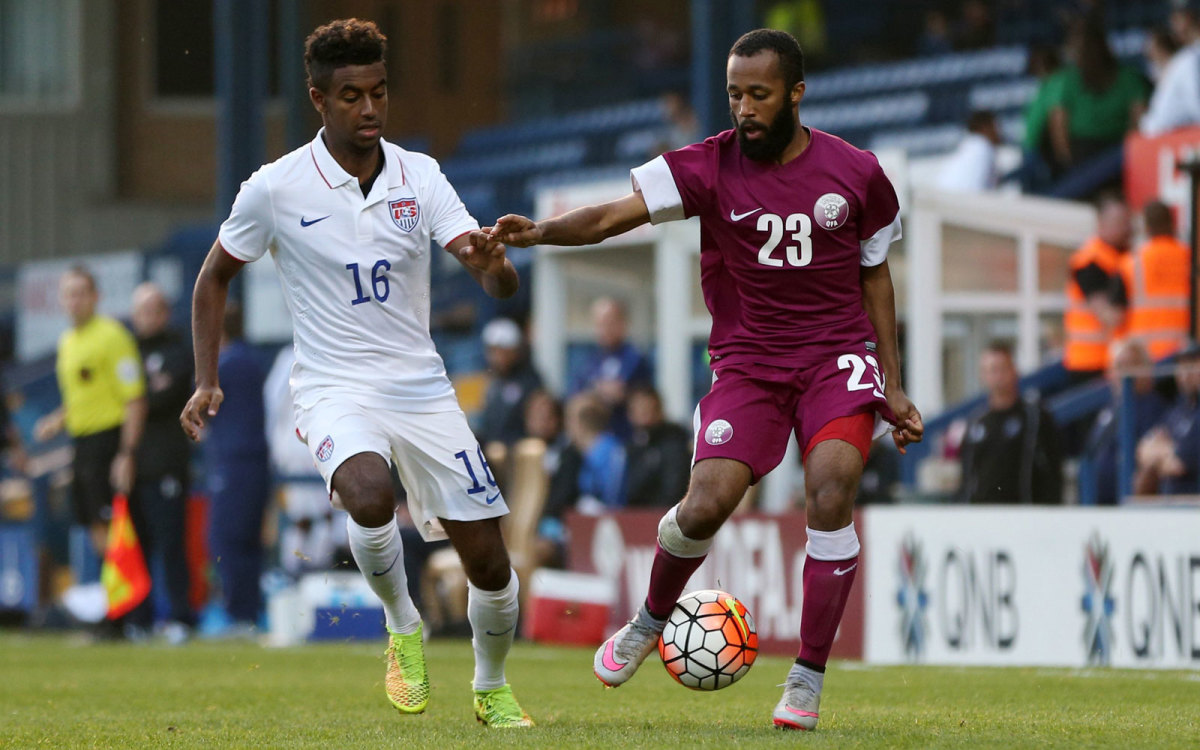
Gedion Zelalem made his U-23 debut off the bench in the USA's 2-0 win over Qatar in England in the final tune-up before Olympic qualifying
USMNT vs. Brazil, Sept. 8
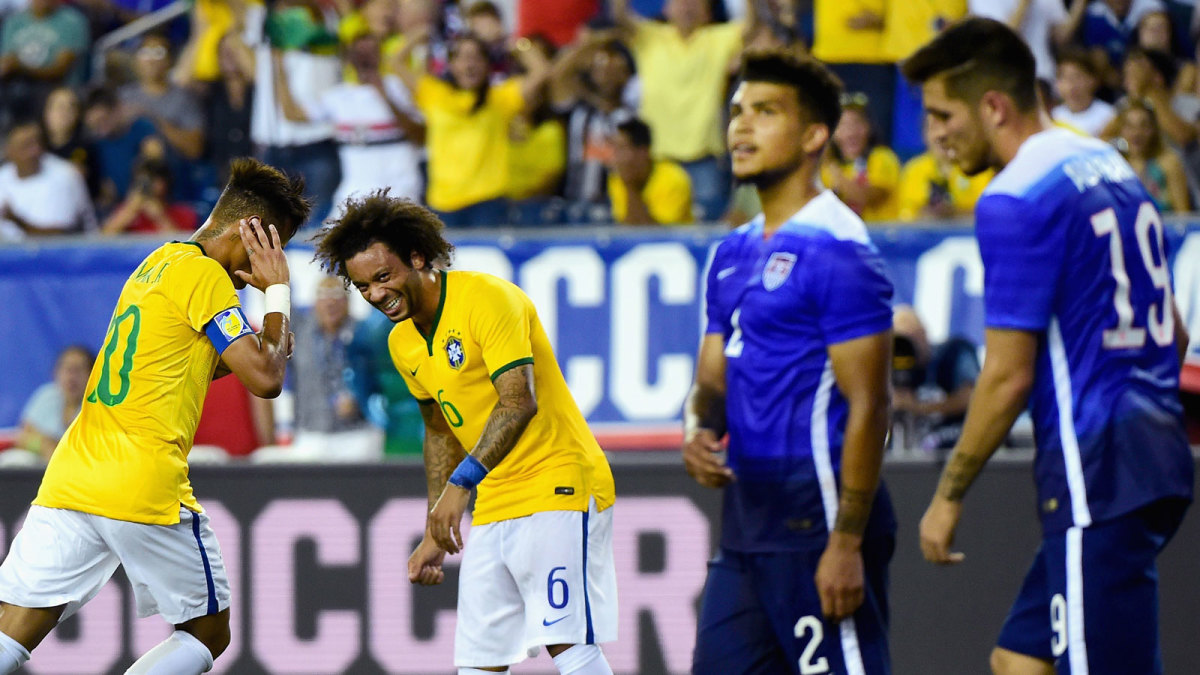
Neymar and Marcelo celebrate while DeAndre Yedlin and Ventura Alvarado look away in disgust during Brazil's 4-1 rout of the USA at Gillette Stadium.
USWNT vs. Haiti, Sept. 17, 20
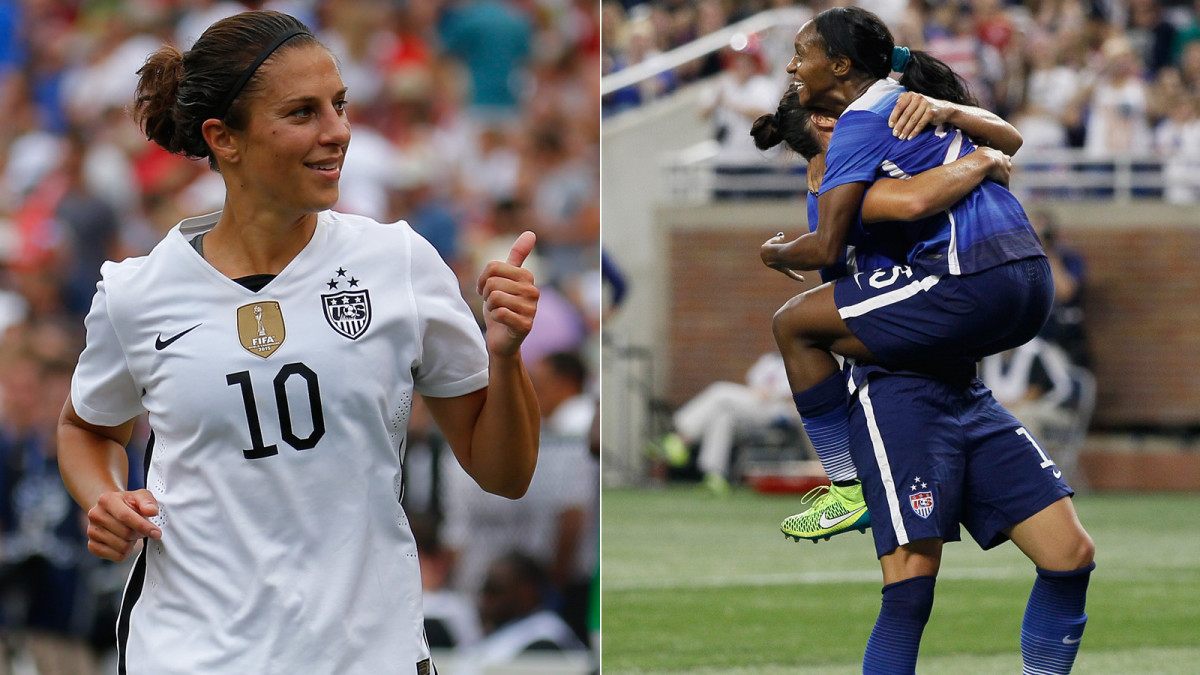
Carli Lloyd scored hat tricks in both games and NWSL Golden Boot winner Crystal Dunn scored her first international goals as the USWNT beat Haiti 5-0 and 8-0 in a pair of friendlies in Detroit and Birmingham, Alabama. Haiti replaced on-strike Australia as a last-minute opponent.
USA U-23 vs. Canada, October 1
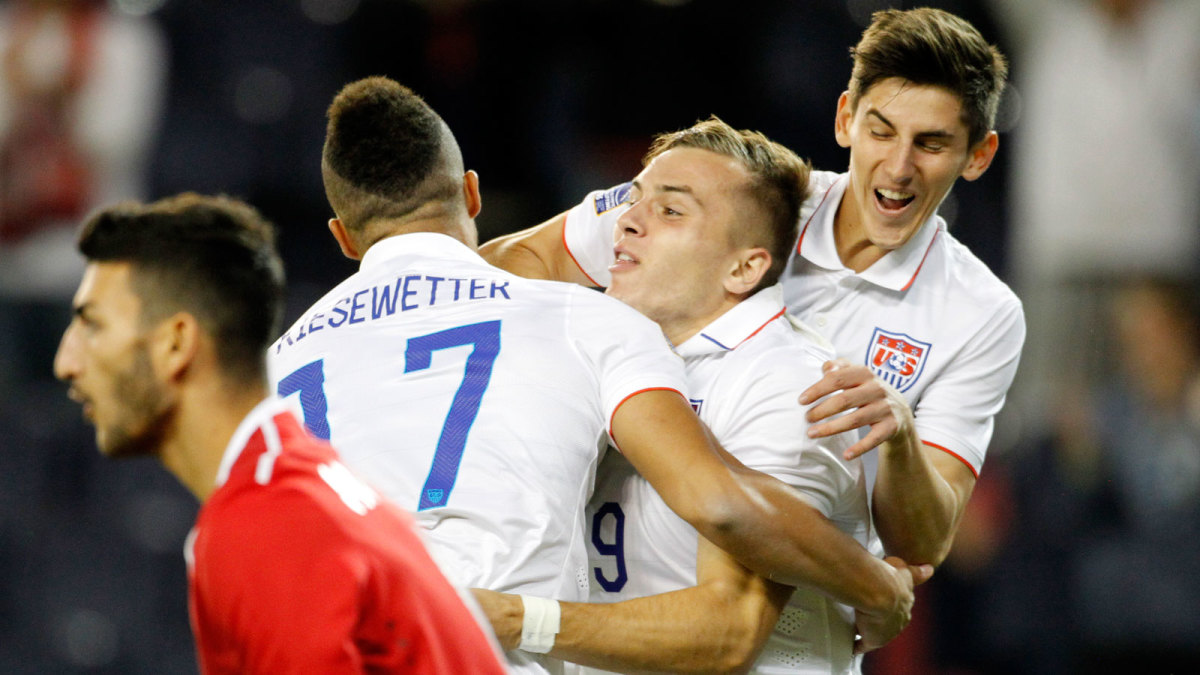
Jerome Kiesewetter, left, and Emerson Hyndman, right, sandwich Jordan Morris after his first-minute goal in the USA's 3-1 win over Canada in their Olympic qualifying opener.
USA U-23 vs. Cuba, October 3
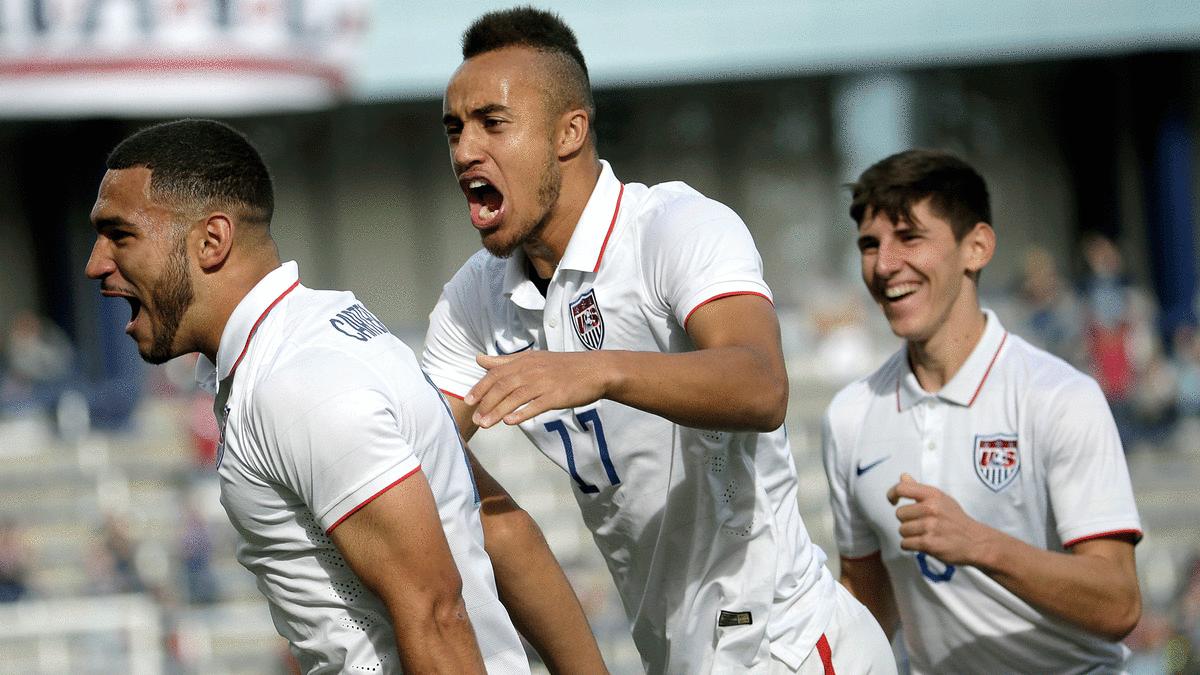
Cameron Carter-Vickers gets congratulated by Jerome Kiesewetter and Emerson Hyndman after opening the scoring in a 6-1 rout of Cuba in their Olympic qualifying match. The USA cemented its place in the semifinal round with the win.
USA U-23 vs. Panama, October 6
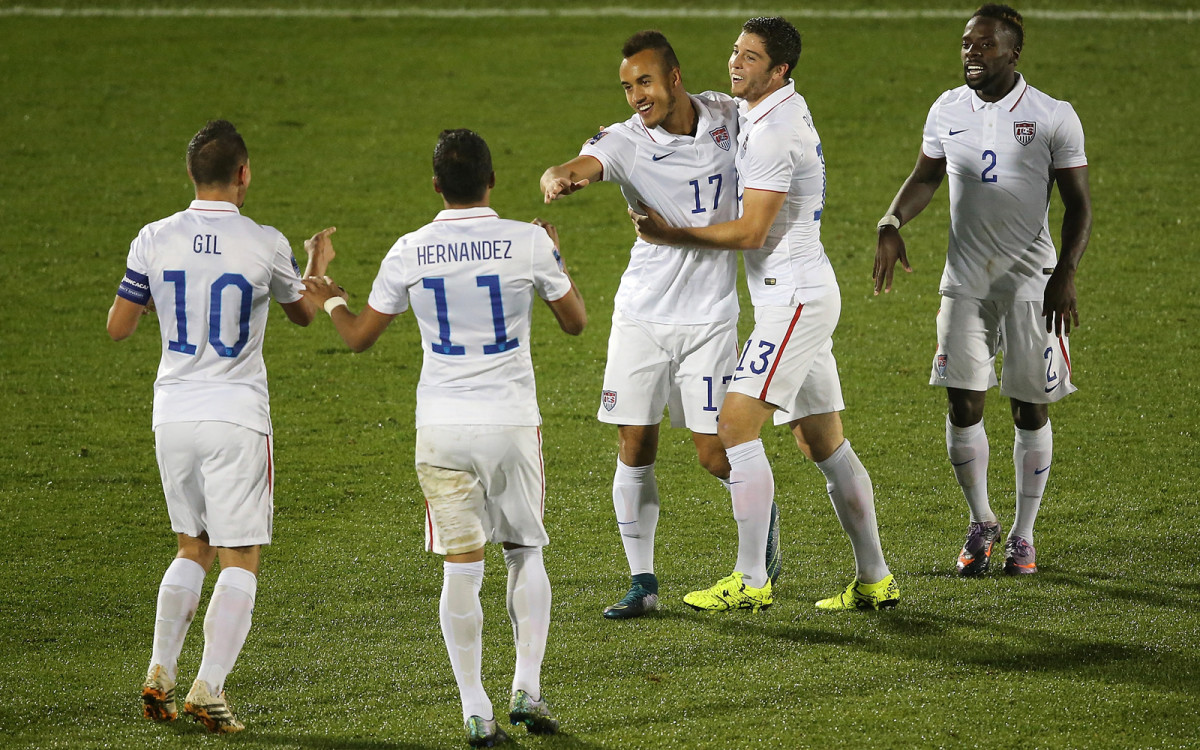
There was plenty of credit to go around, as the Americans finished off a perfect group run in Olympic qualifying with a 4-0 win over Panama. Jordan Morris and Jerome Kiesewetter came on at halftime and provided the spark needed to seize the three points.
USA U-23 vs. Honduras, October 10
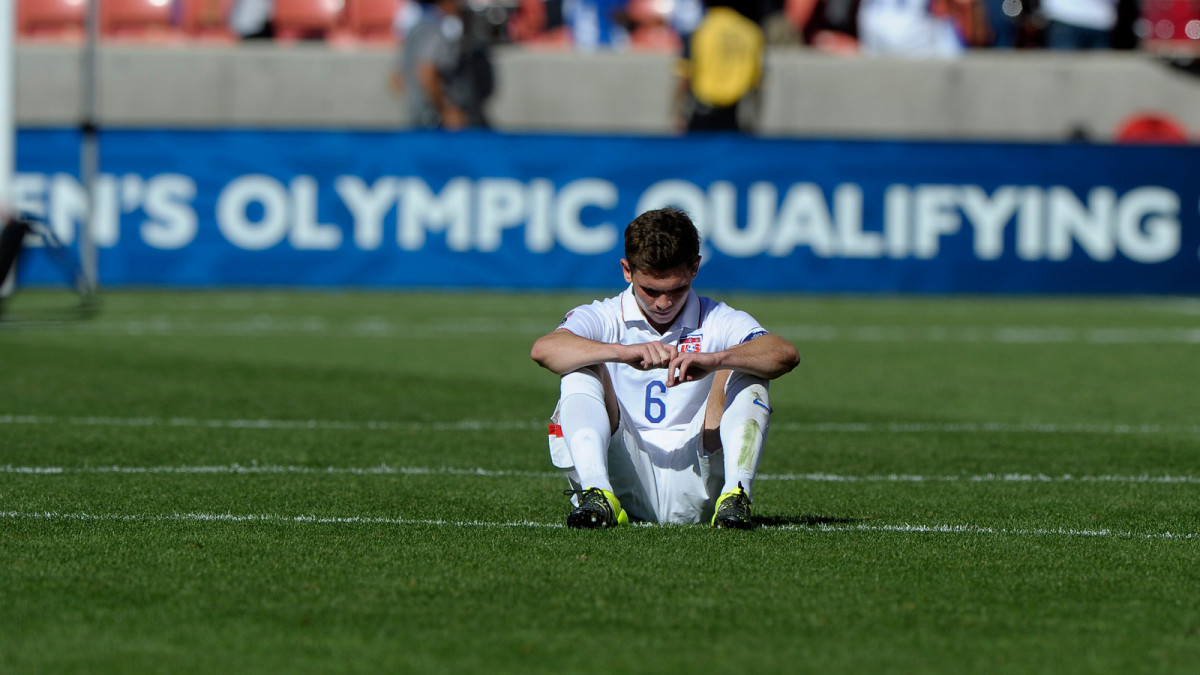
Wil Trapp's reaction says it all, as the USA failed to secure an automatic berth to the 2016 Olympics after falling to Honduras 2-0 in the semifinals of CONCACAF's Olympic qualifying tournament at Real Salt Lake's Rio Tinto Stadium.
USMNT vs. Mexico, October 10
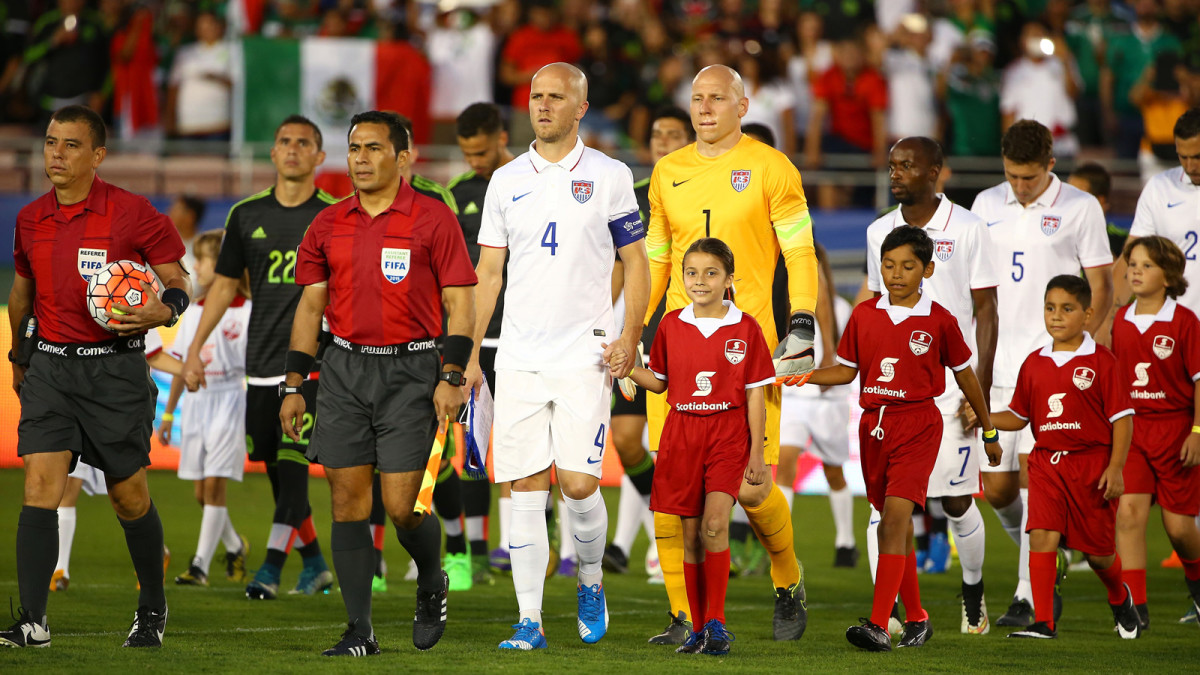
Captain Michael Bradley leads the USA out onto the field ahead of the Americans' CONCACAF Cup playoff vs. Mexico at the Rose Bowl.
USMNT vs. Mexico, October 10
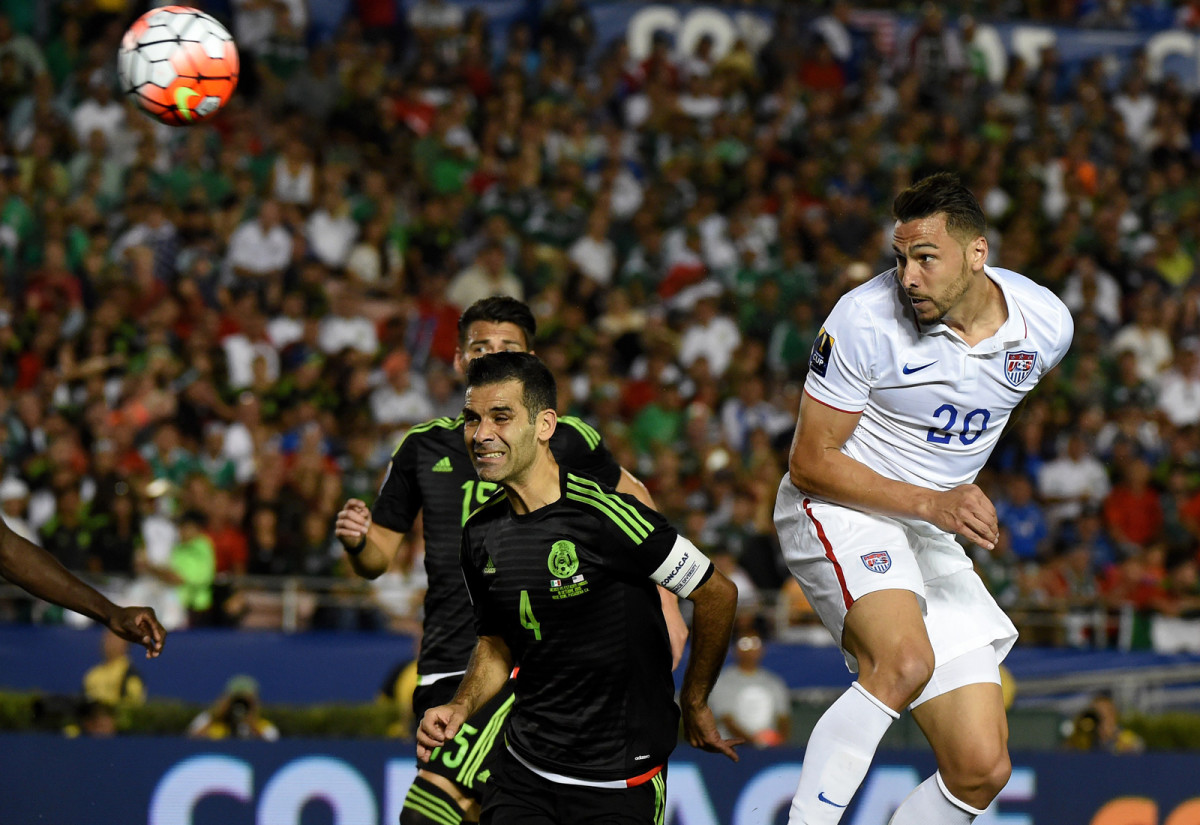
Geoff Cameron beats Rafa Marquez to the spot and heads home a 15th-minute equalizer off a free kick from Michael Bradley, negating a Chicharito goal five minutes earlier in the CONCACAF Cup playoff between USA and Mexico.
USMNT vs. Mexico, October 10
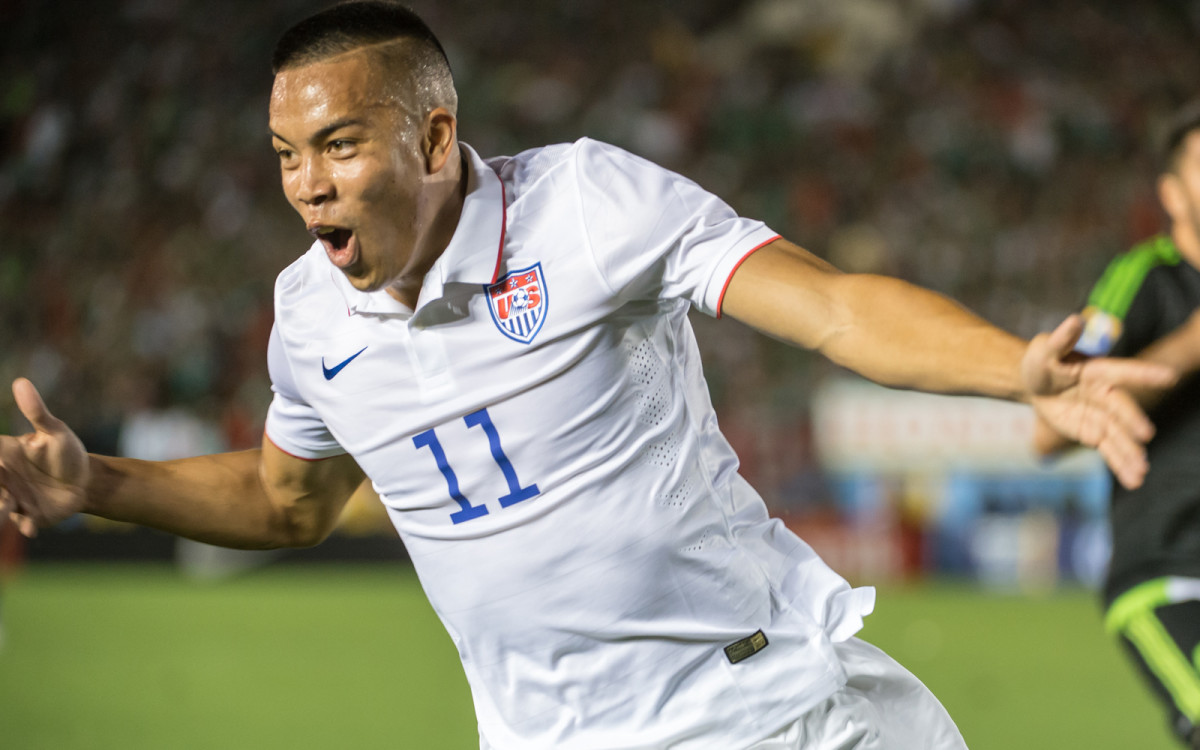
U.S. forward Bobby Wood celebrates his 108th-minute goal vs. Mexico that brought the Americans level at 2-2 after Oribe Peralta had given El Tri the lead in extra time. That reprieve would only last for 10 minutes, though.
USMNT vs. Mexico, October 10
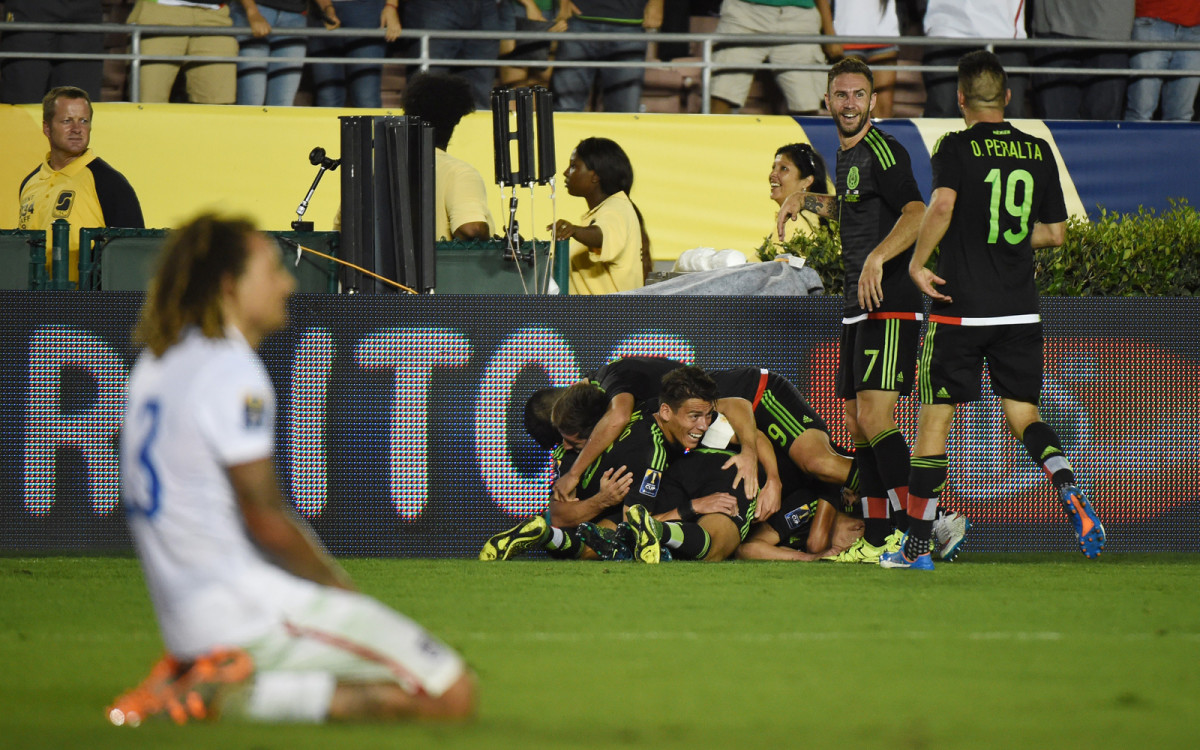
Jermaine Jones falls to his knees in disappointment as Mexico celebrates after Paul Aguilar's sensational volley in extra time captured the CONCACAF Cup for El Tri and sends the U.S. rival to the 2017 FIFA Confederations Cup.
USA U-23 vs. Canada, October 13
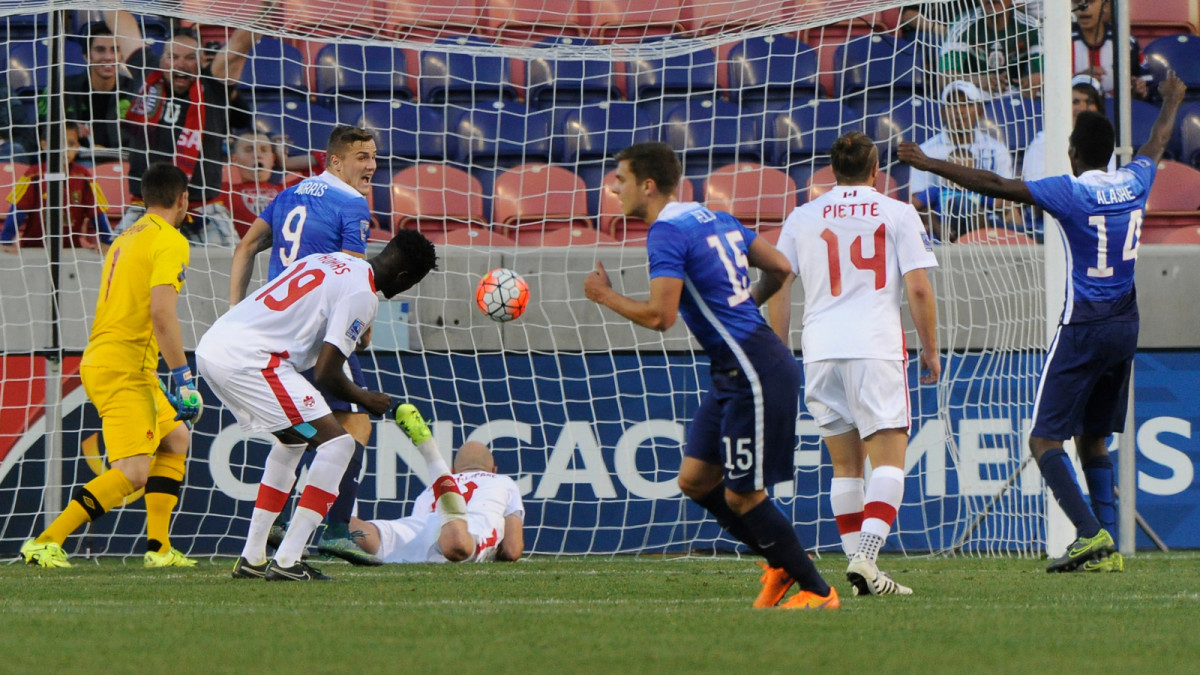
Marc Pelosi (15) celebrates after his goal breaks the deadlock and sends the U.S. U-23s on their way to a 2-0 win over Canada in CONCACAF's Olympic qualifying third-place game. The U.S. still has a chance to reach Rio, but it'll have to go through Colombia in a playoff.
USMNT vs. Costa Rica, October 13
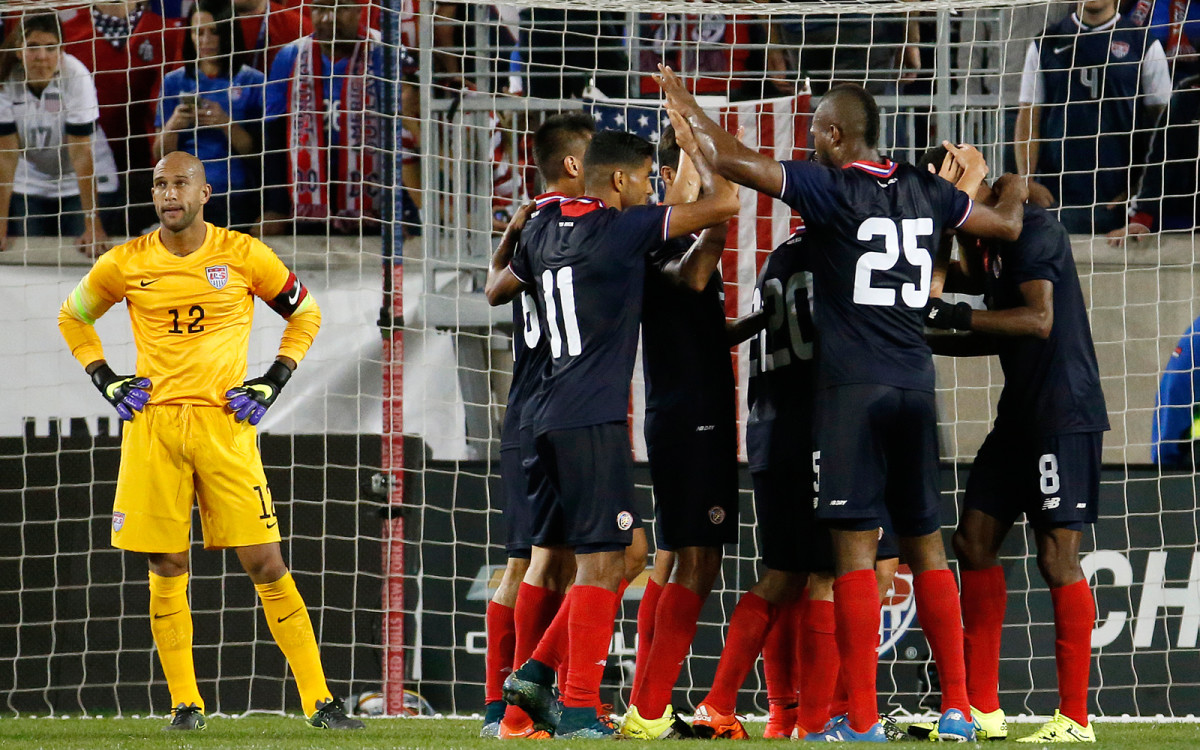
Tim Howard can't watch as Costa Rica players celebrate Joel Campbell's goal in a 1-0 friendly win at Red Bull Arena. The match marked Howard's return to the U.S. goal for the first time since the 2014 World Cup round of 16.
USA U-17 vs. Nigeria, October 17
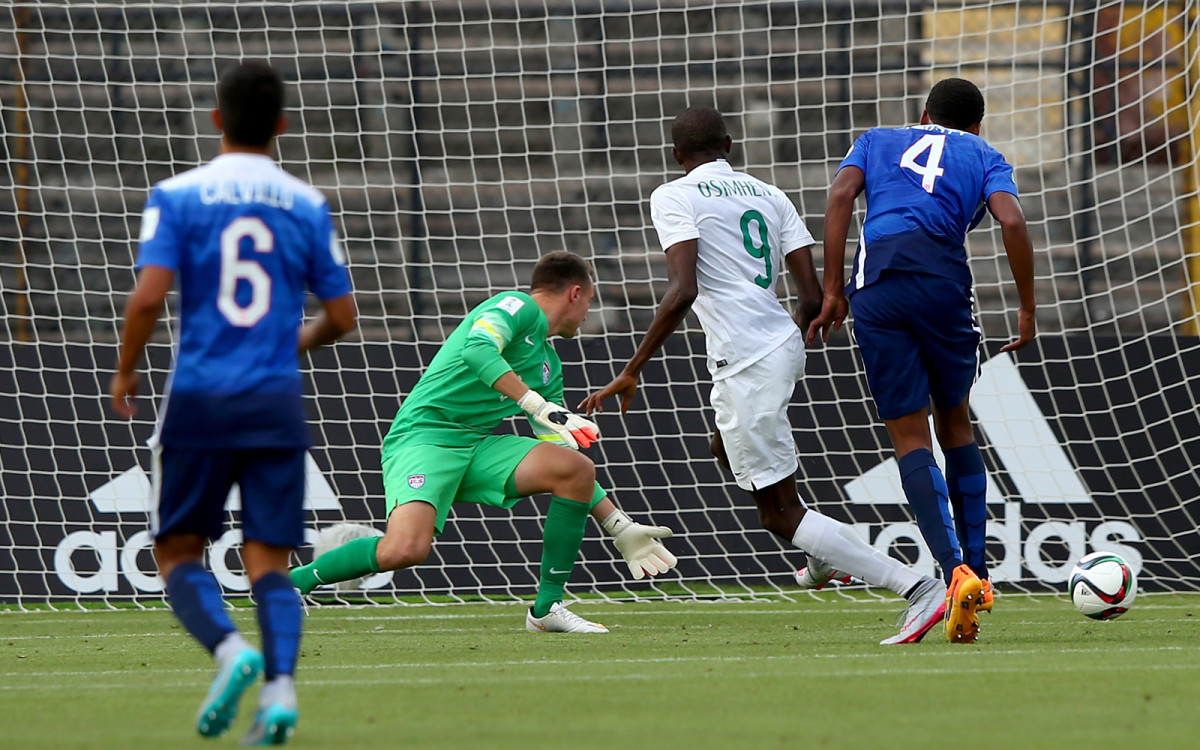
Victor Osimhen scores for Nigeria in a 2-0 win over the USA in the teams' FIFA Under-17 World Cup opener in Chile.
USA U-17 vs. Croatia, October 20
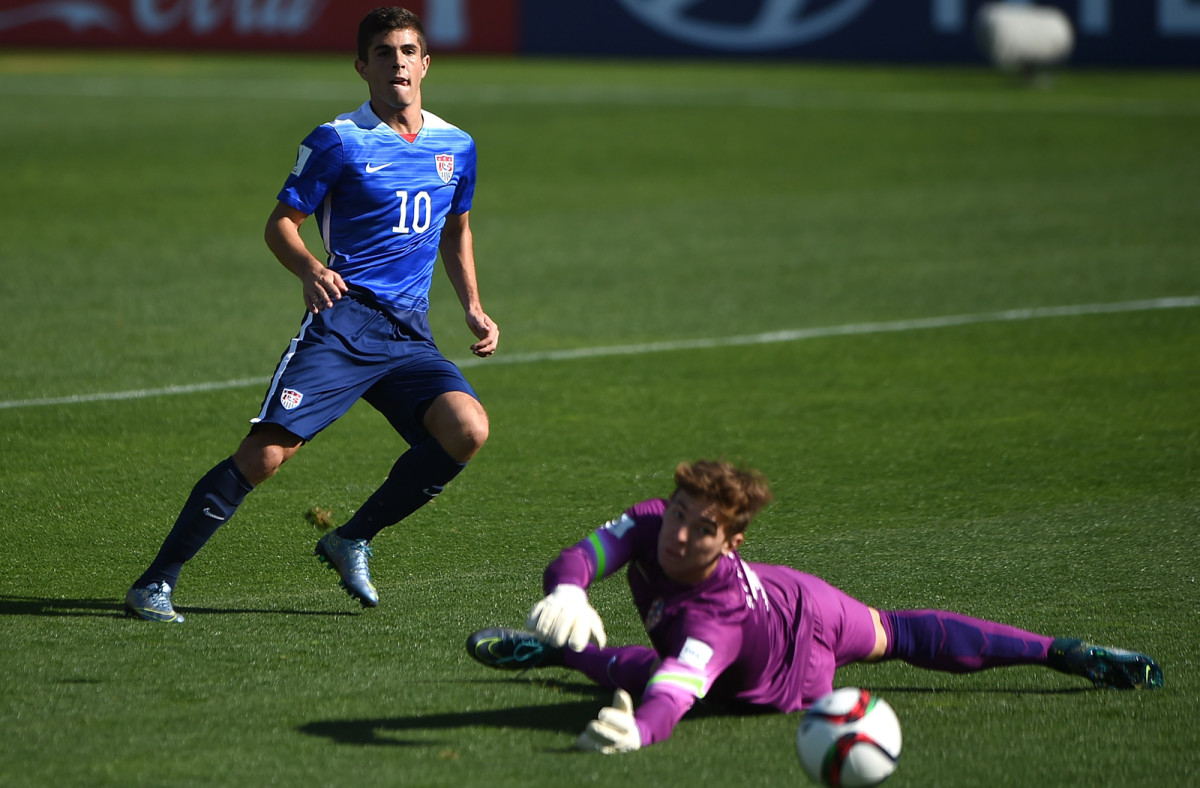
USA U-17 midfielder Christian Pulisic watches his opening goal find the back of the net in the Americans' 2-2 draw with Croatia at the World Cup. The U.S. led 2-0 on Pulisic's goal and assist to Brandon Vazquez, but the European side mounted a furious rally to salvage a point.
USWNT vs. Brazil, October 21
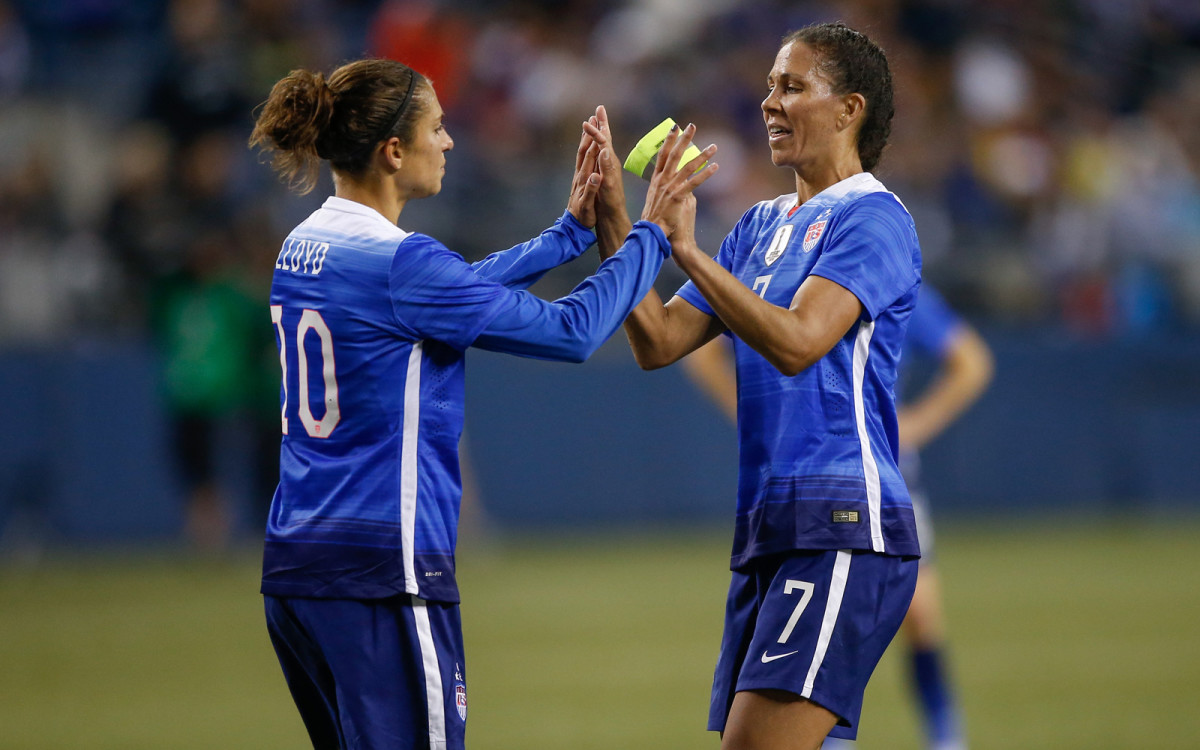
Shannon Boxx, right, passes off the captain's armband to Carli Lloyd in her final act as a player, riding into retirement in the first half of a 1-1 draw against Brazil in Seattle.
USA U-17 vs. Chile, October 23
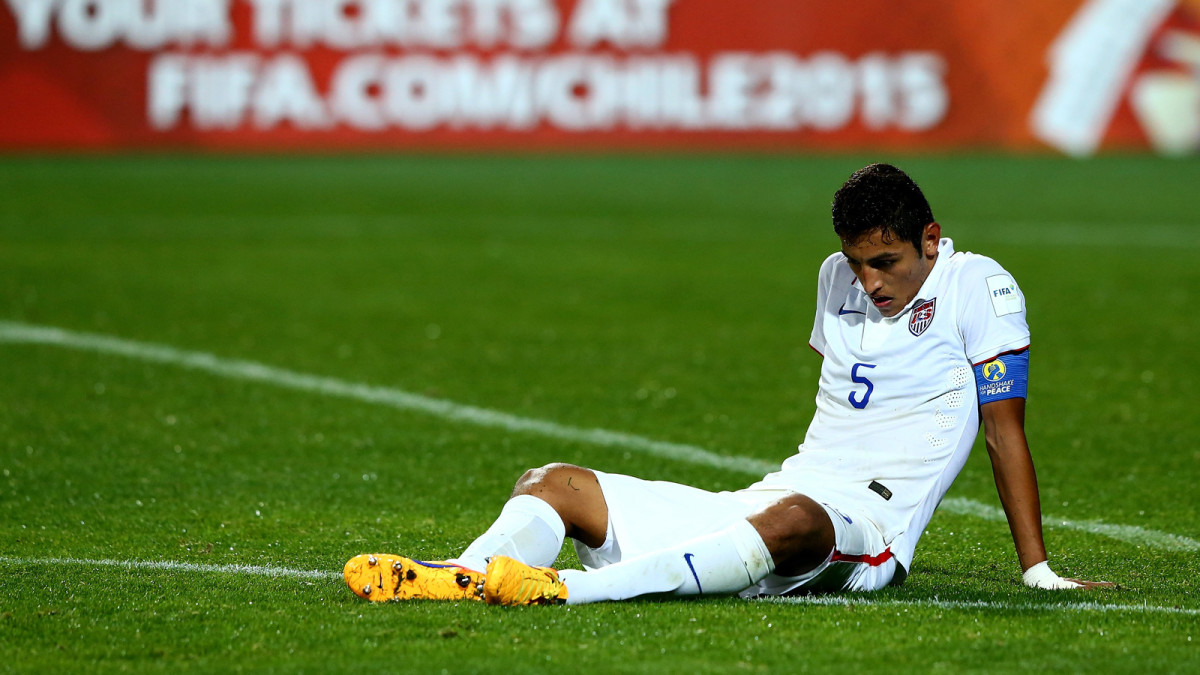
USA U-17 captain Hugo Arellano sits dejected after a 4-1 loss to host Chile eliminated the Americans from the World Cup in the group stage.
USWNT vs. Brazil, October 25
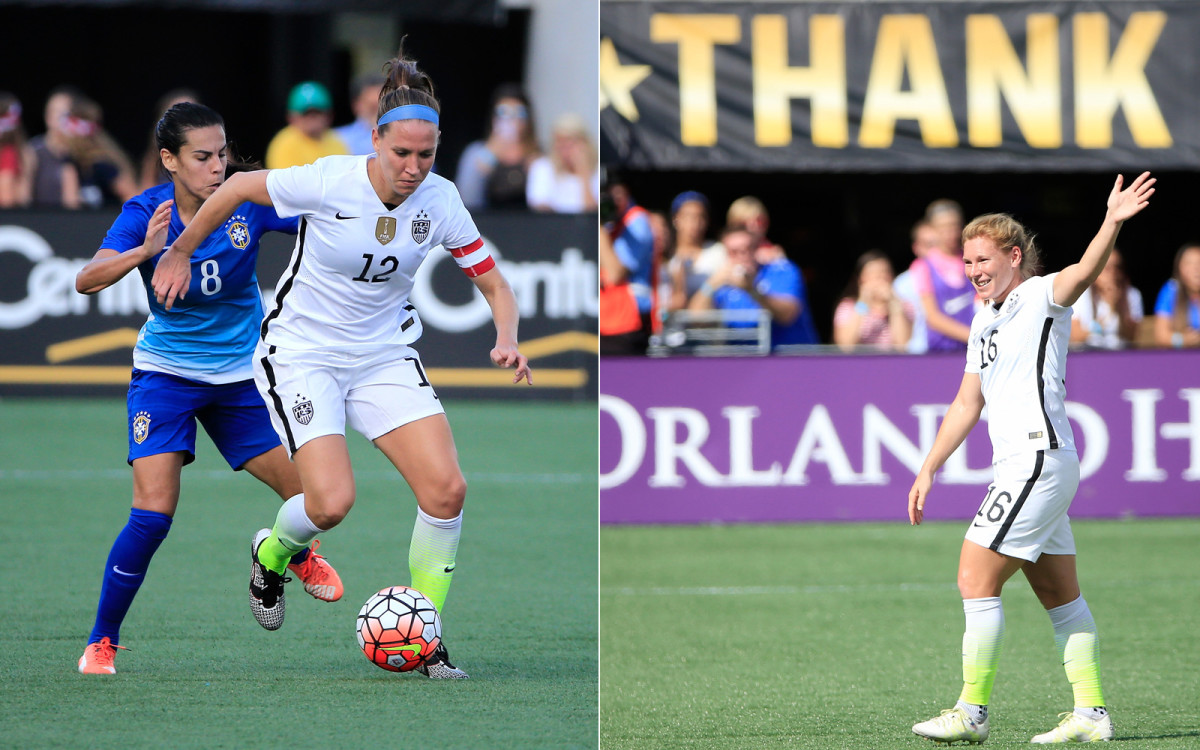
The USA said goodbye to two more veterans, with Lauren Holiday, left, and Lori Chalupny ending their careers during a 2-1 win over Brazil in Orlando. The team improved to 5-0-1 on its World Cup victory tour with the win.
USWNT at the White House, October 27
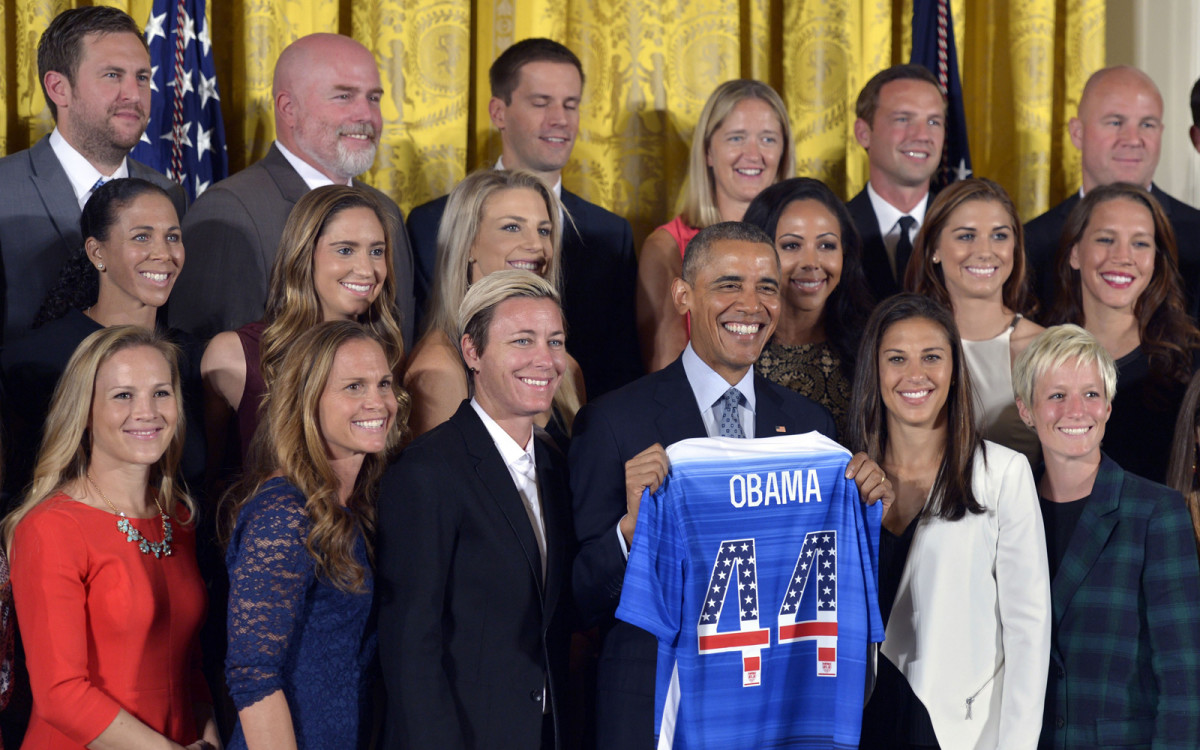
President Barack Obama welcomes the World Cup-champion USWNT to the White House, honoring their triumph in Canada.
USMNT vs. St. Vincent and the Grenadines, November 13
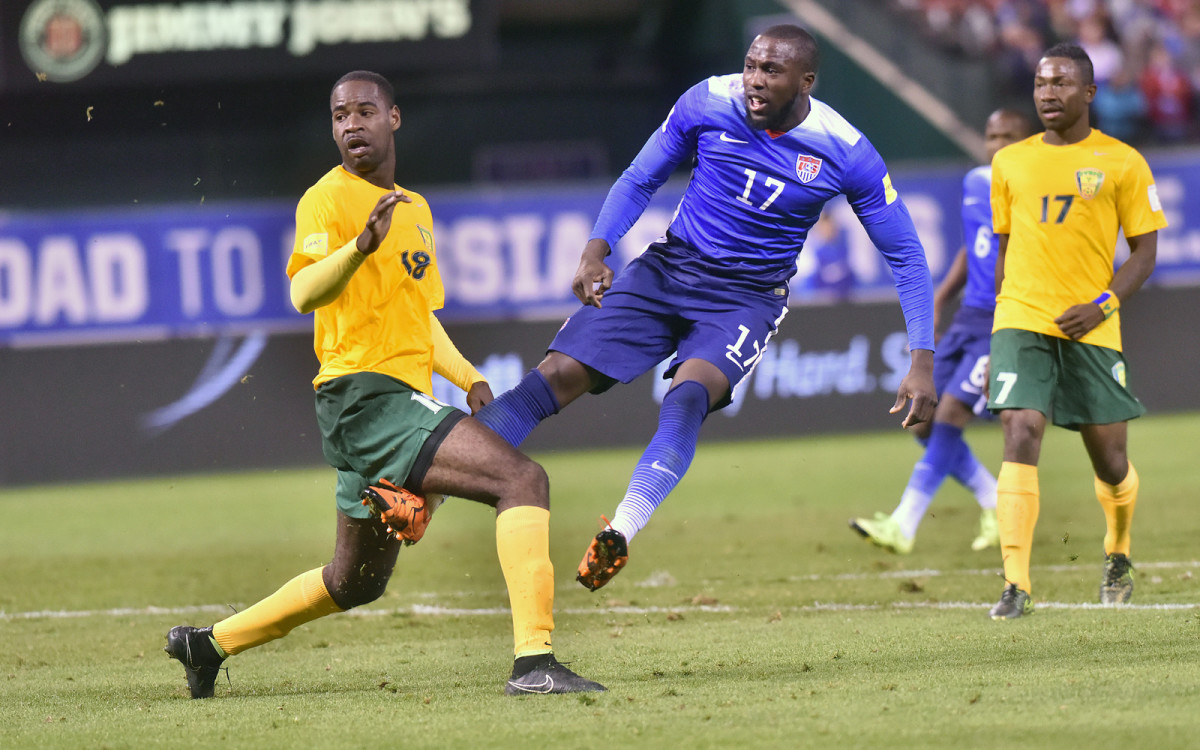
Jozy Altidore watches one of his shots head toward goal in the USA's 6-1 win over St. Vincent and the Grenadines in the opening of 2018 World Cup qualifying. Altidore scored twice, as the USA overcame a shocking early deficit and won at Busch Stadium in St. Louis.
USMNT vs. Trinidad and Tobago, November 17
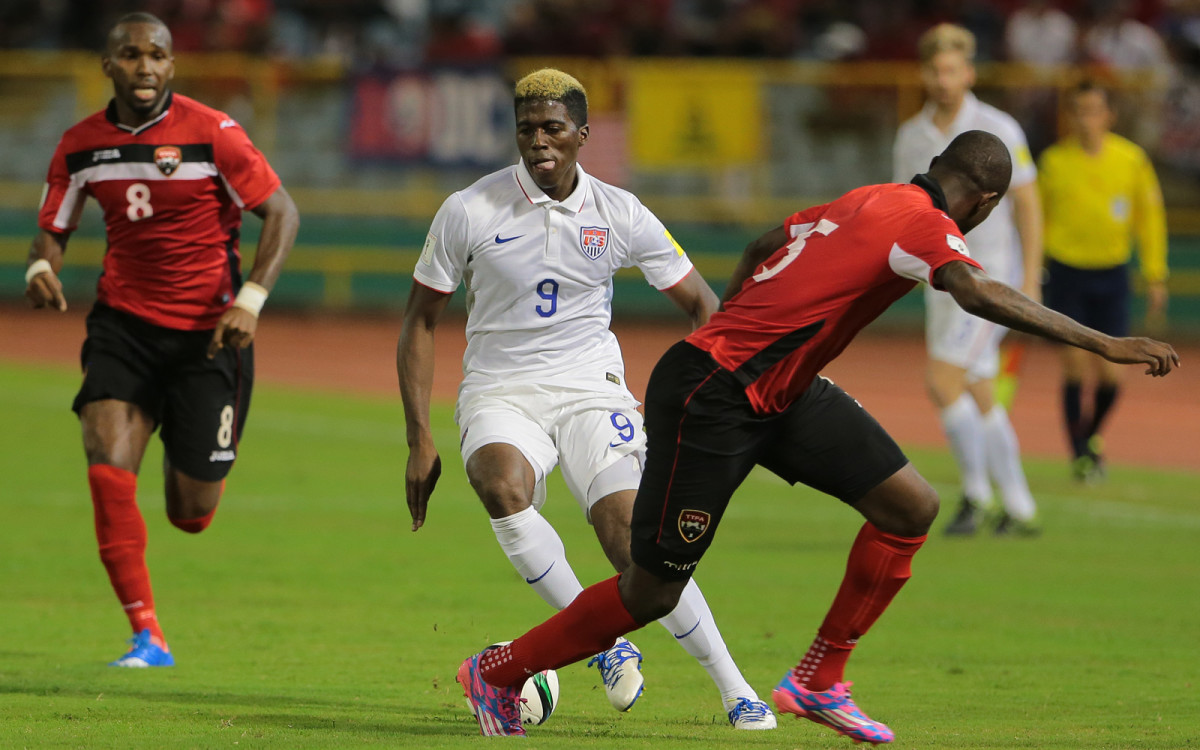
Gyasi Zardes and the U.S. men were held to a 0-0 draw by Trinidad and Tobago in Port of Spain, closing the year with a World Cup qualifying and sitting atop Group C in the semifinal round via goal differential tiebreaker.
USWNT vs. Trinidad & Tobago, December 10
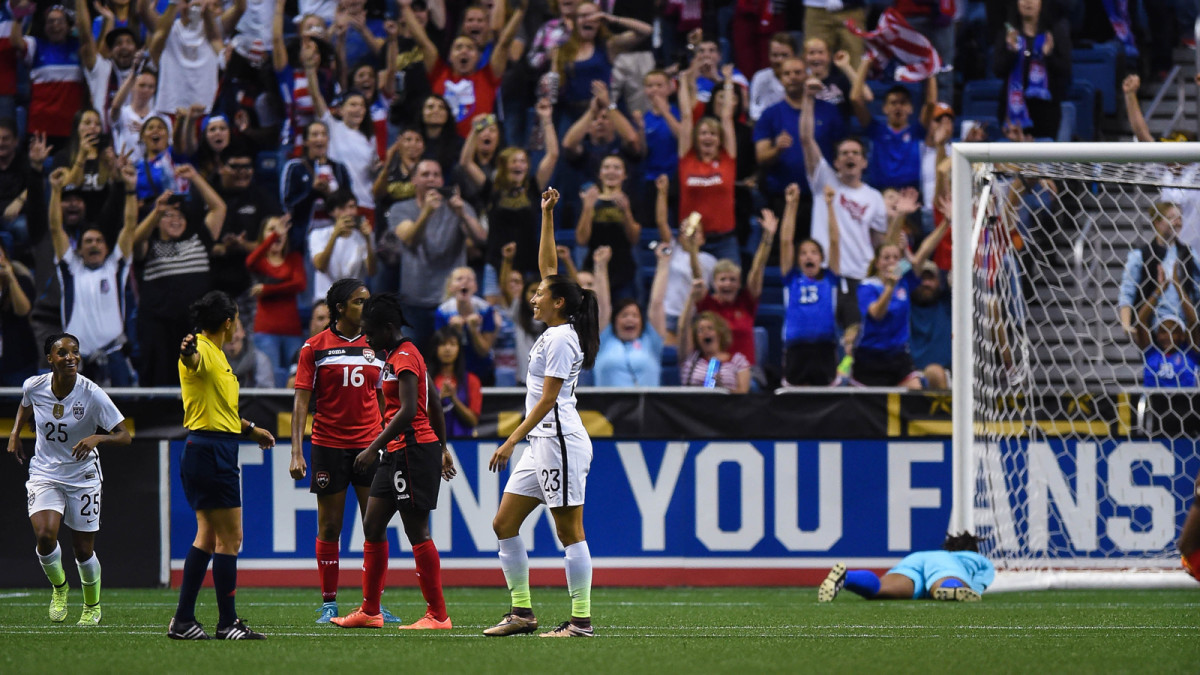
Christen Press triumphantly raises her hand after a goal during her hat trick in a 6-0 rout of Trinidad & Tobago at the Alamodome in San Antonio.
USWNT vs. China, December 13
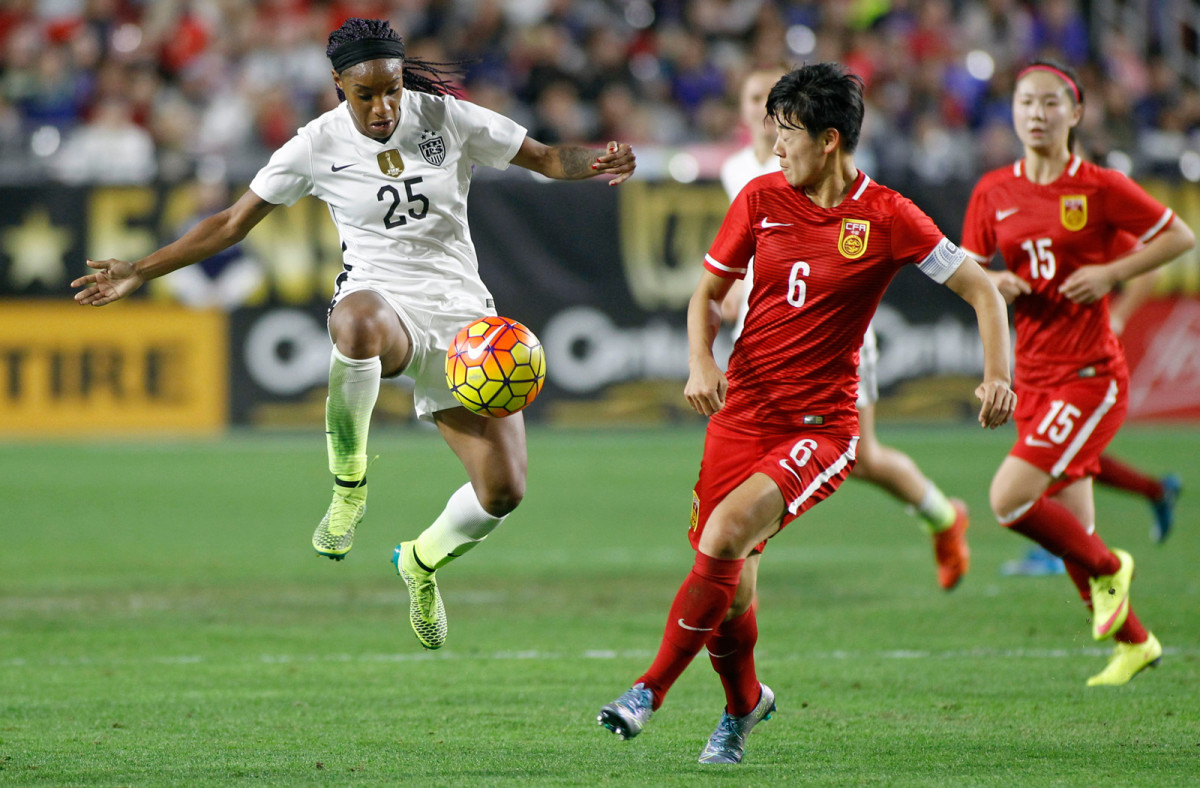
Crystal Dunn leaves her feet to settle a pass in the USA's 2-0 win over China at University of Phoenix Stadium in Glendale, Arizona. Dunn and Christen Press scored the goals.
USWNT vs. China, December 16
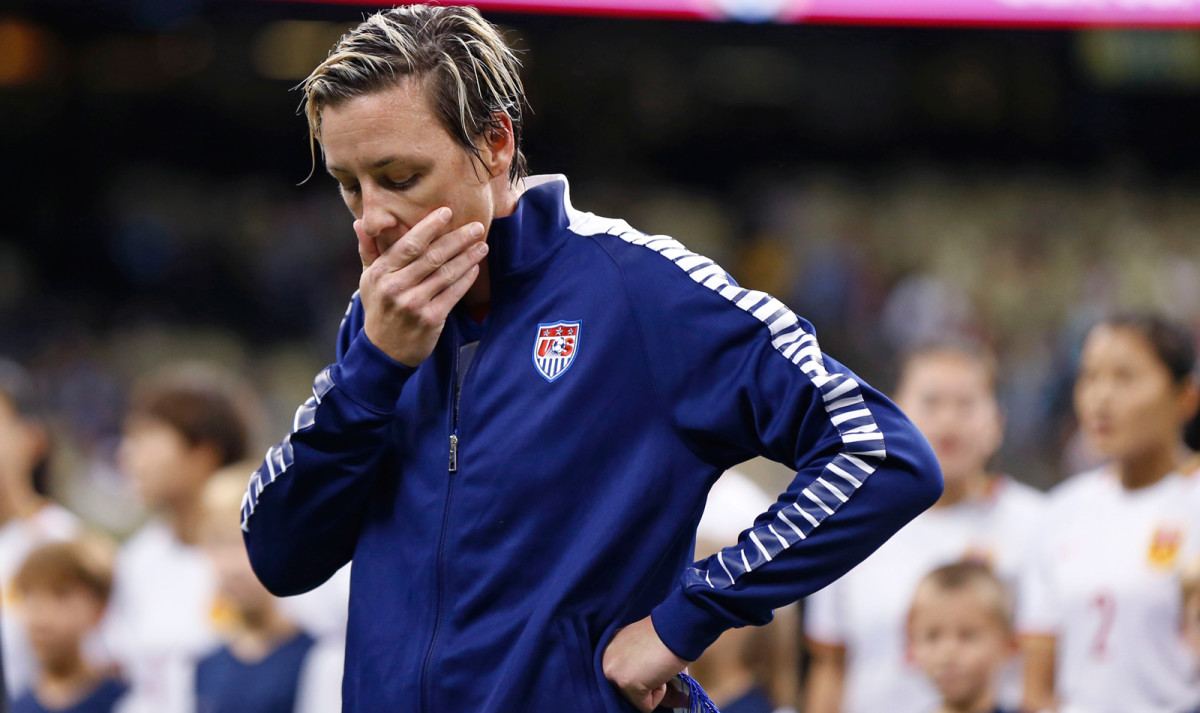
Abby Wambach is introduced in the U.S. lineup for the last time at the Superdome in New Orleans, playing in her final match before retiring. She ends her U.S. career with 255 appearances and an international-record 184 goals.
“For Mexico, it’s the same ambition. They want to compete with the best in the world. They want to grow. They want to be better. Both of us want to be the No. 1 in CONCACAF,” Klinsmann said, adding that both teams are seeking to stretch and challenge themselves abroad. The U.S. continues to schedule games in Europe and in June, it will visit Netherlands and Germany. Mexico will warm up for July’s Gold Cup by playing in the Copa América in Chile.
“We’re in very similar situations,” Klinsmann said. “Around the world you have those rivalries. You have those big matchups, if you play Brazil-Argentina, in Europe you play a Germany-Holland or France-Italy. On the club level you have the big events, Barcelona-Real Madrid and whenever Tottenham and Arsenal play, Inter Milan-AC Milan. Those are special opportunities for players and they are wonderful memories for them to have later on. They are special games in their communities and for fans as well. That’s what they’re talking about the next couple of days to keep it alive.”
Yarbrough, who made his U.S. debut in last month’s 1-1 draw against Switzerland, grew up in Aguascalientes and now tends goal for Club León. He said CONCACAF’s new competitive reality, and Mexico’s desire to be more a global player, hasn’t altered the tenor of the rivalry in his native country.
“Living in Mexico, every time there’s a game against the U.S., you can just tell right away how important it is to Mexico. It’s a big deal. A week prior to the game, it’s something that’s looked at pretty intensely down in Mexico too, just because of the rivalry that exists,” Yarbrough said. “It’s always been there and it’ll keep being there in the future.”
That’s the case north of the border, as well.
“I certainly think that for us, as we try to move ourselves forward, as we try to improve, our results and performances in big games against big teams will always be important to us,” Bradley said. “But nothing can ever change U.S.-Mexico.”
GALLERY: USA vs. Mexico through the years
USA vs. Mexico Soccer
November 11, 2016 – Mexico 2, USA 1
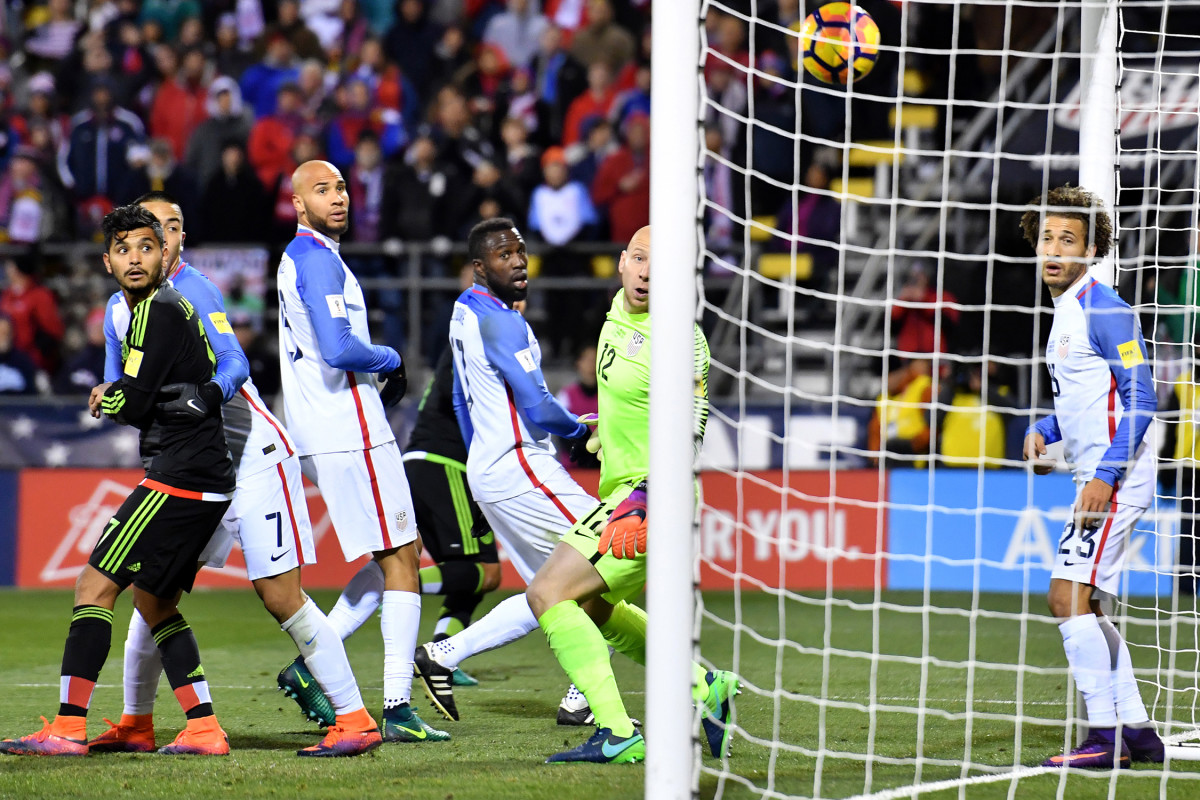
USA and Mexico players watch Rafa Marquez's 89th-minute header find the net in a famous World Cup qualifying win in Columbus for El Tri.
October 10, 2015 – Mexico 3, USA 2 (AET)

Jermaine Jones falls to his knees in disappointment as Mexico celebrates after Paul Aguilar's sensational volley in extra time captured the CONCACAF Cup for El Tri and sends the U.S. rival to the 2017 FIFA Confederations Cup.
April 15, 2015 — USA 2, Mexico 0
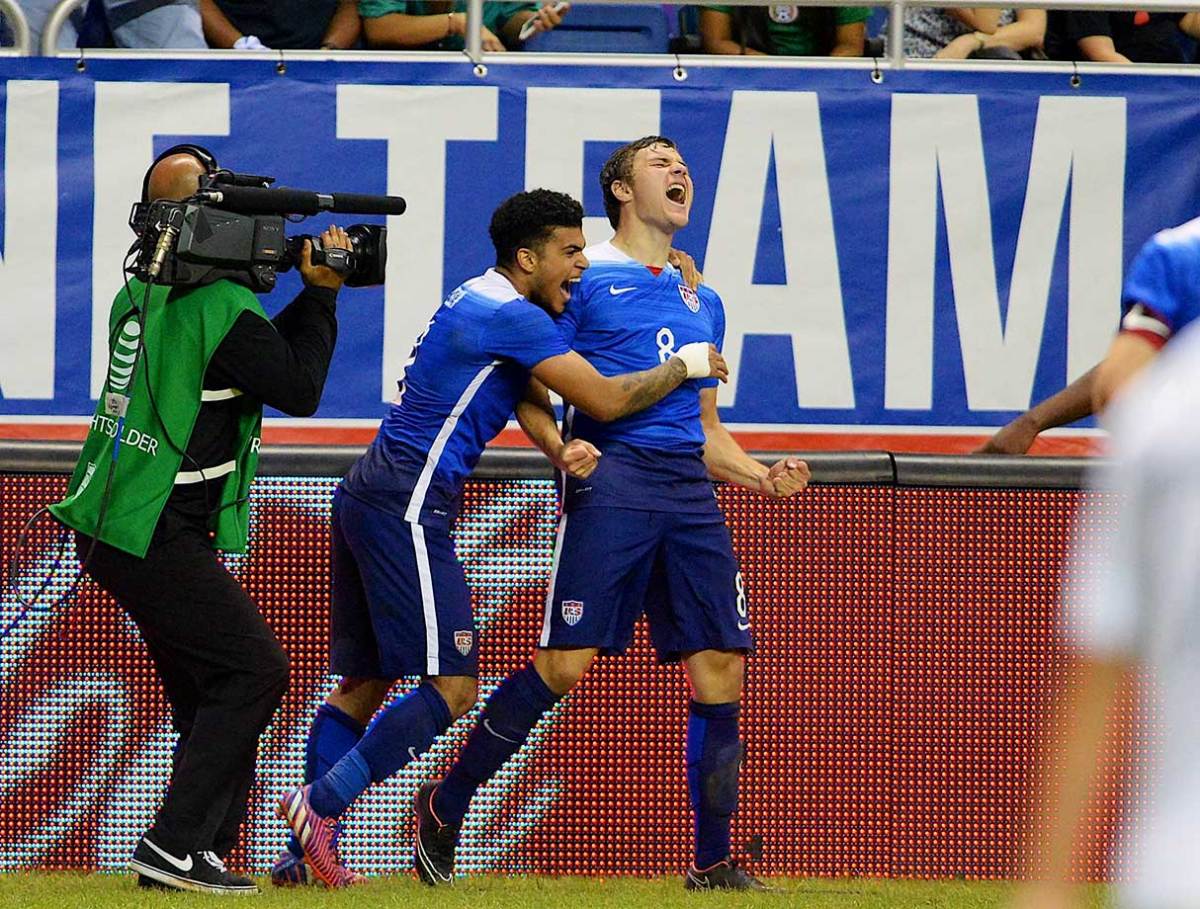
Stanford University's Jordan Morris marked his first senior national team start with his first international goal, sparking the USA in another 2-0 triumph over Mexico, this one at the Alamodome in San Antonio.
September 10, 2013 — USA 2, Mexico 0
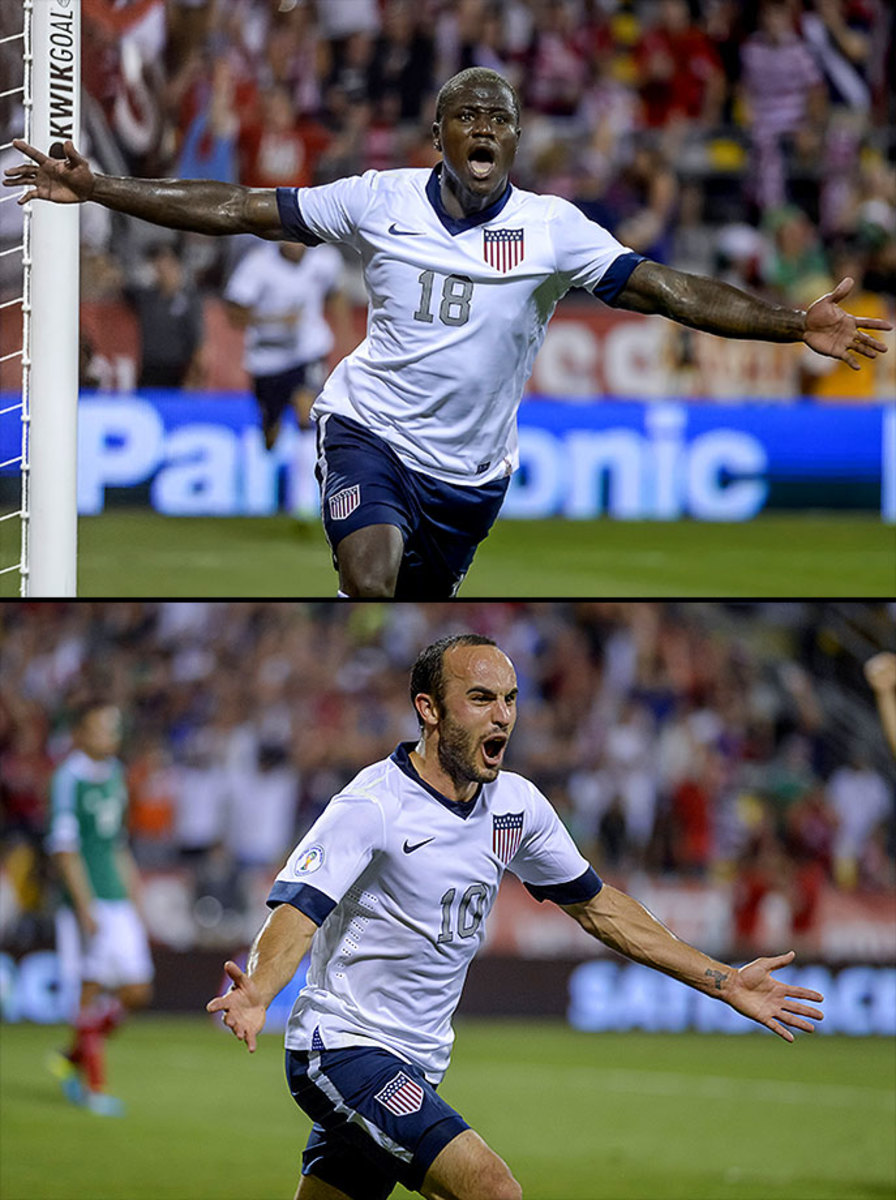
Eddie Johnson and Landon Donovan scored second-half goals to beat El Tri by the same score for the fourth consecutive qualifier in Columbus, Ohio.
March 26, 2013 — USA 0, Mexico 0
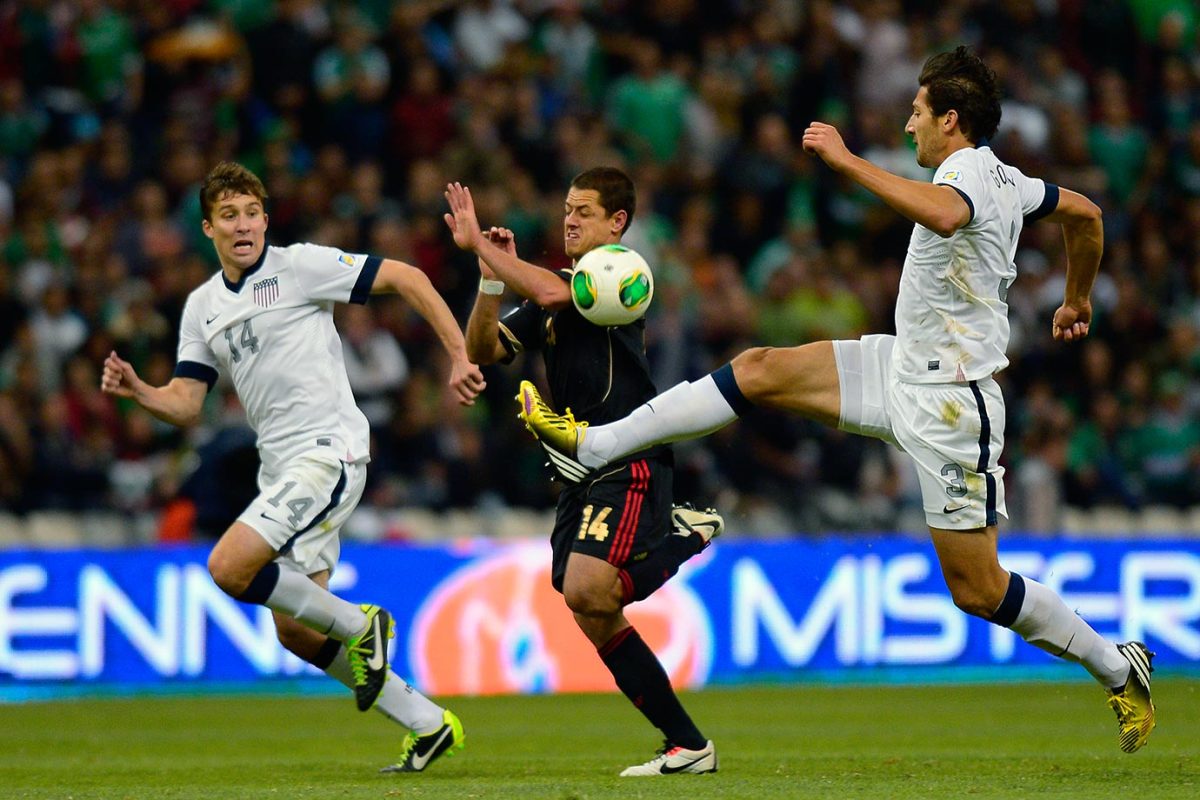
Clint Dempsey captained the U.S. to a 0-0 draw at Estadio Azteca, the second time ever the Americans registered a point in World Cup qualifying in Mexico (the other a 1997 tie). Defenders Omar Gonzalez and Matt Besler were the stars as Mexico couldn't cash in on several opportunities. The U.S. escaped to remain in second place in CONCACAF qualifying.
August 15, 2012 — USA 1, Mexico 0
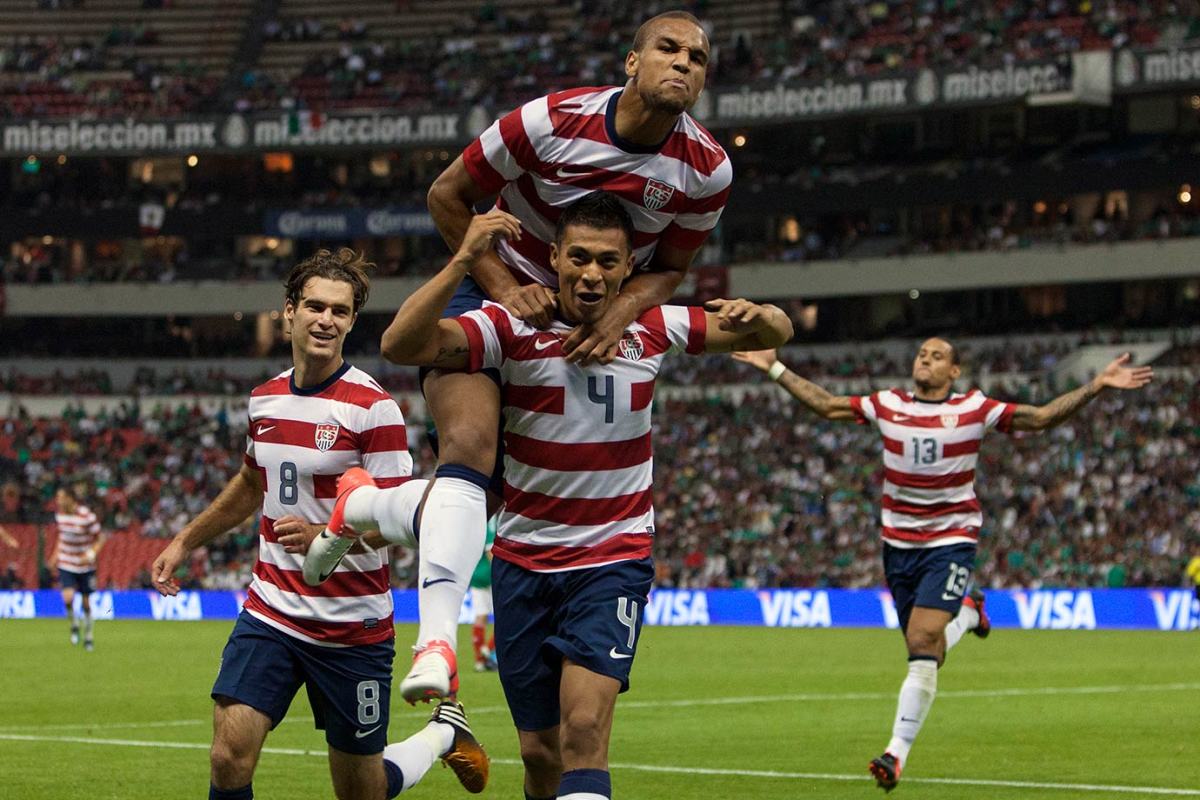
It took 25 attempts, but after this friendly, the United States could finally say that it had won at Mexico City's Azteca Stadium. Despite being outplayed for most of the match, the U.S. won thanks to an 80th-minute goal from Michael Orozco Fiscal — the first international goal of his career.
August 10, 2011 — USA 1, Mexico 1
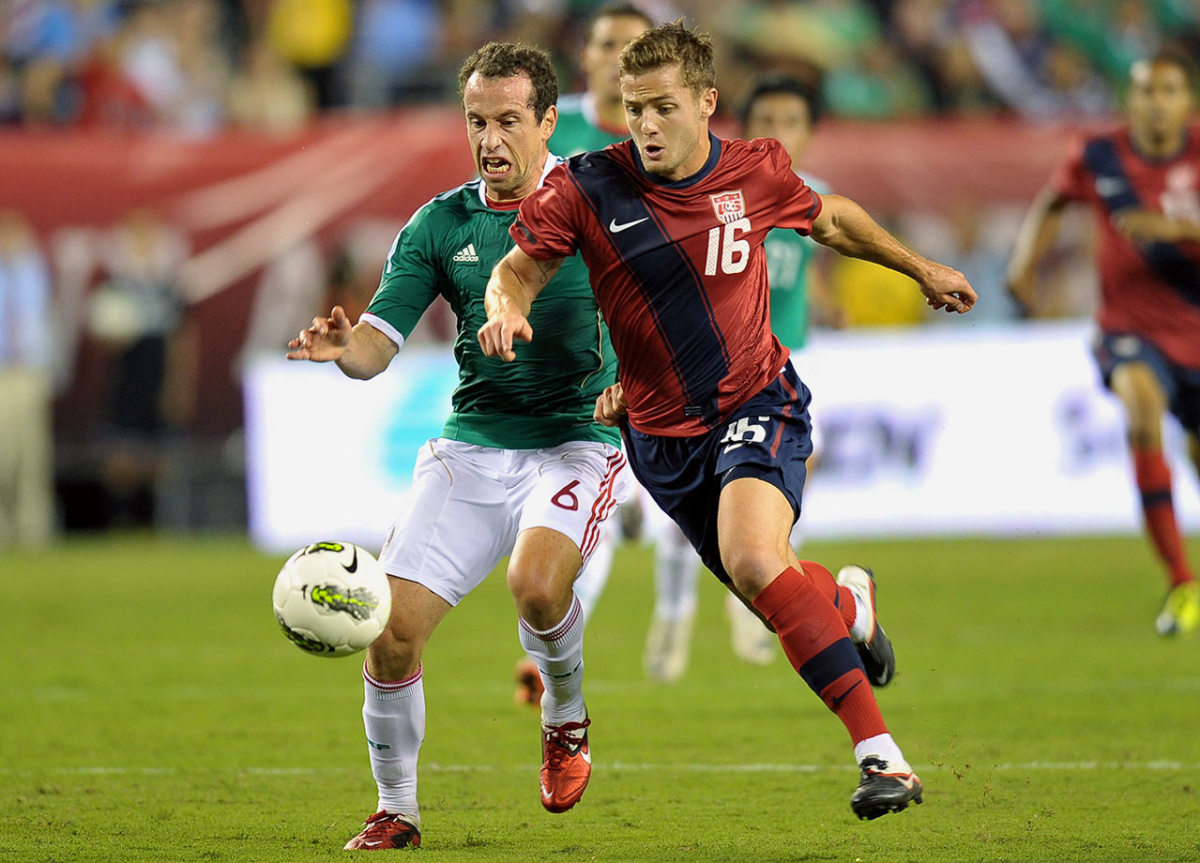
Head coach Jurgen Klinsmann's U.S. debut got off to a rough start, as the Americans trailed Mexico, 1-0 after an uninspired first half in Philadelphia. The U.S. showed more verve after halftime, though, and an impressive display from Brek Shea and a 73rd-minute goal from Robbie Rogers led to a 1-1 draw.
June 25, 2011 — Mexico 4, USA 2
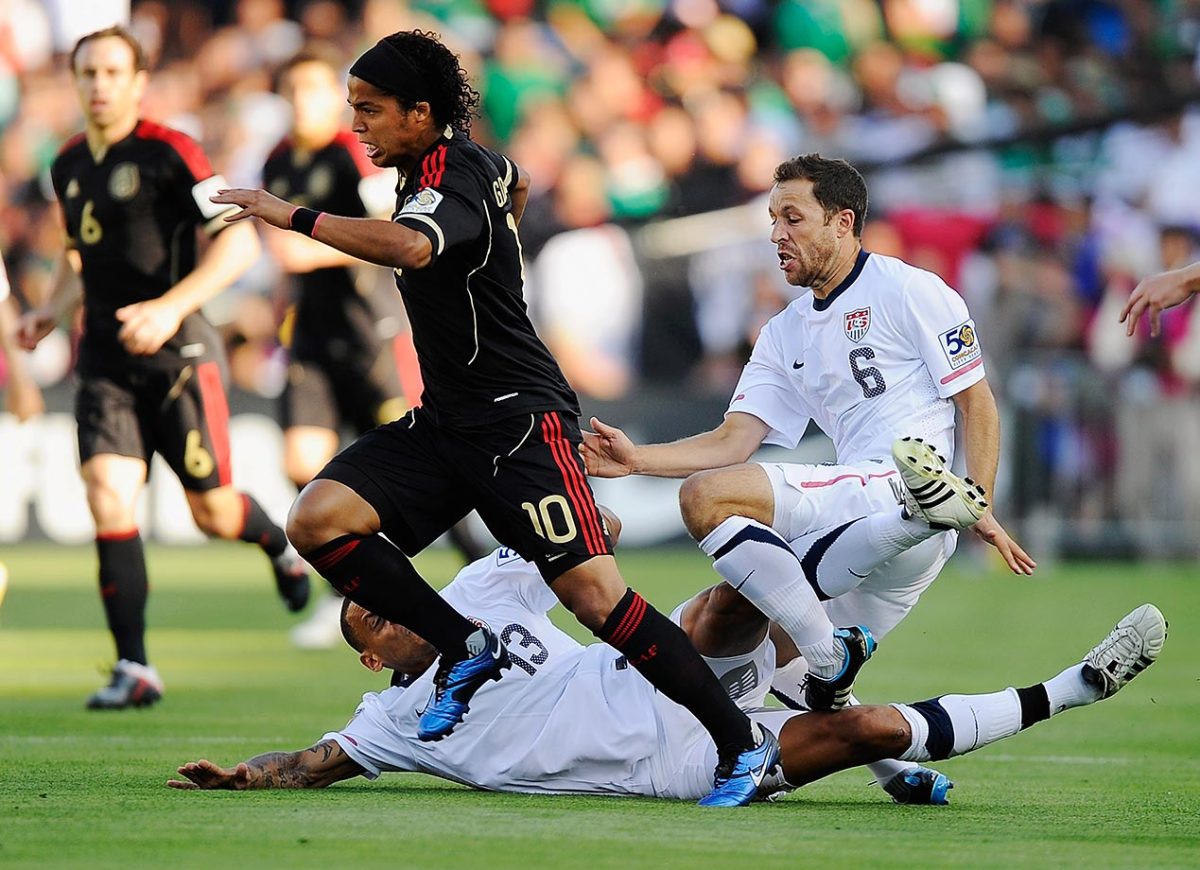
In the Gold Cup final, Mexico captured its second straight title in the battle for CONCACAF bragging rights and secured a berth in the 2013 Confederations Cup. Pablo Barrera scored twice; Giovani Dos Santos and Andres Guardado also had goals. The U.S. was up 2-0 early on Michael Bradley and Landon Donovan goals, but poor defending (partially due to the loss of Steve Cherundolo by injury) doomed the Americans.
August 12, 2009 — Mexico 2, USA 1
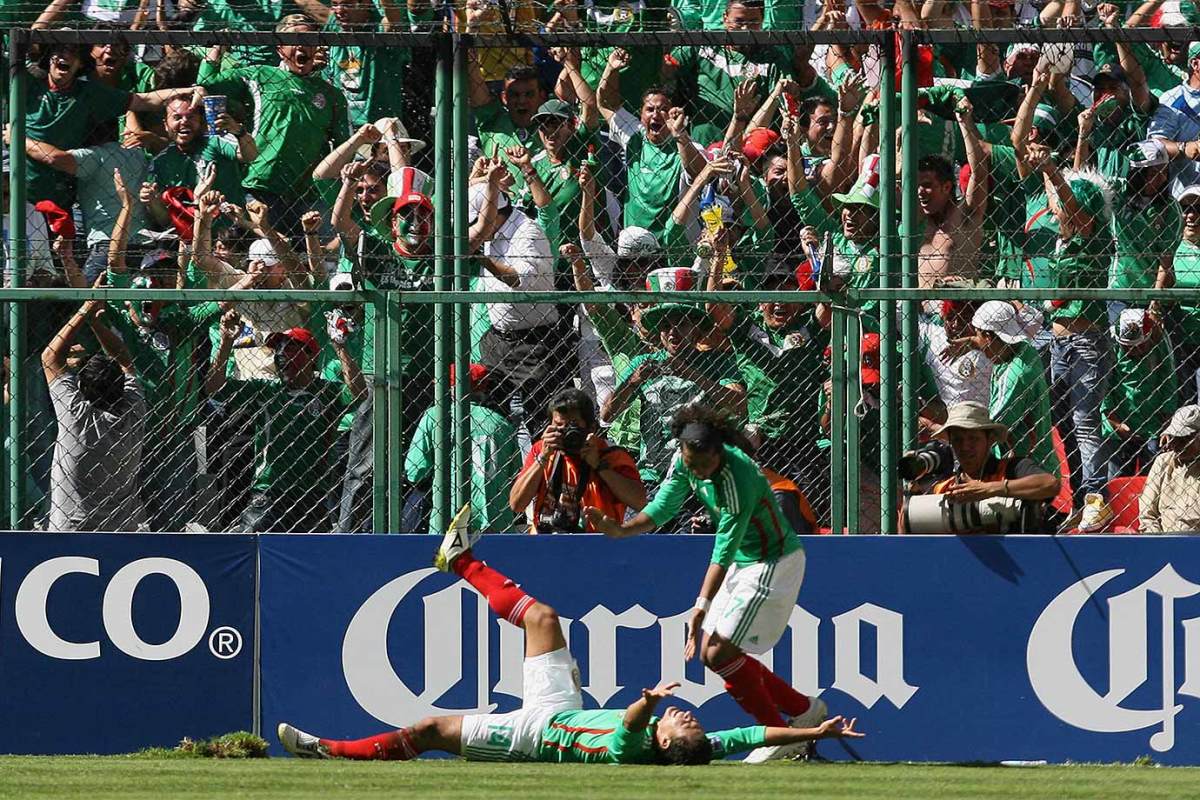
The U.S. took its first-ever lead at Azteca Stadium, but went on to lose 2-1 in what was a critical World Cup qualifier for Mexico. The win changed the tide for the then-struggling Mexican squad, as it went on to go 3-0-1 in its next four matches to earn a trip to South Africa. The U.S. still went on to finish first in CONCACAF qualification.
July 26, 2009 — Mexico 5, USA 0
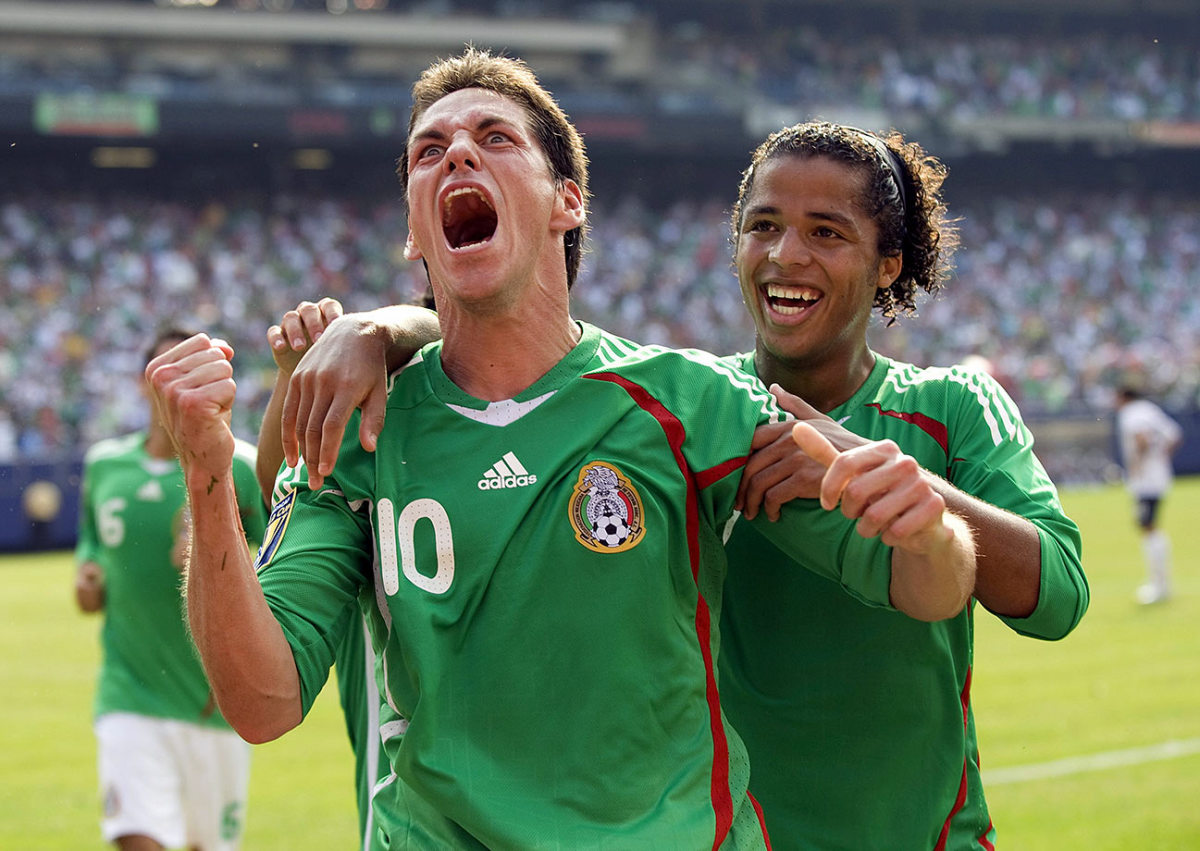
Mexico put an emphatic end to the Americans' 9-0-2 home streak against "El Tri." The Mexicans took the Gold Cup from the two-time defending champion, with five different players scoring goals in the second half at Giants Stadium.
February 11, 2009 — USA 2, Mexico 0
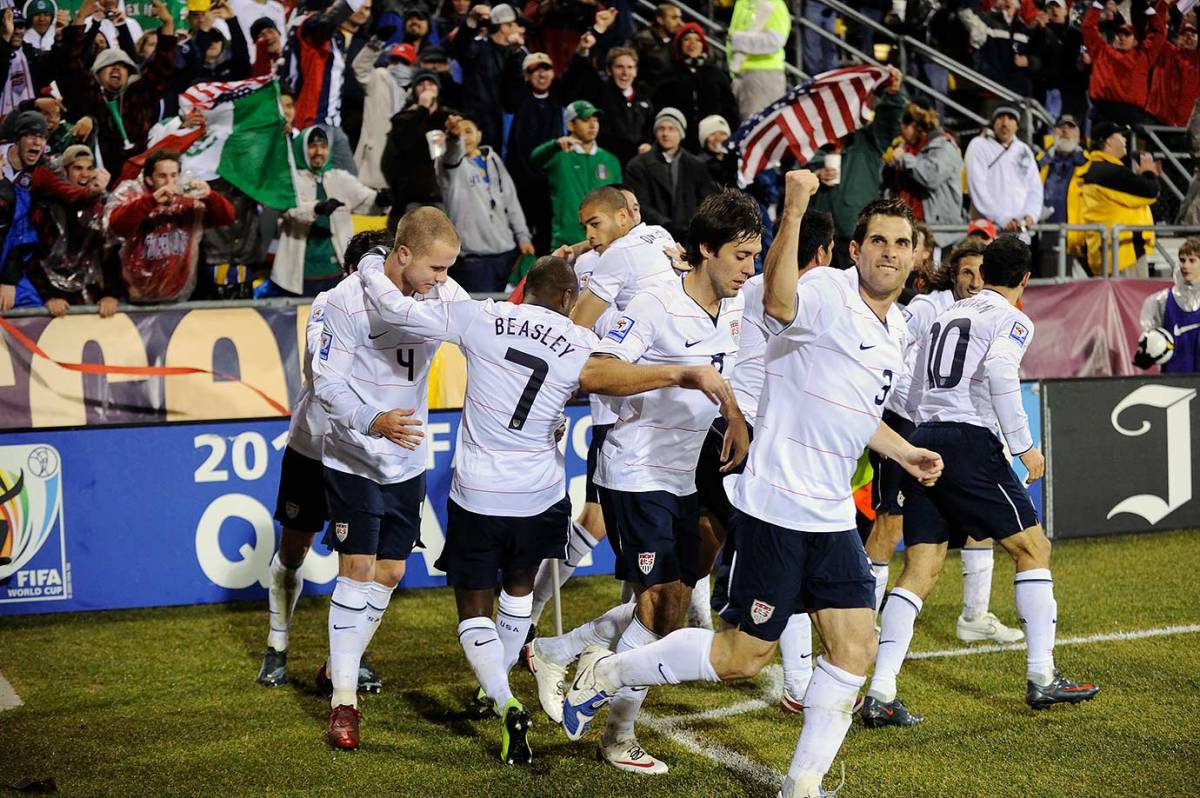
Two goals from Michael Bradley gave the U.S. another home victory over Mexico. It marked the eleventh consecutive time that the Americans had gone unbeaten against Mexico when playing on U.S. soil.
June 24, 2007 — USA 2, Mexico 1
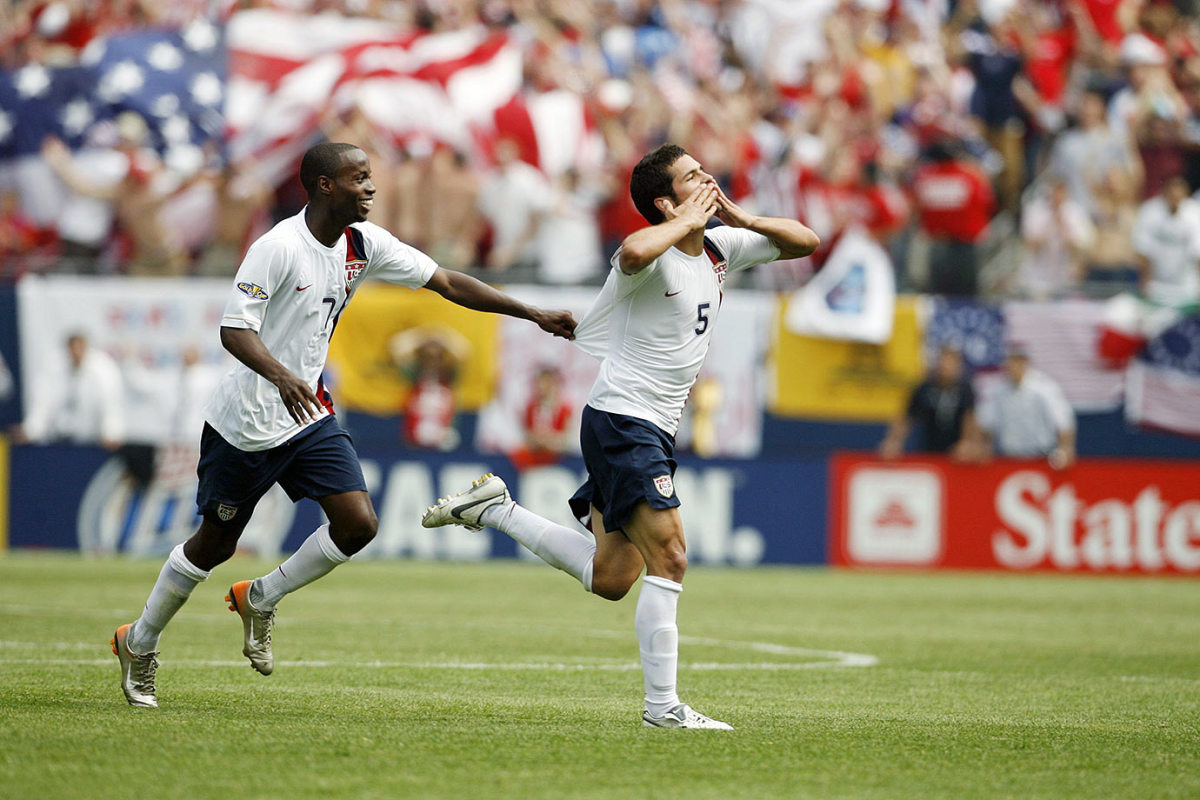
Down 1-0, second-half goals from Landon Donovan and Benny Feilhaber gave the U.S. the victory in the 2007 Gold Cup finals. The win earned the Americans a spot in the 2009 Confederations Cup, where they achieved their famous upset over Spain.
September 3, 2005 — USA 2, Mexico 0
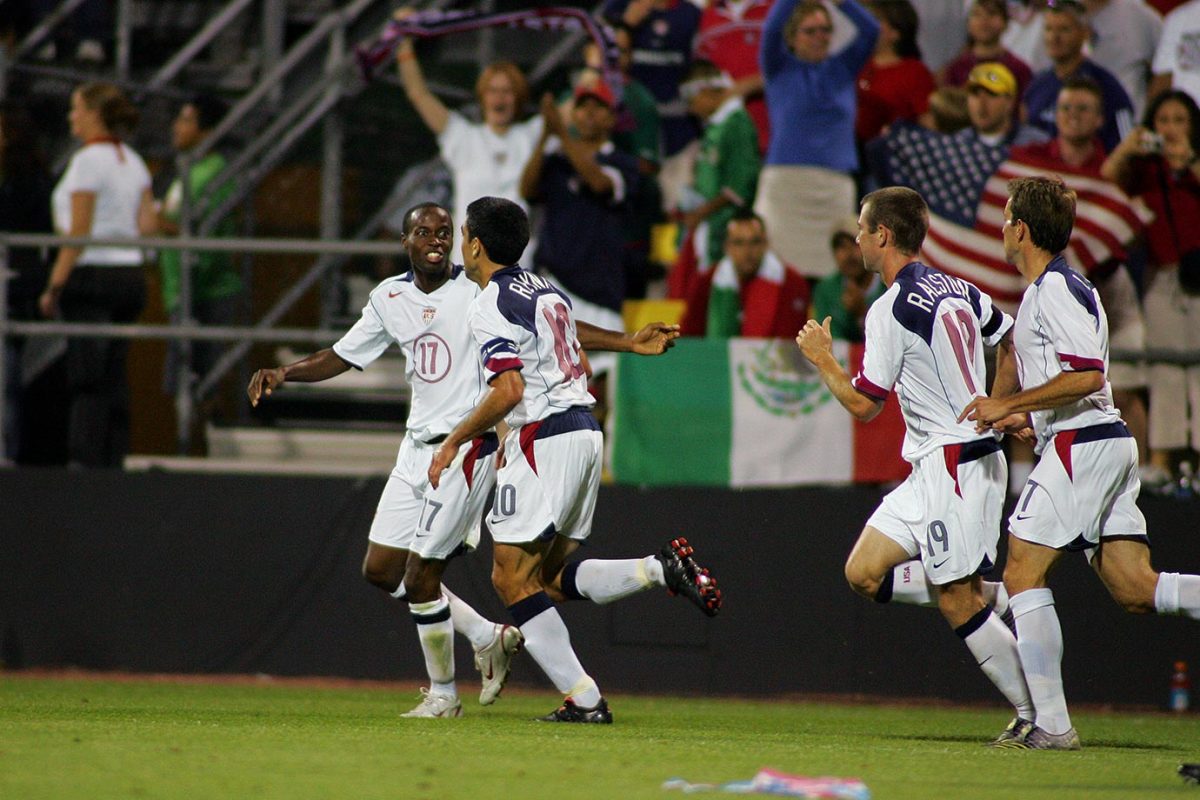
A 2-0 victory over "El Tri" clinched a spot in the 2006 World Cup, with goals coming from Steve Ralston and DaMarcus Beasley.
May 8, 2003 — USA 0, Mexico 0
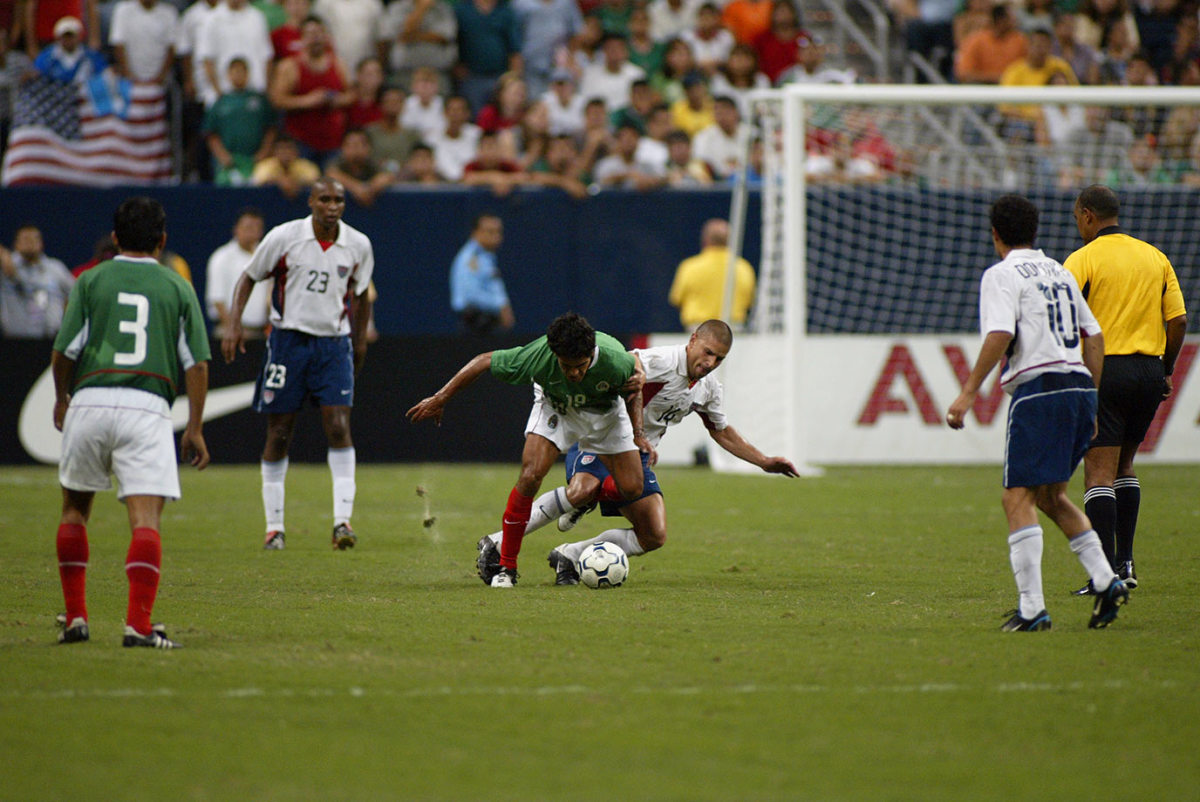
In their first meeting since the 2002 World Cup, an all-MLS squad of Americans played Mexico to a 0-0 draw in front of more than 69,000 people in Houston.
June 17, 2002 — USA 2, Mexico 0
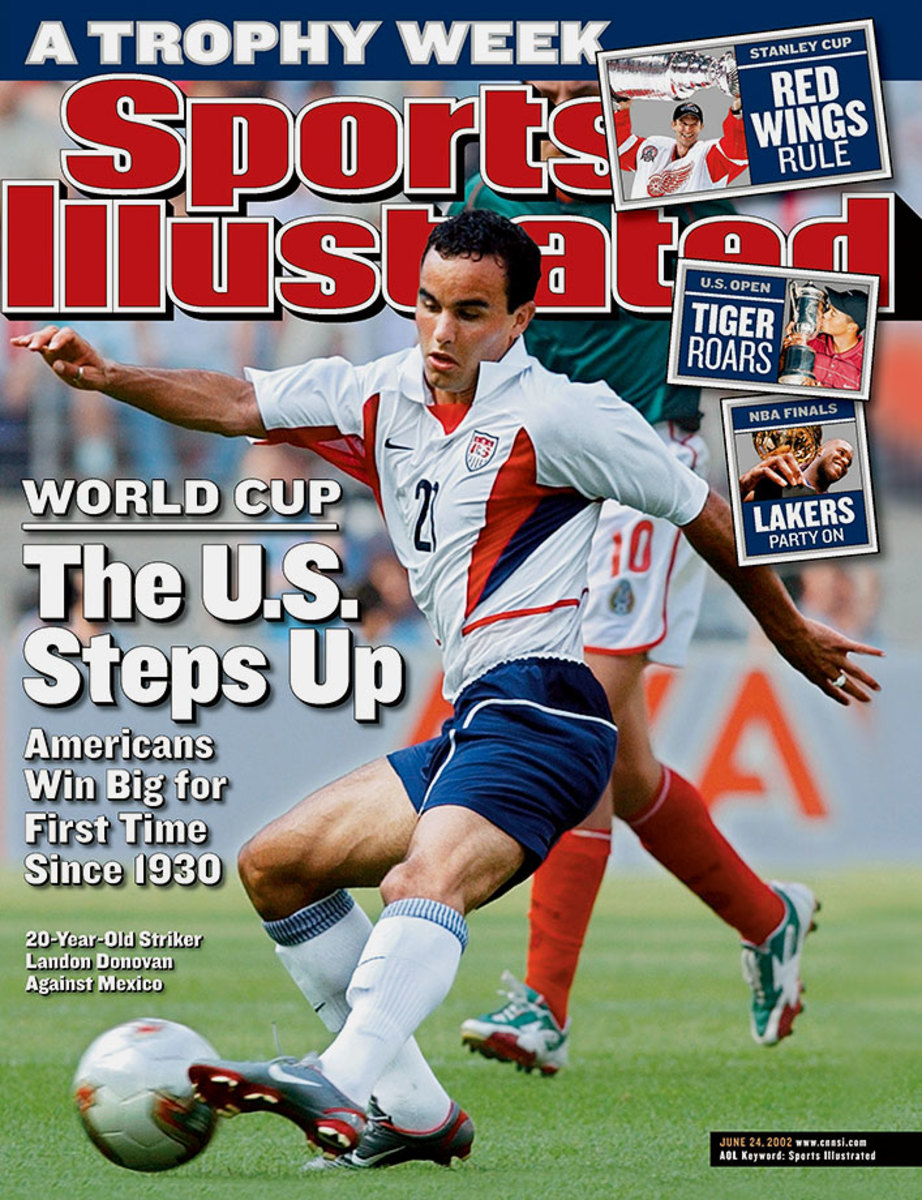
Arguably the biggest win in U.S. soccer team history came against its archrivals at the 2002 World Cup. Brian McBride and Landon Donovan gave the Americans a 2-0 victory in South Korea to send their team to the quarterfinals. It is the furthest stage the team has reached in the World Cup since 1930.
July 1, 2001 — Mexico 1, USA 0
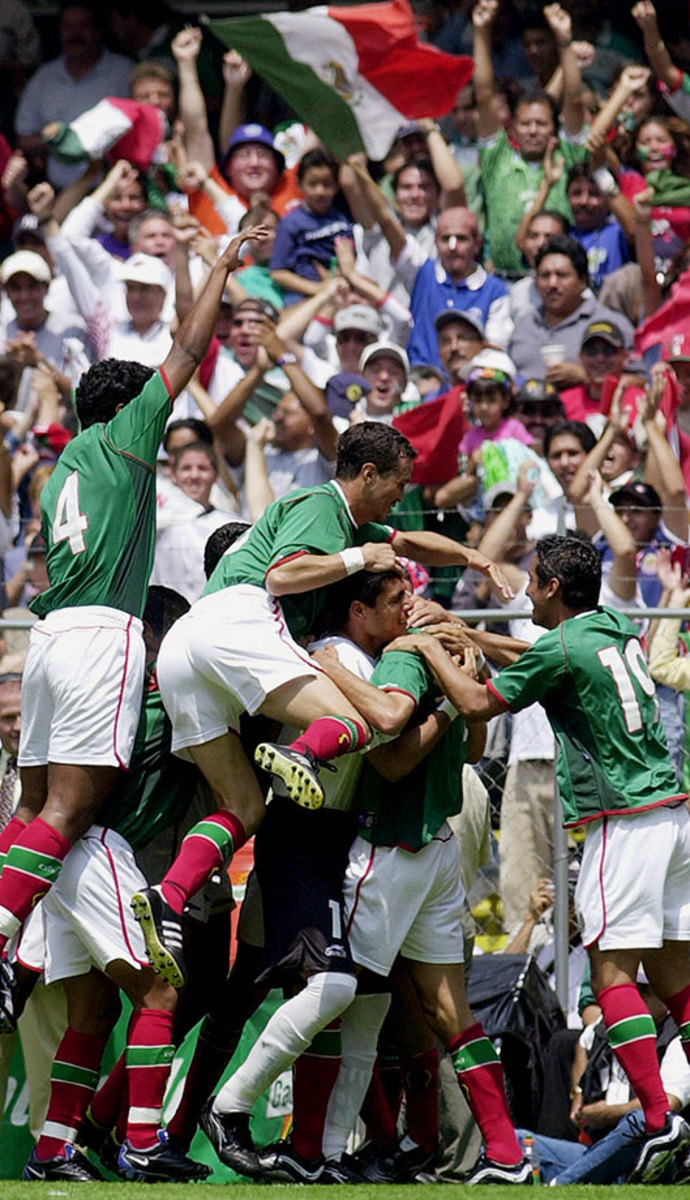
Needing a win to stay in contention for the 2002 World Cup, the Mexicans won 1-0 at Azteca Stadium, making their record 21-0-1 when hosting the Americans.
February 28, 2001 — USA 2, Mexico 0
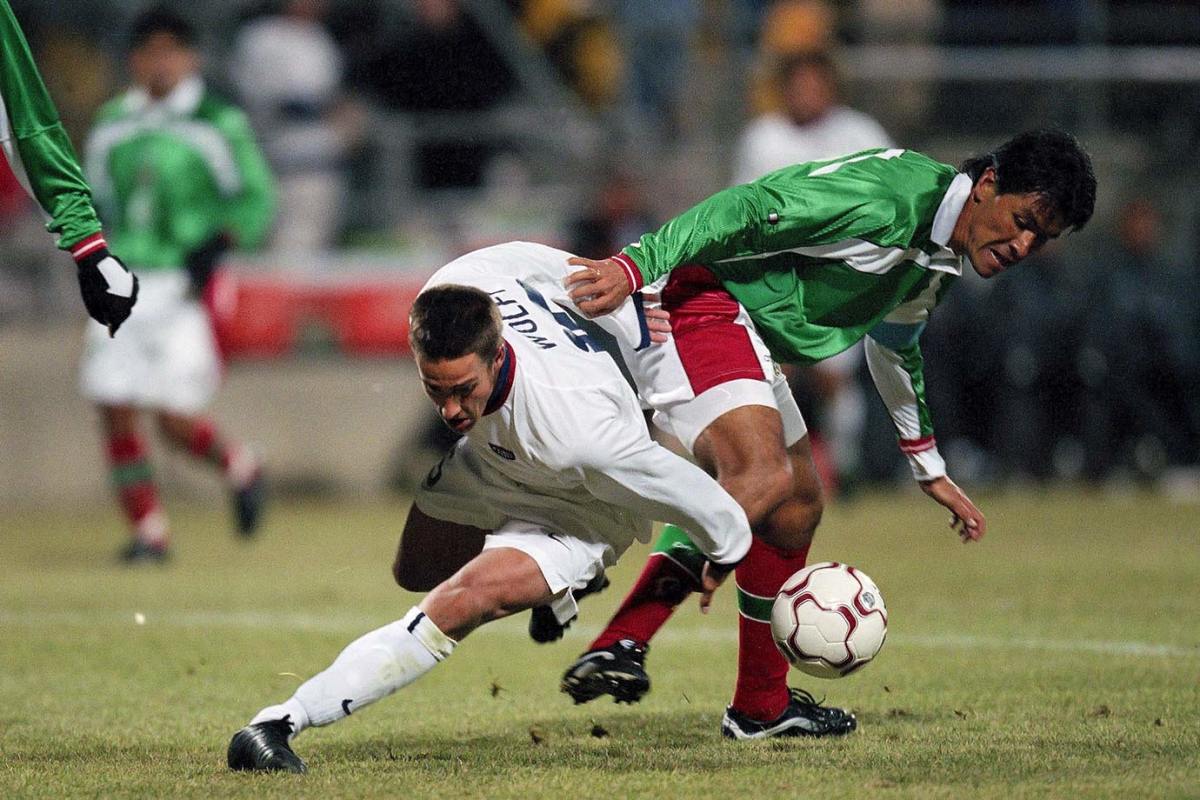
For the first time ever, the Americans won their third consecutive game against Mexico. The victory came in the World Cup qualifying finals and was held in Columbus, Ohio.
August 1, 1999 — Mexico 1, USA 0
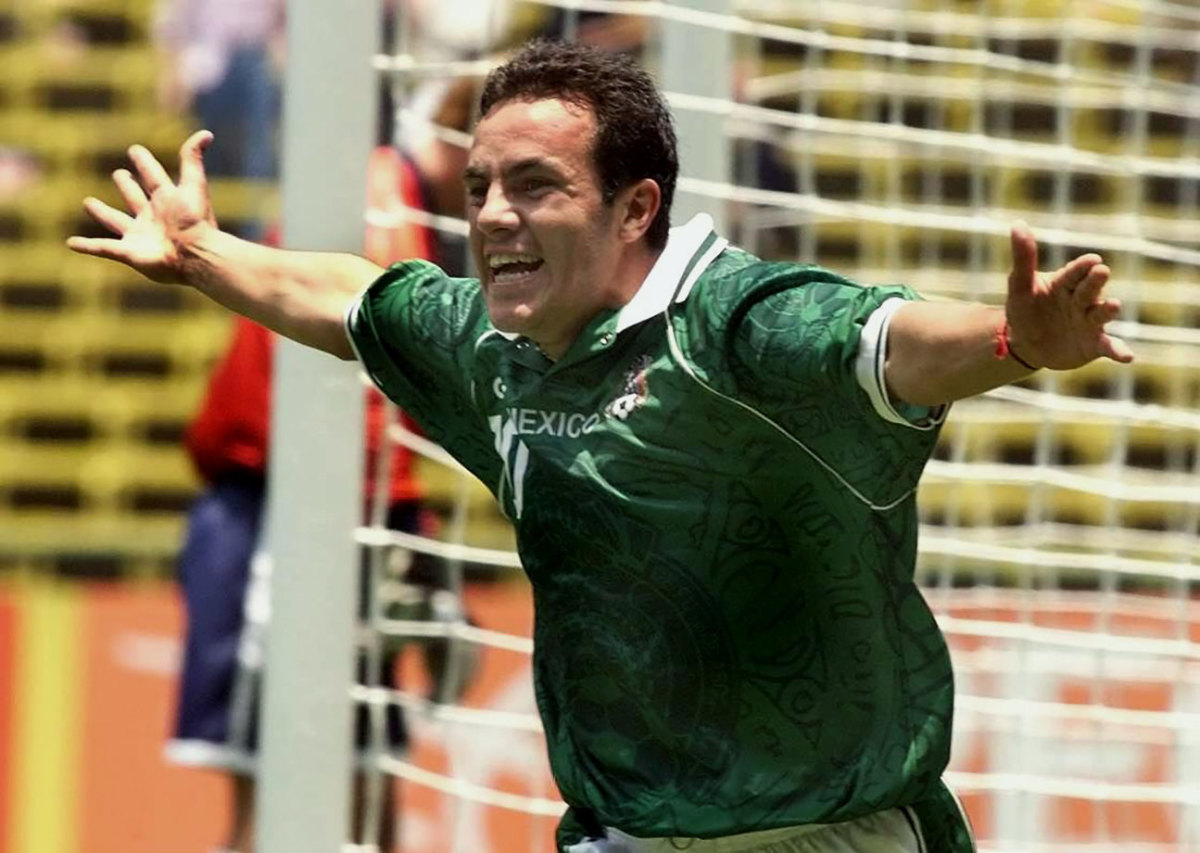
Cuauhtemoc Blanco's goal in extra time eliminated the U.S. in the semifinals of the 1999 Mexico City Confederations Cup. The win capped off a long tradition of Mexican dominance over the American side, a streak that shortly thereafter ended, as the Americans won the next three matches against their rivals.
July 17, 1995 — USA 0, Mexico 0
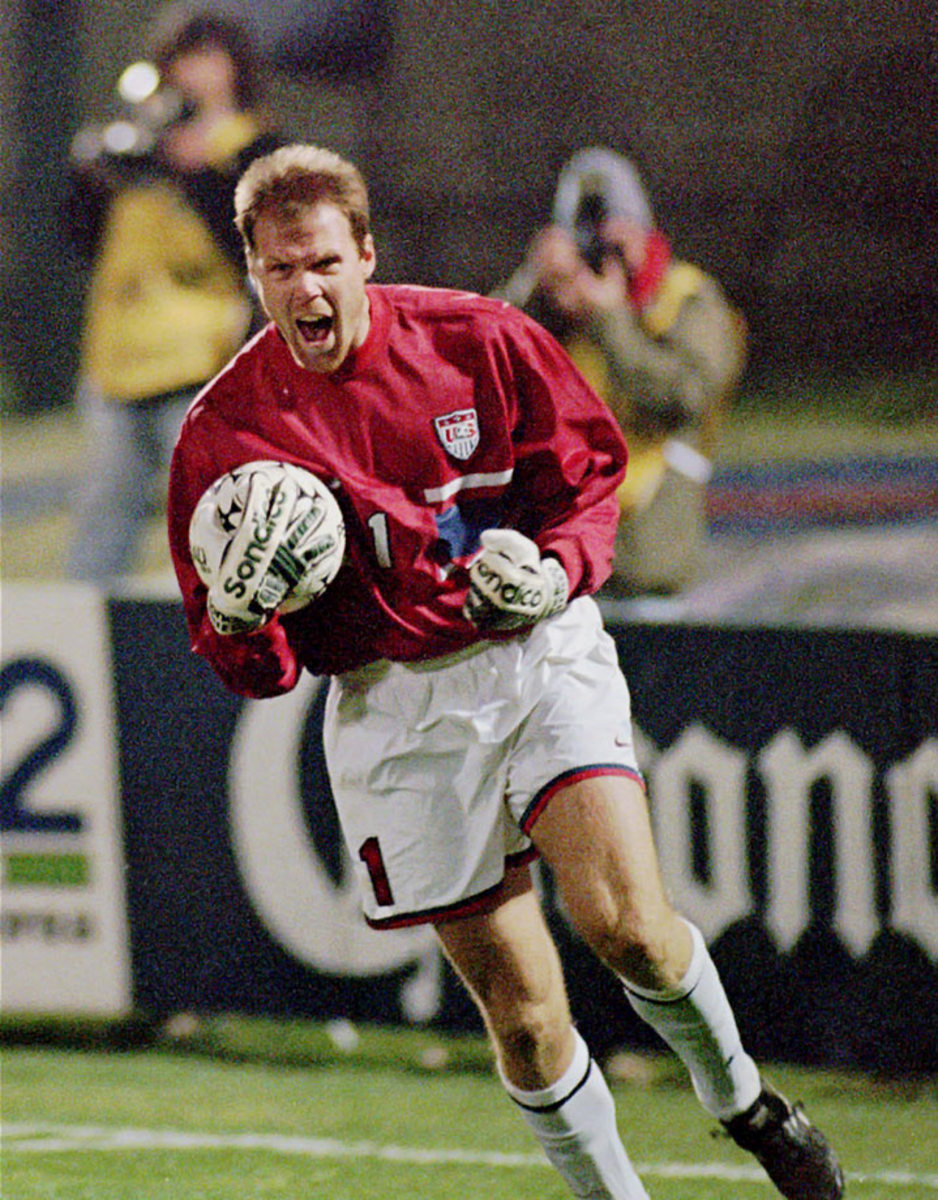
The USA outlasted Mexico in a penalty shootout to reach the semifinals of the 1995 Copa America. After a 0-0 draw, goalkeeper Brad Friedel was the hero in PKs, making two saves. The U.S. made all four of its attempts and advanced.
